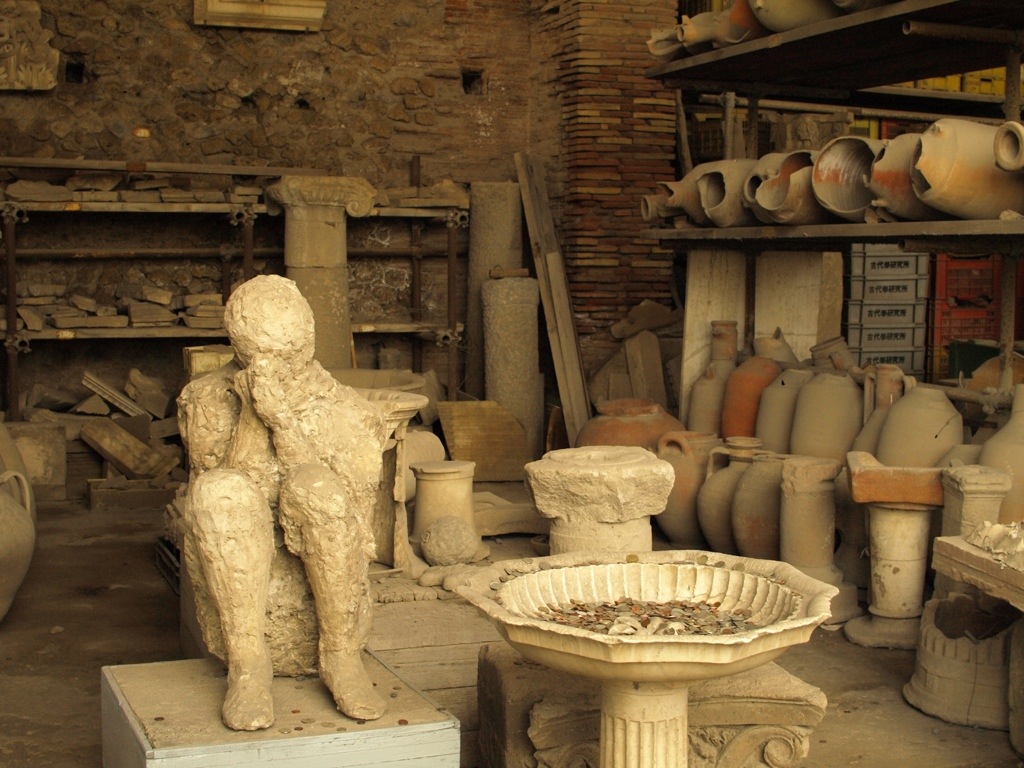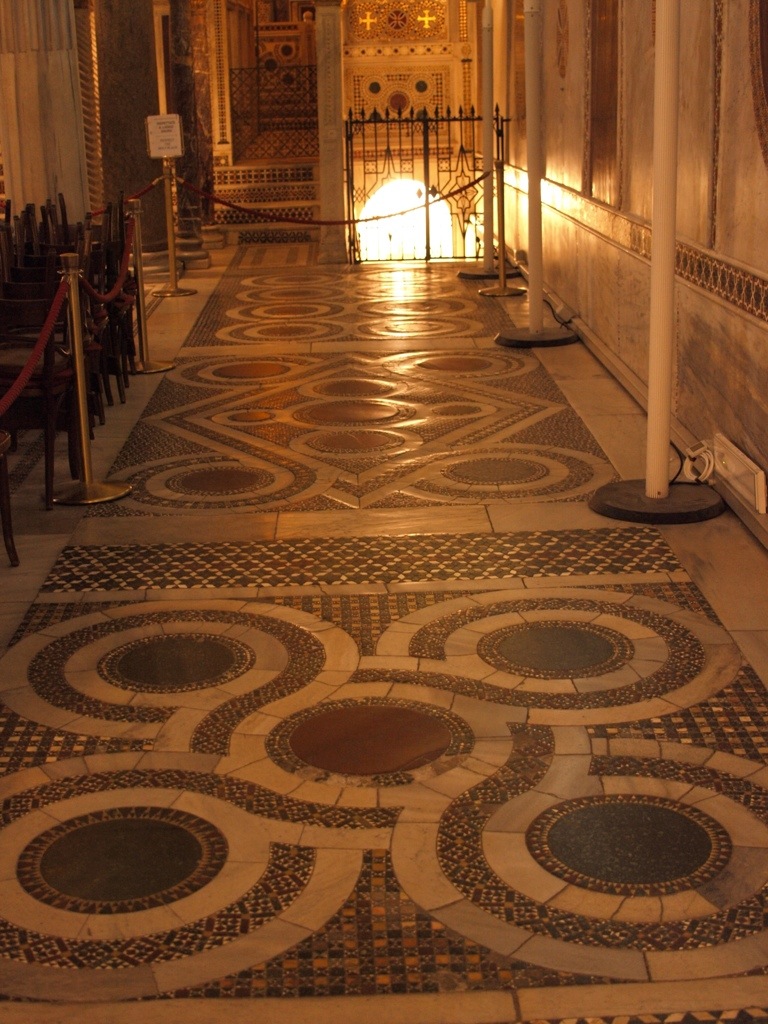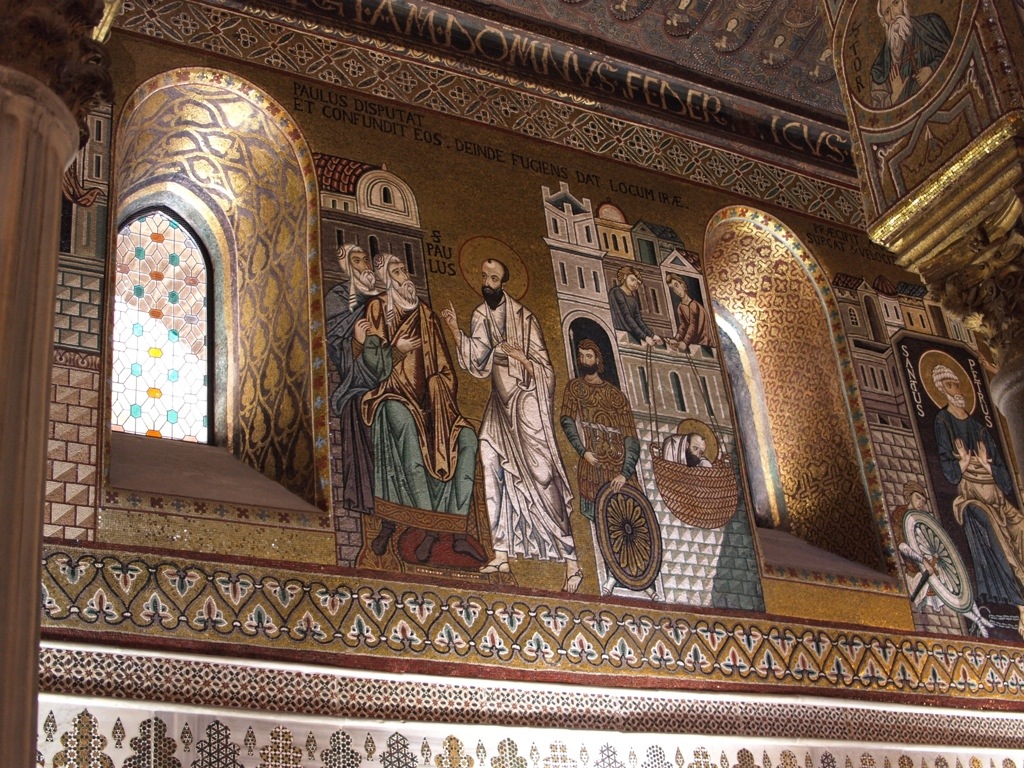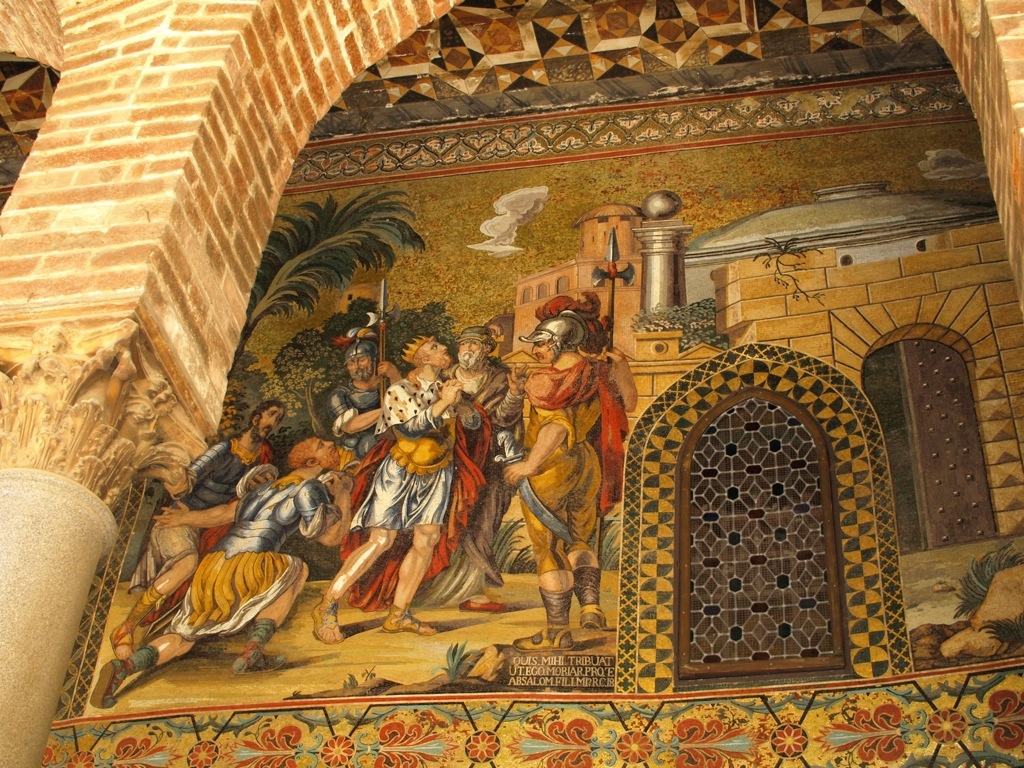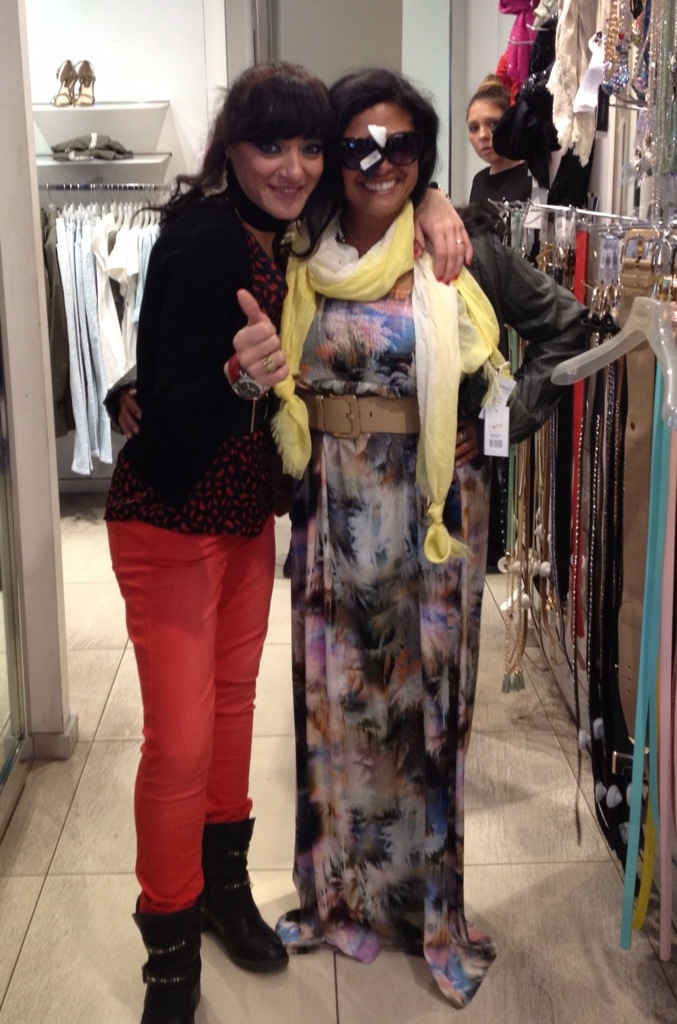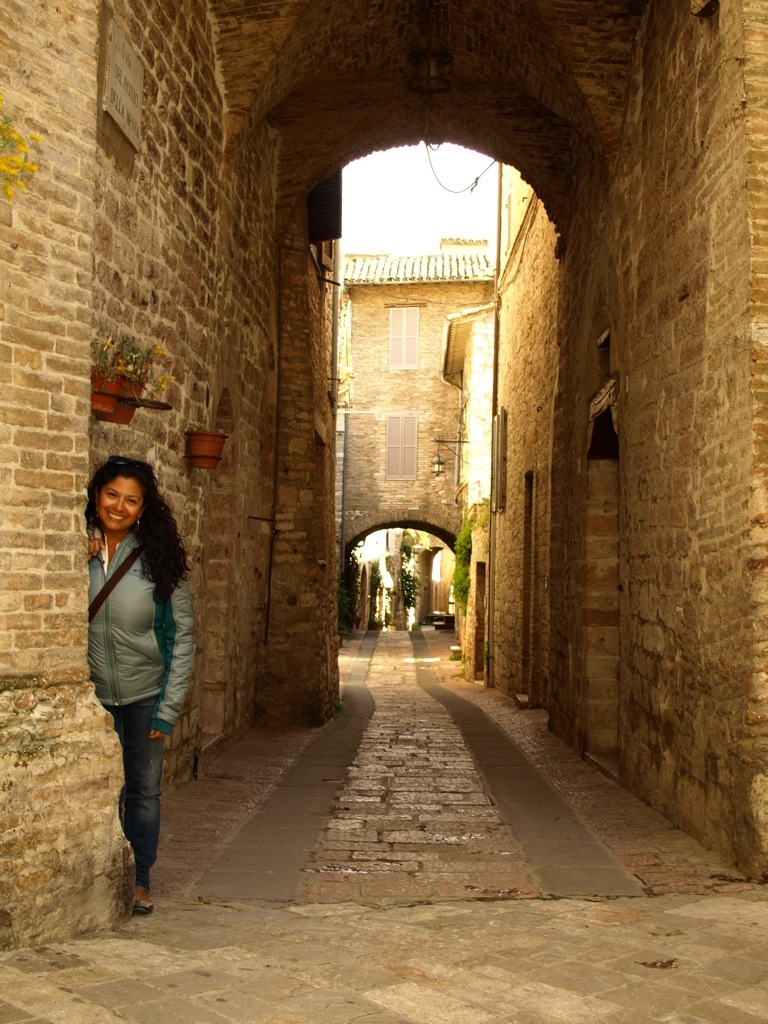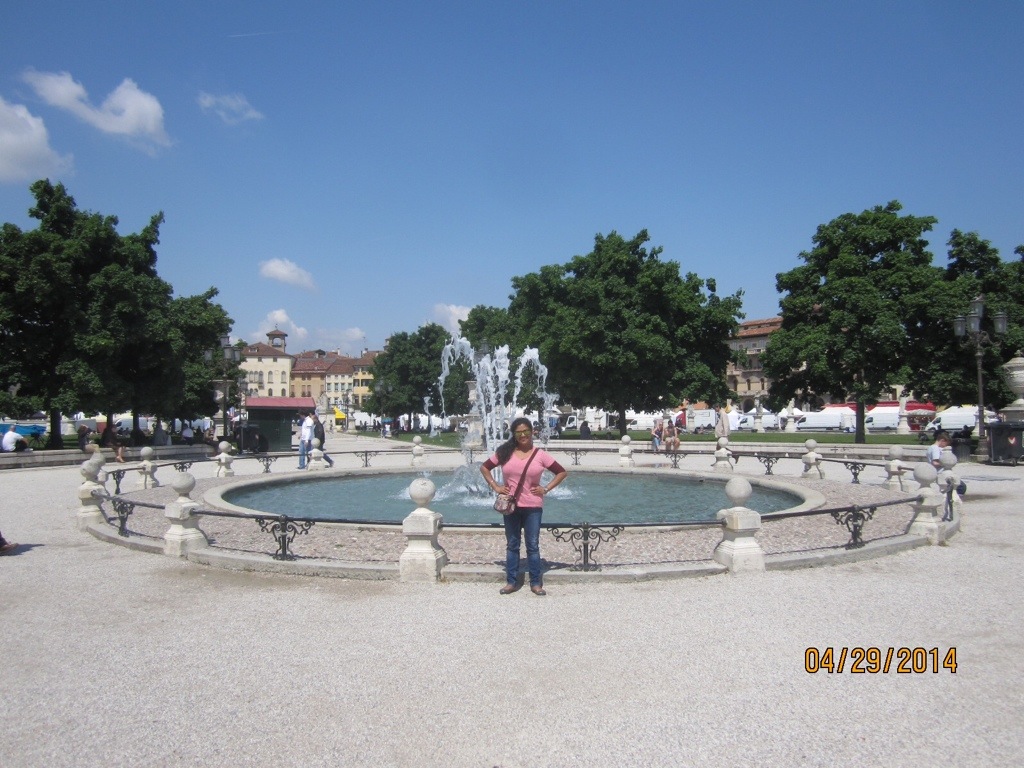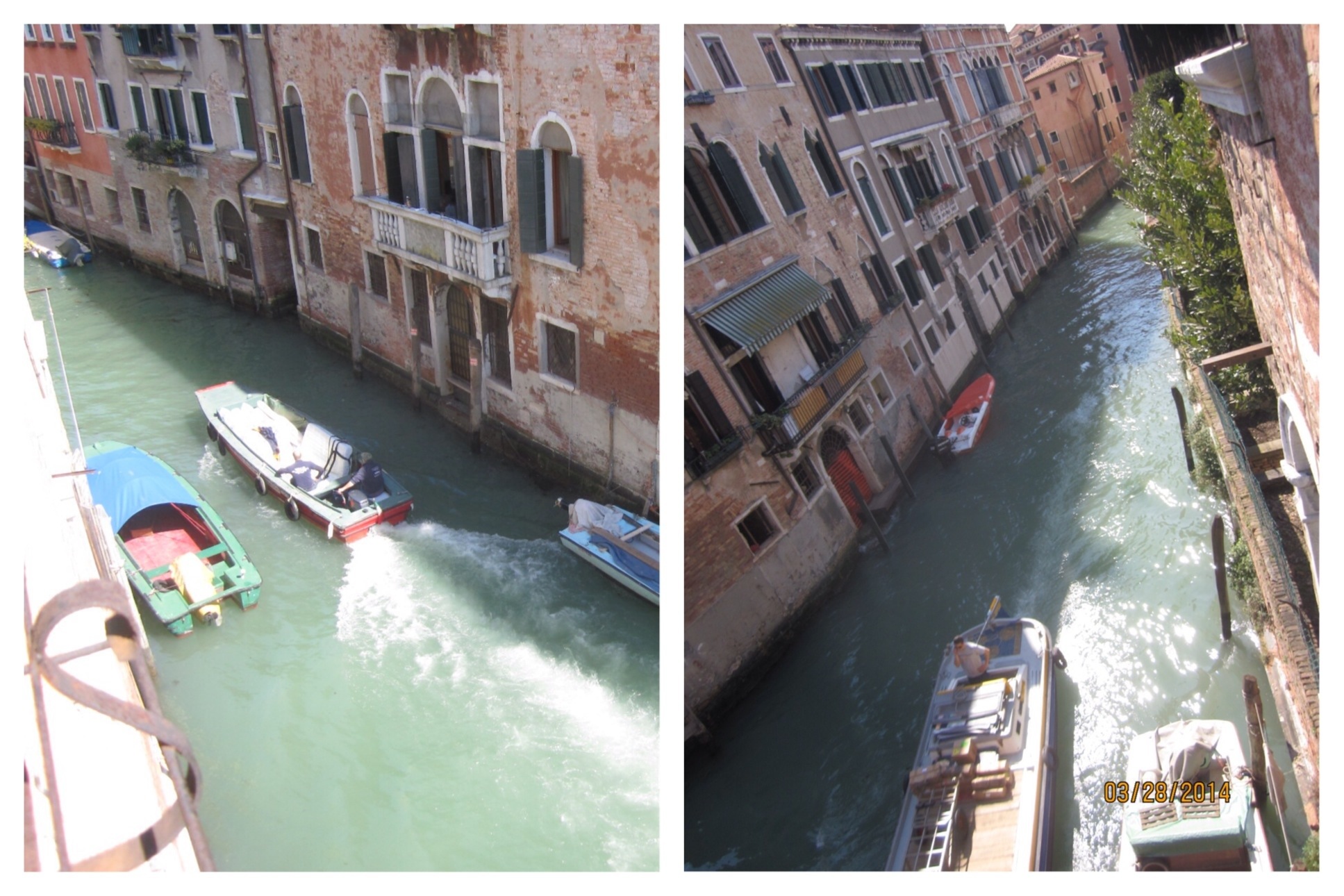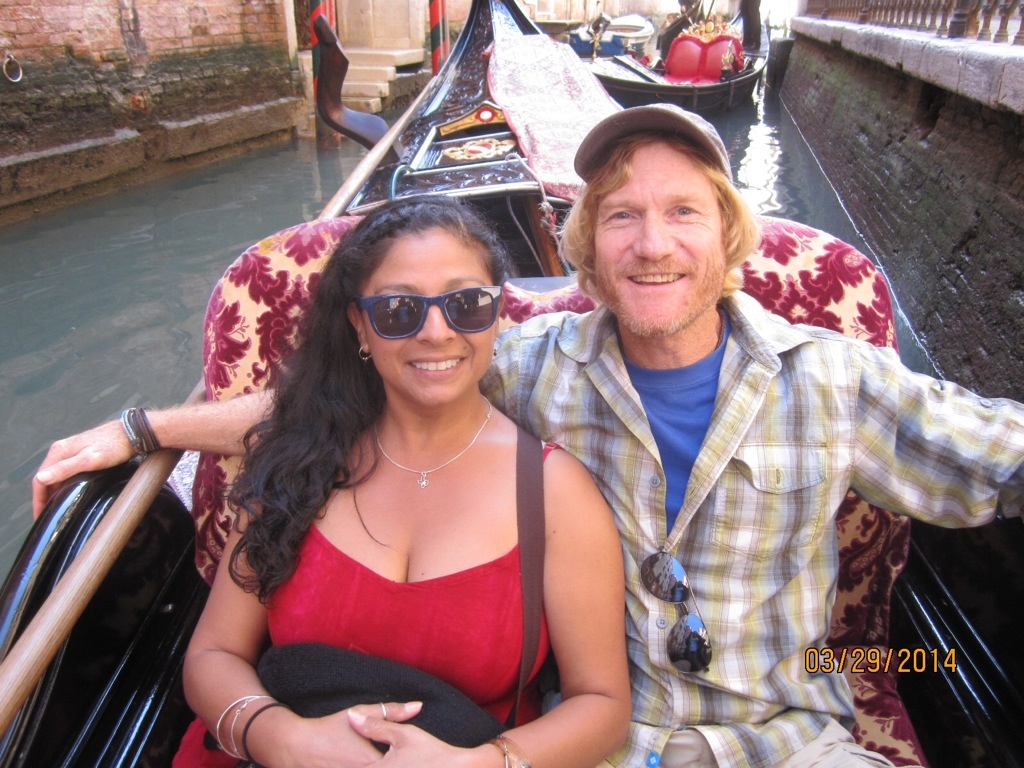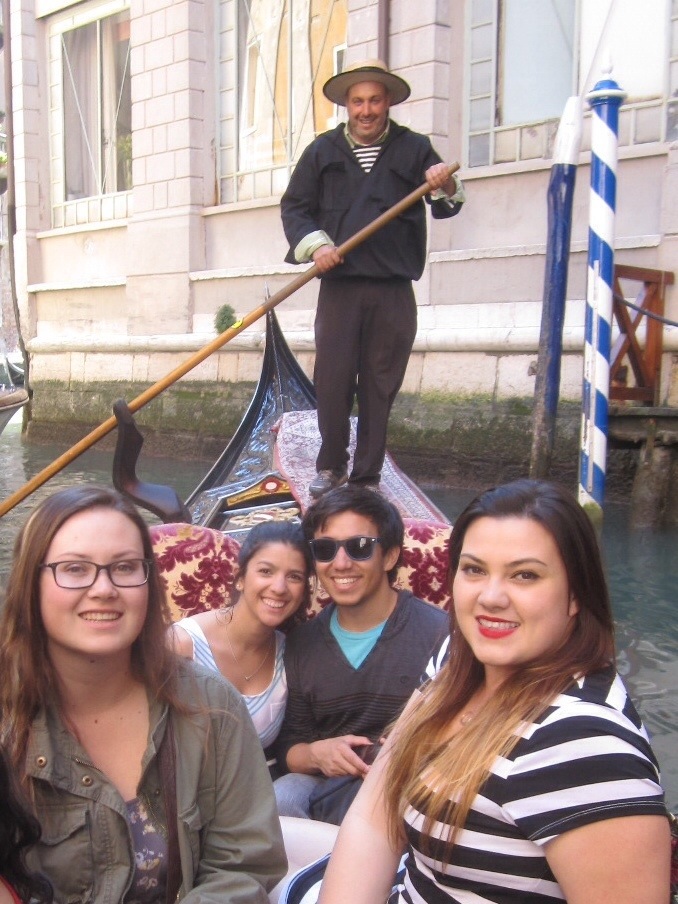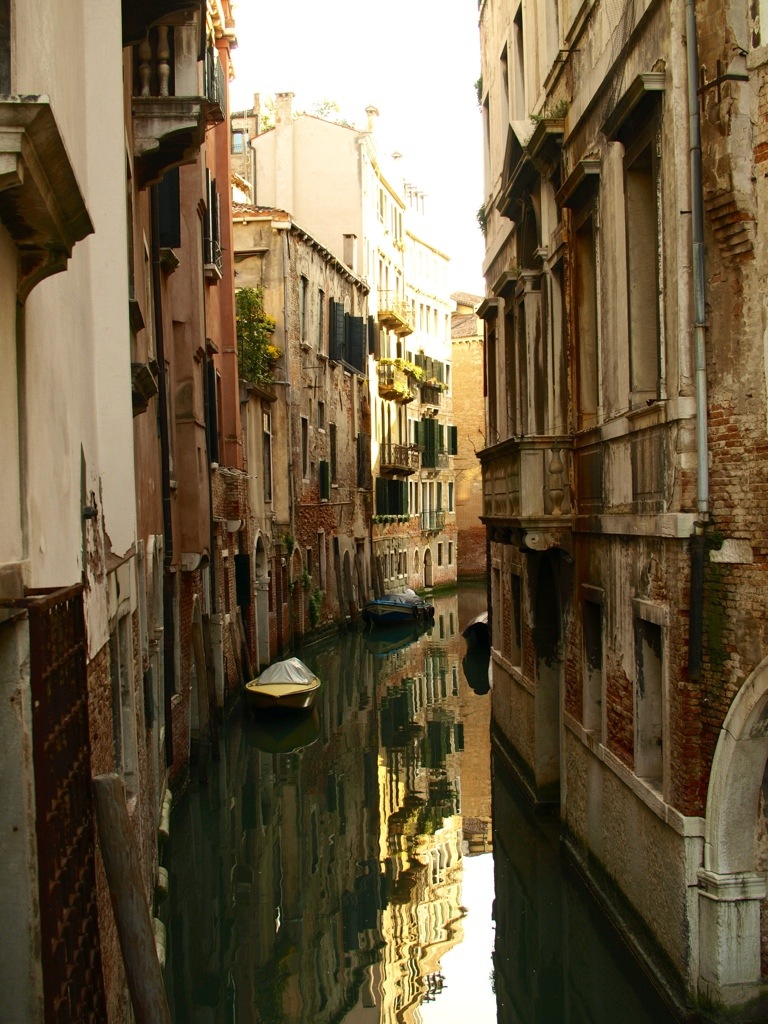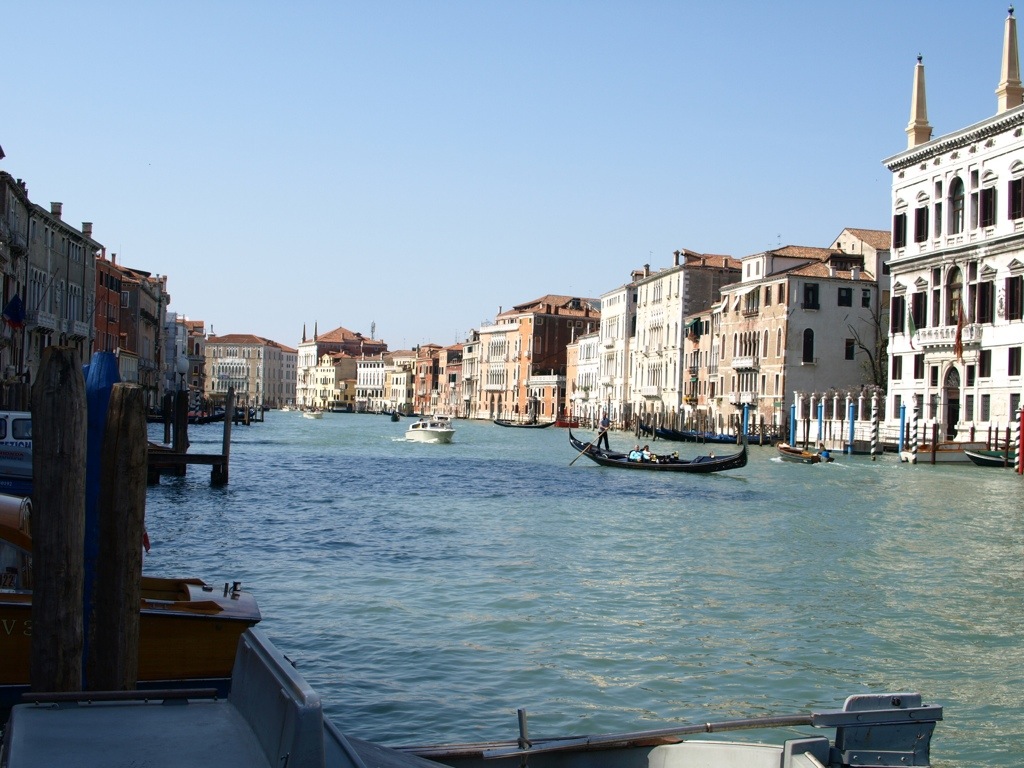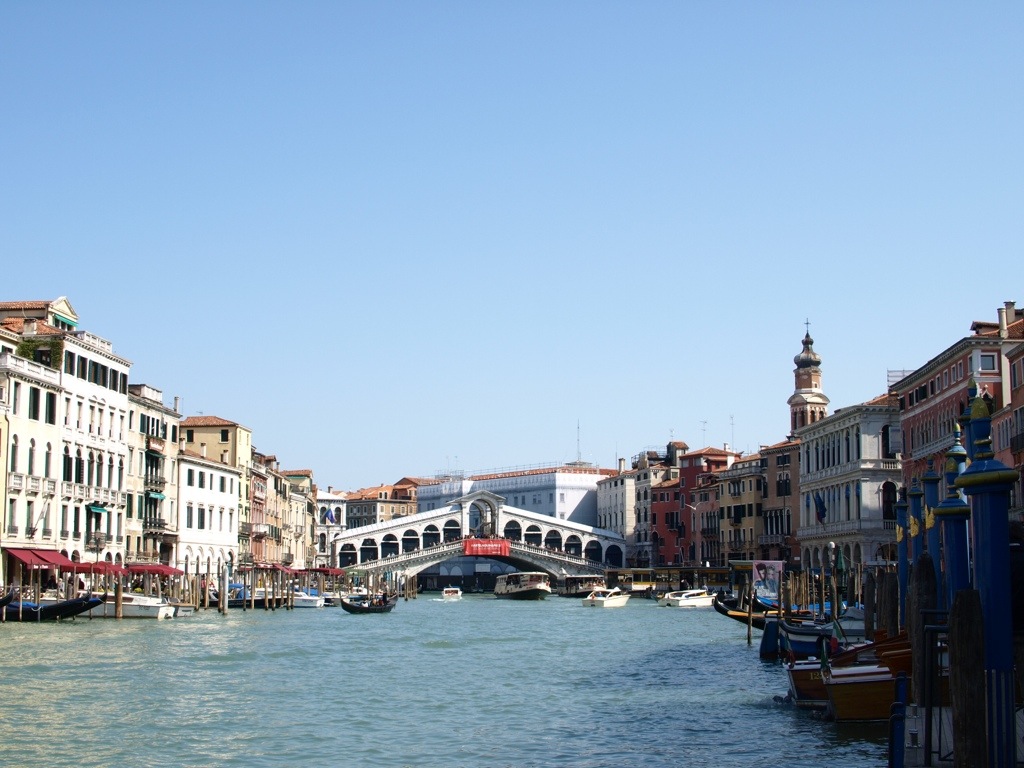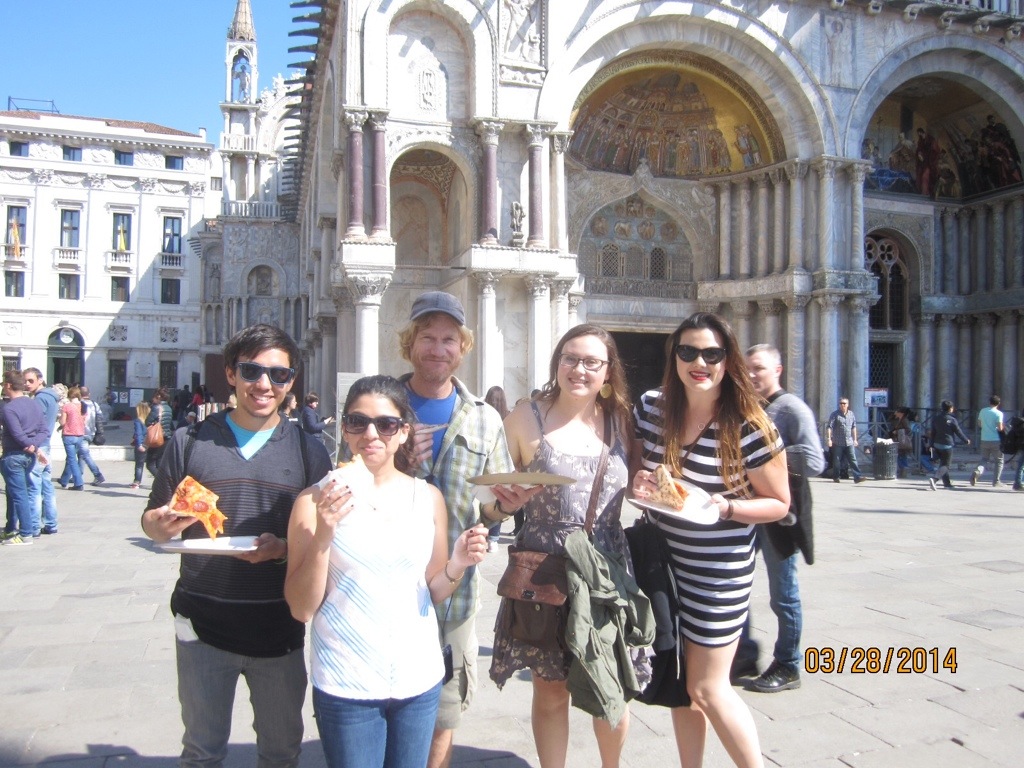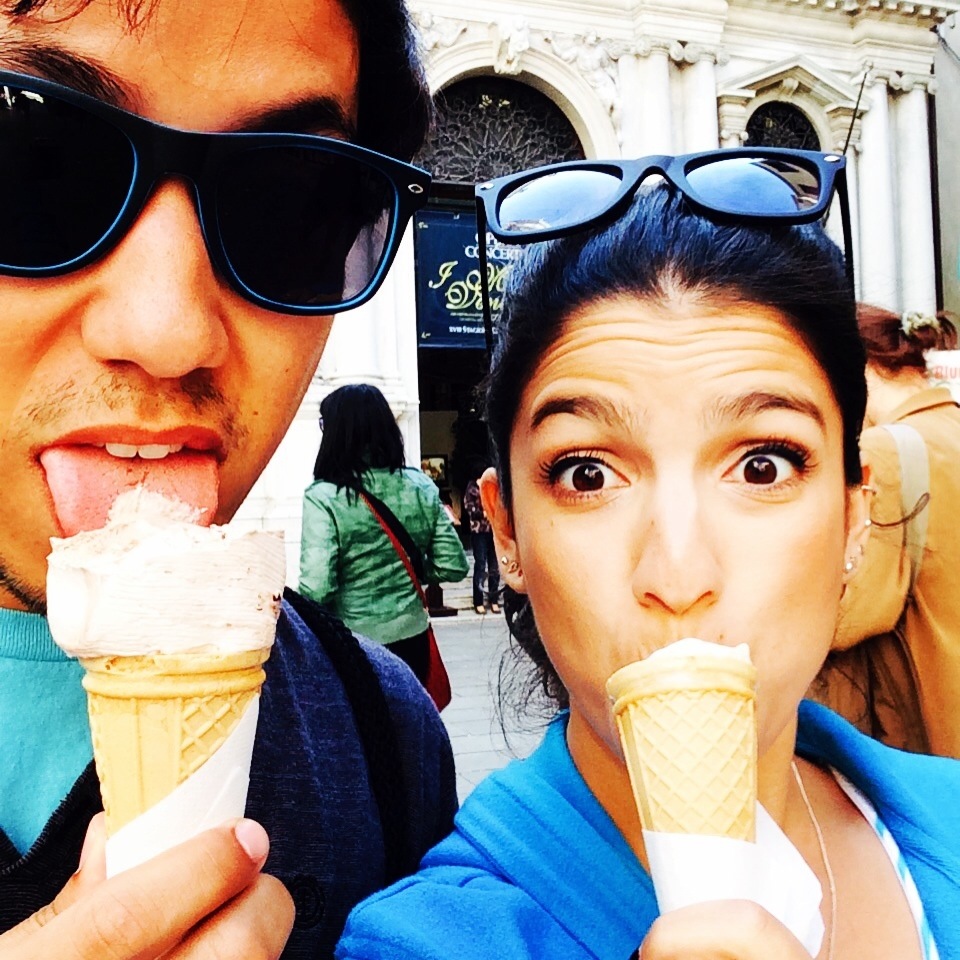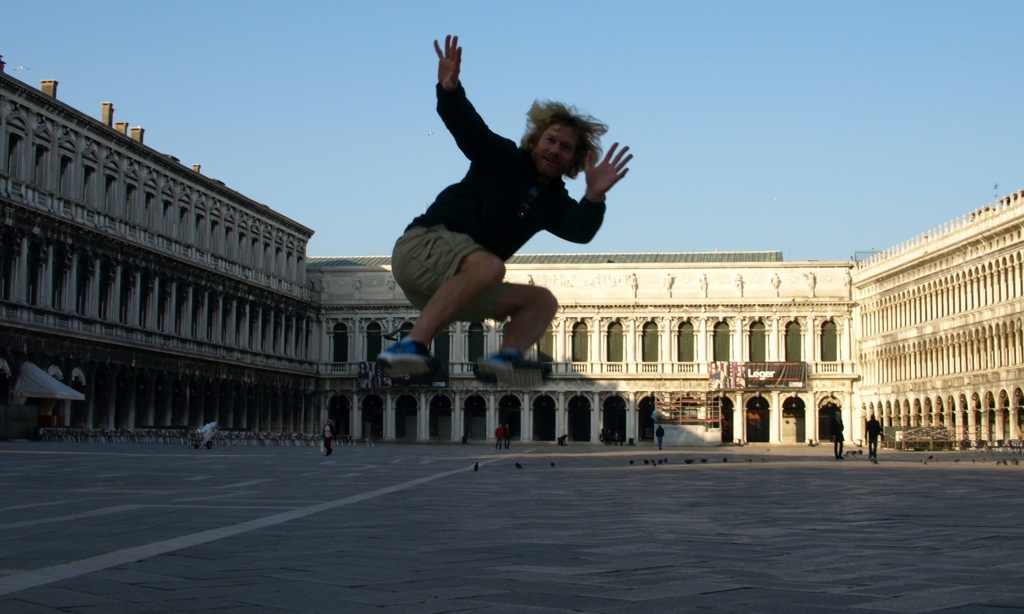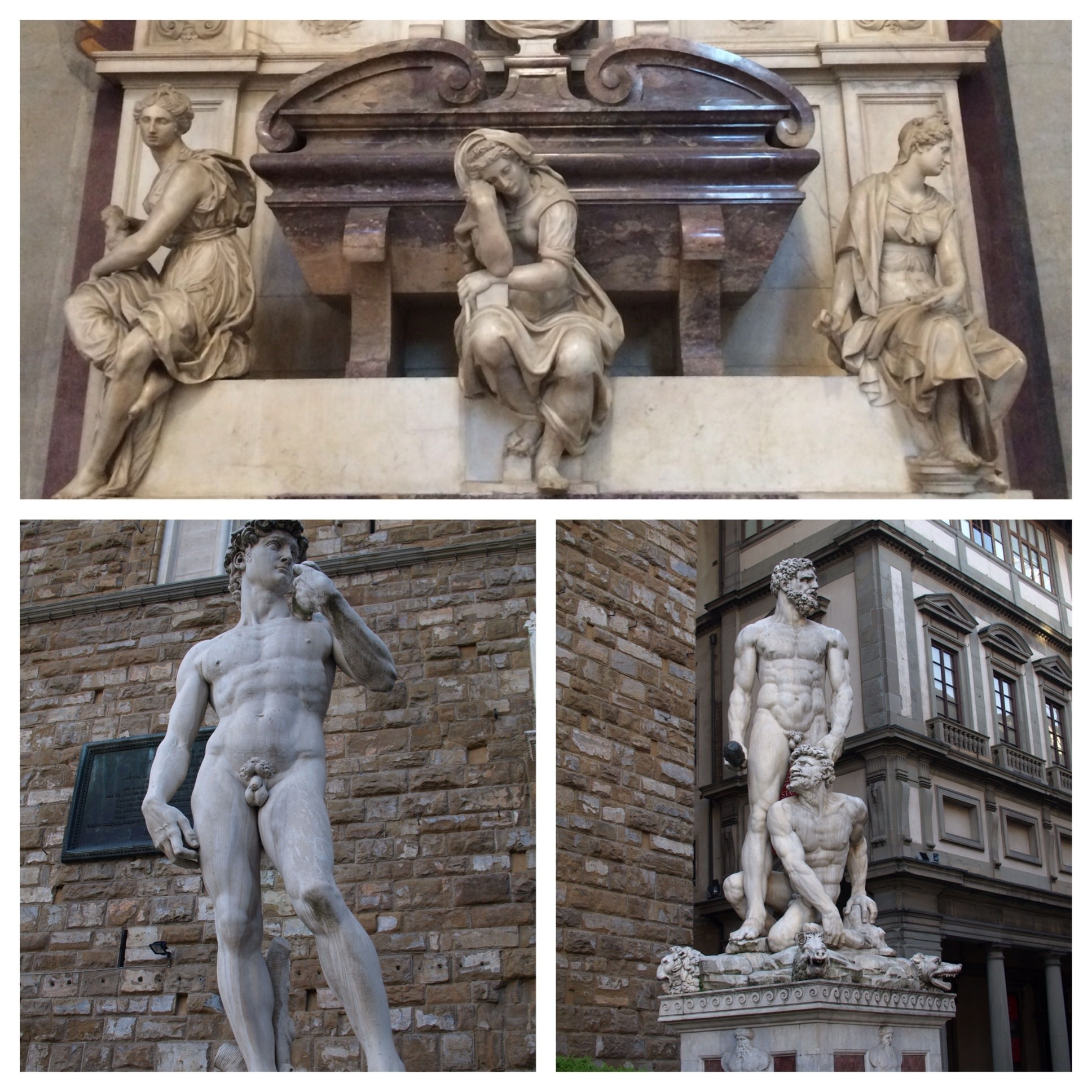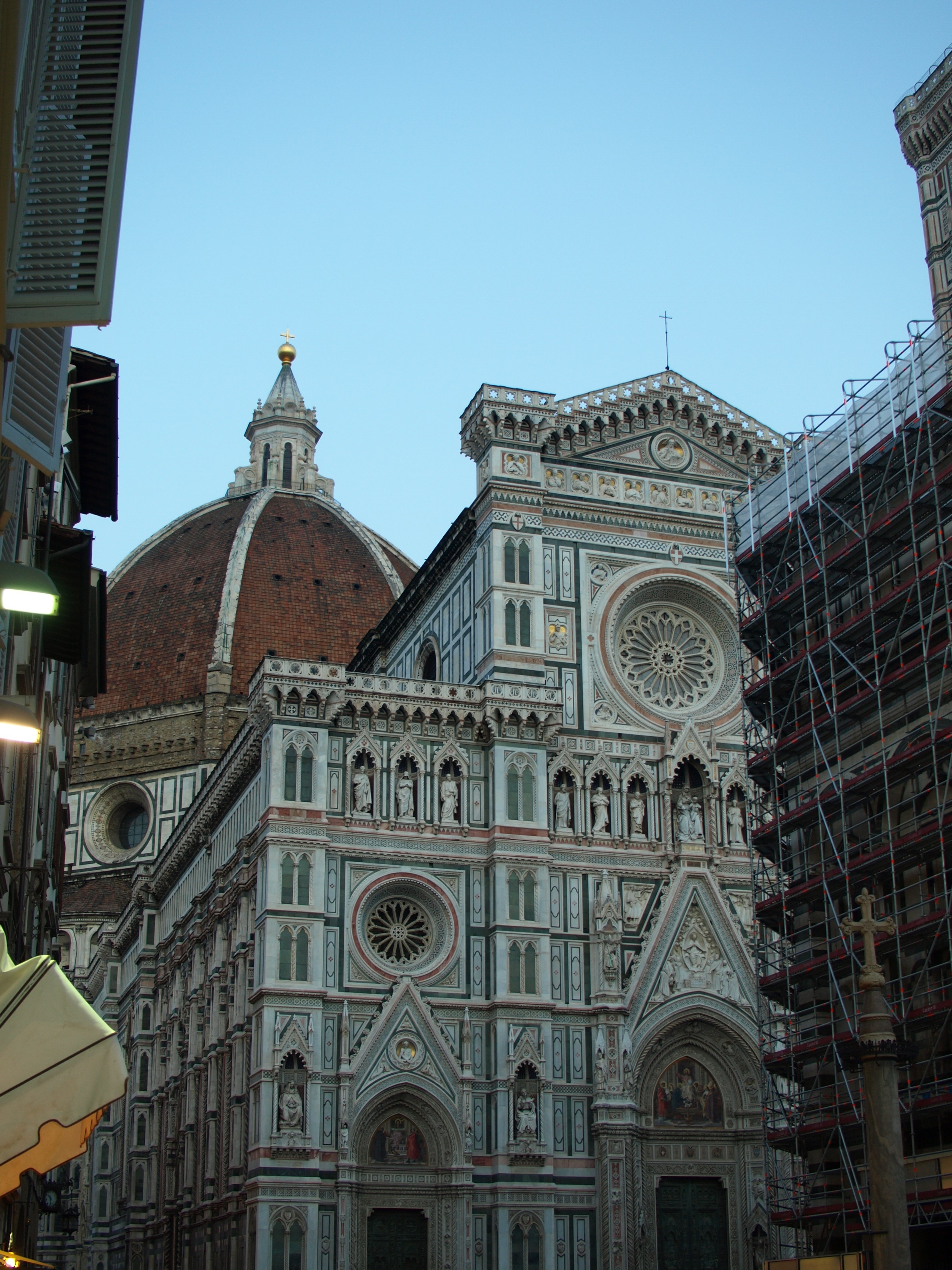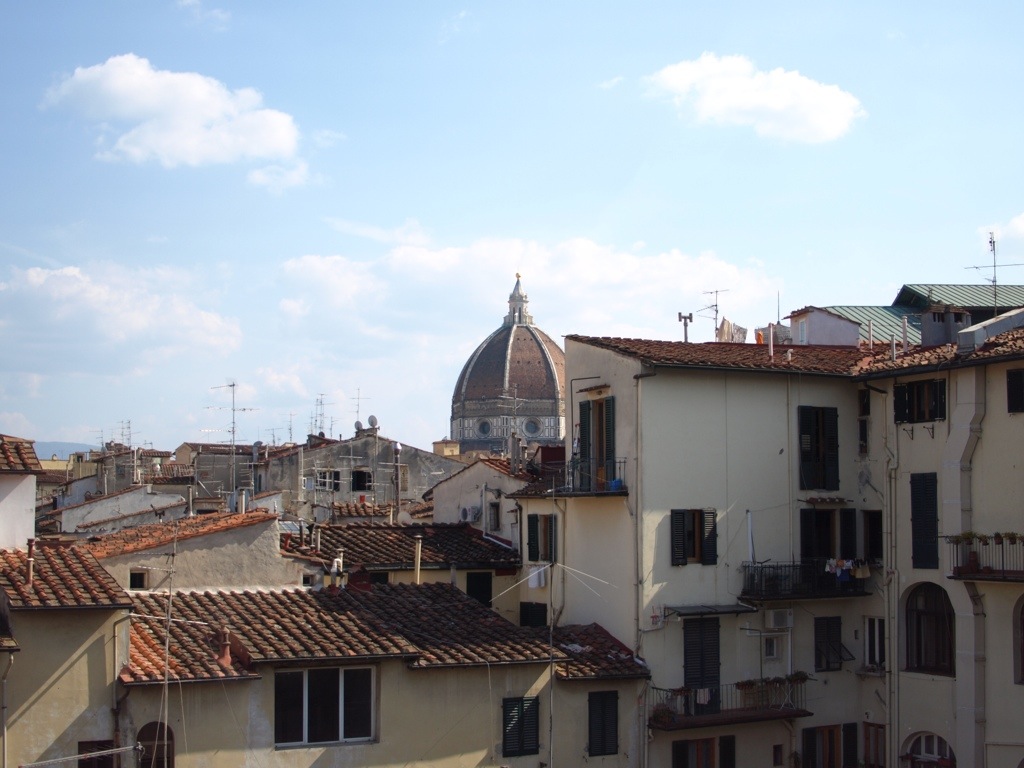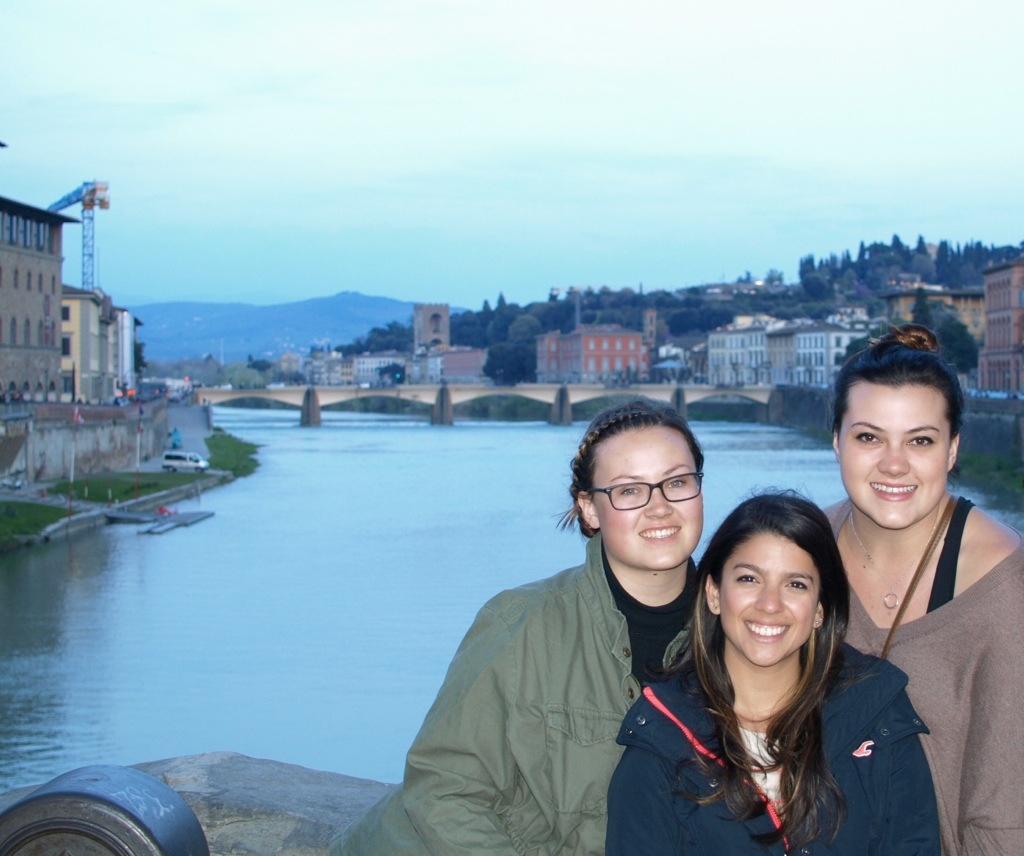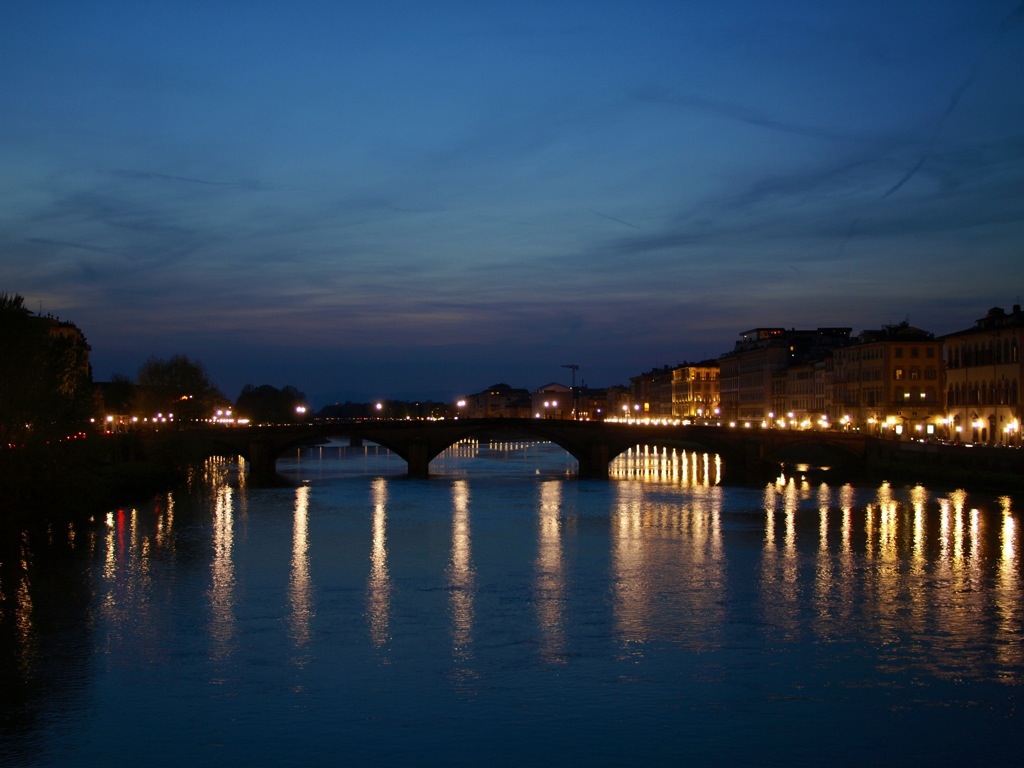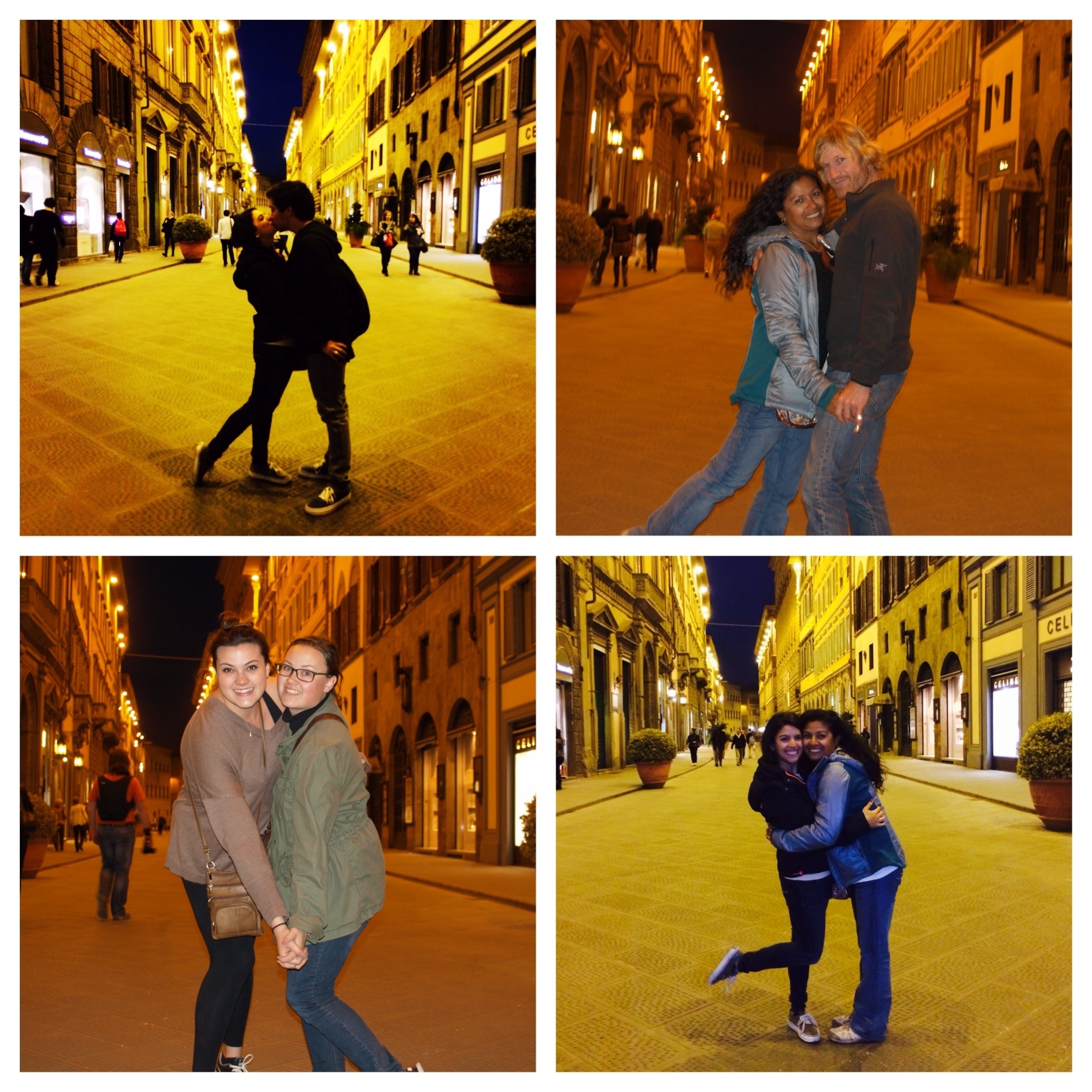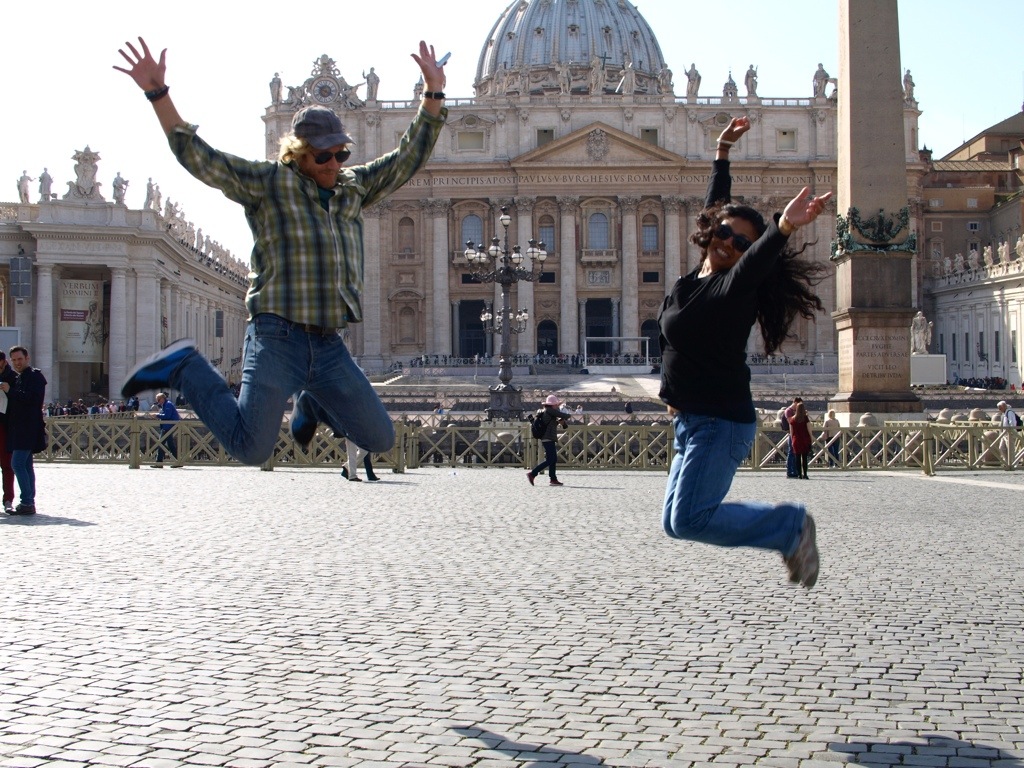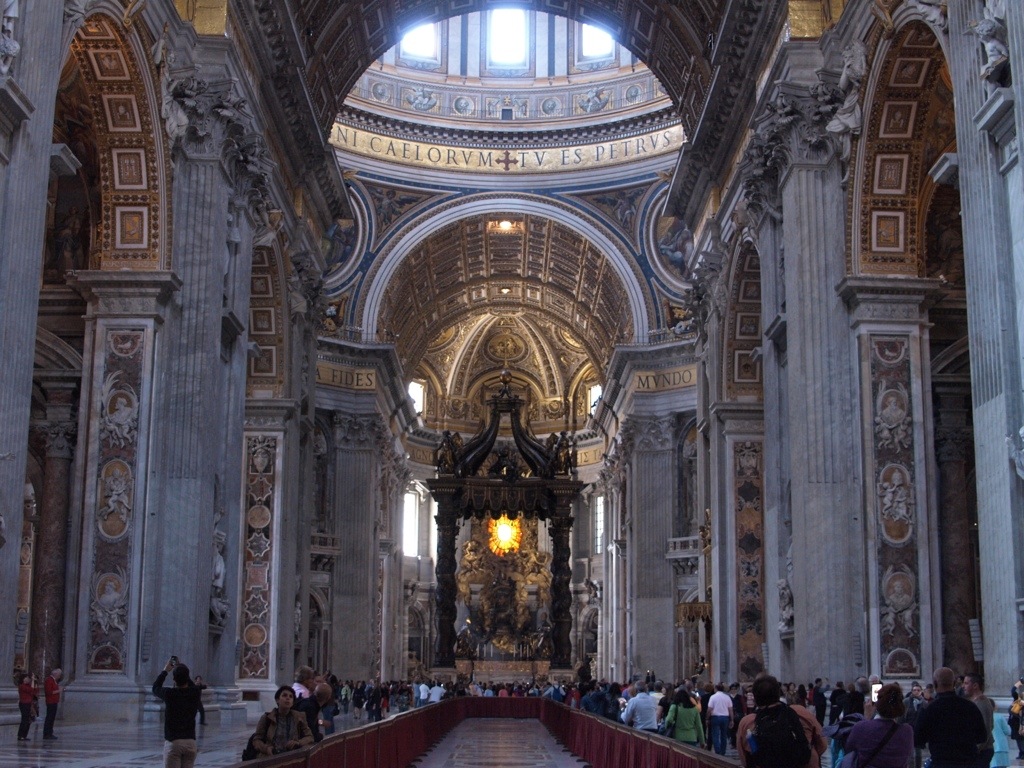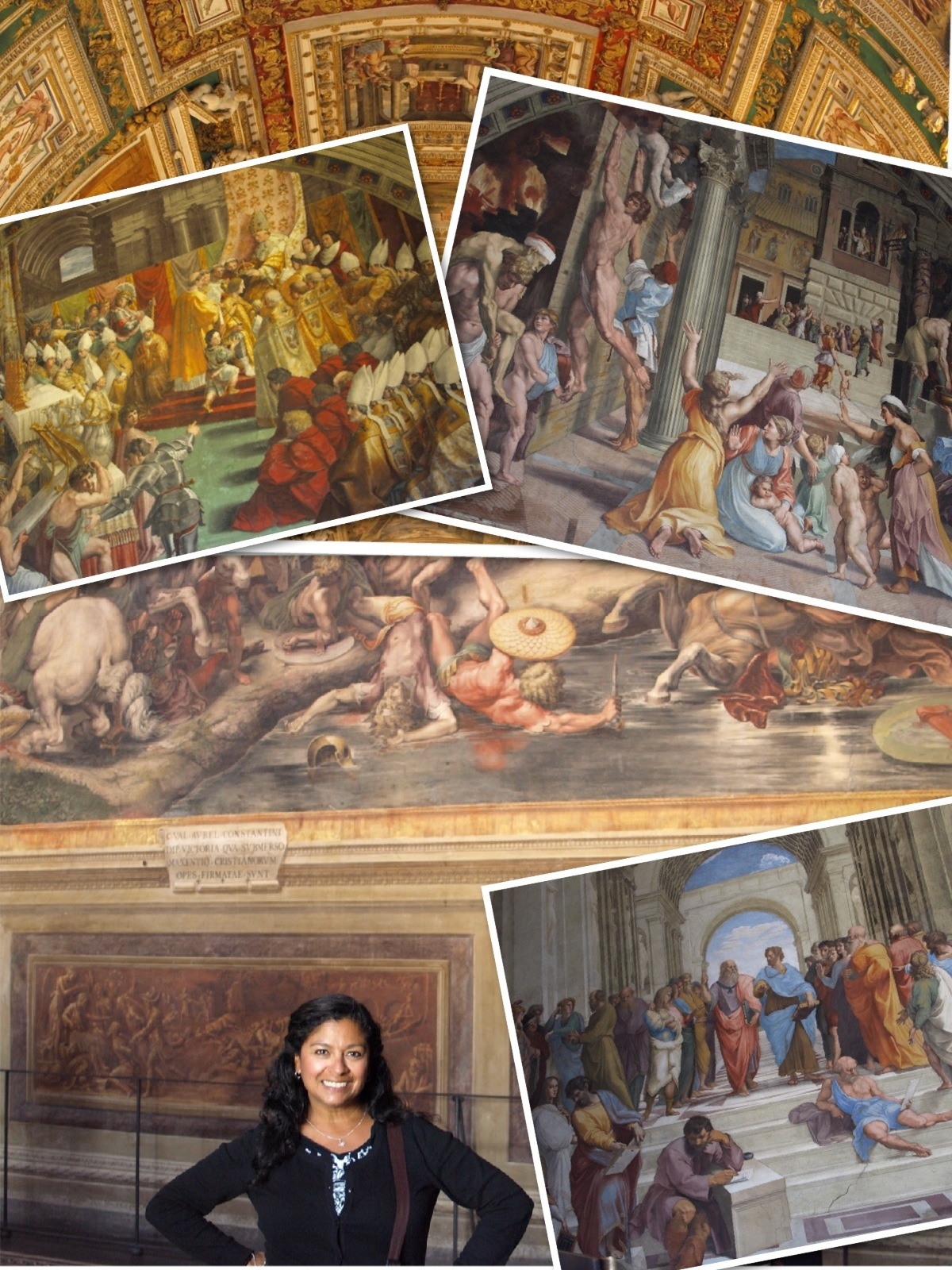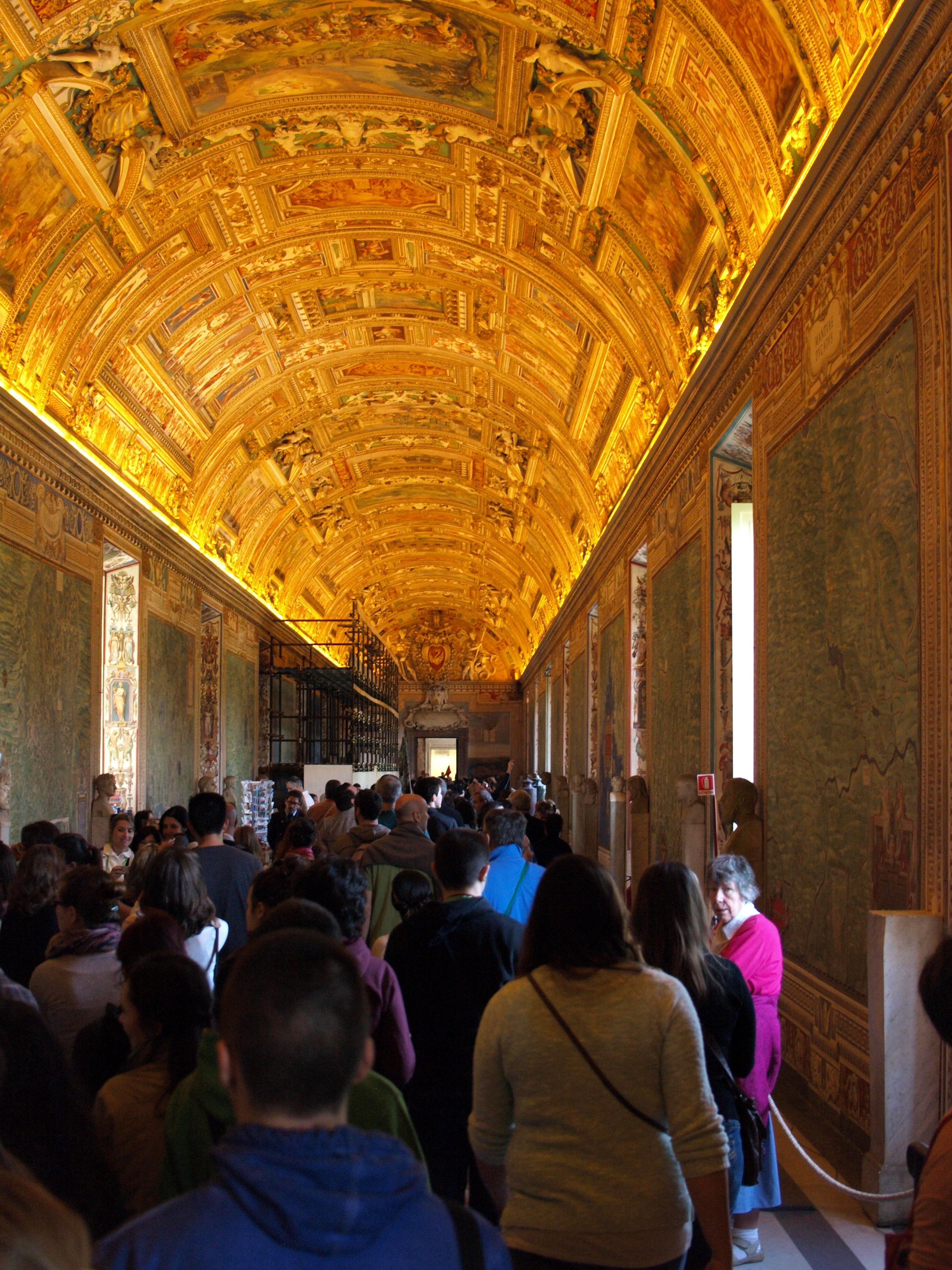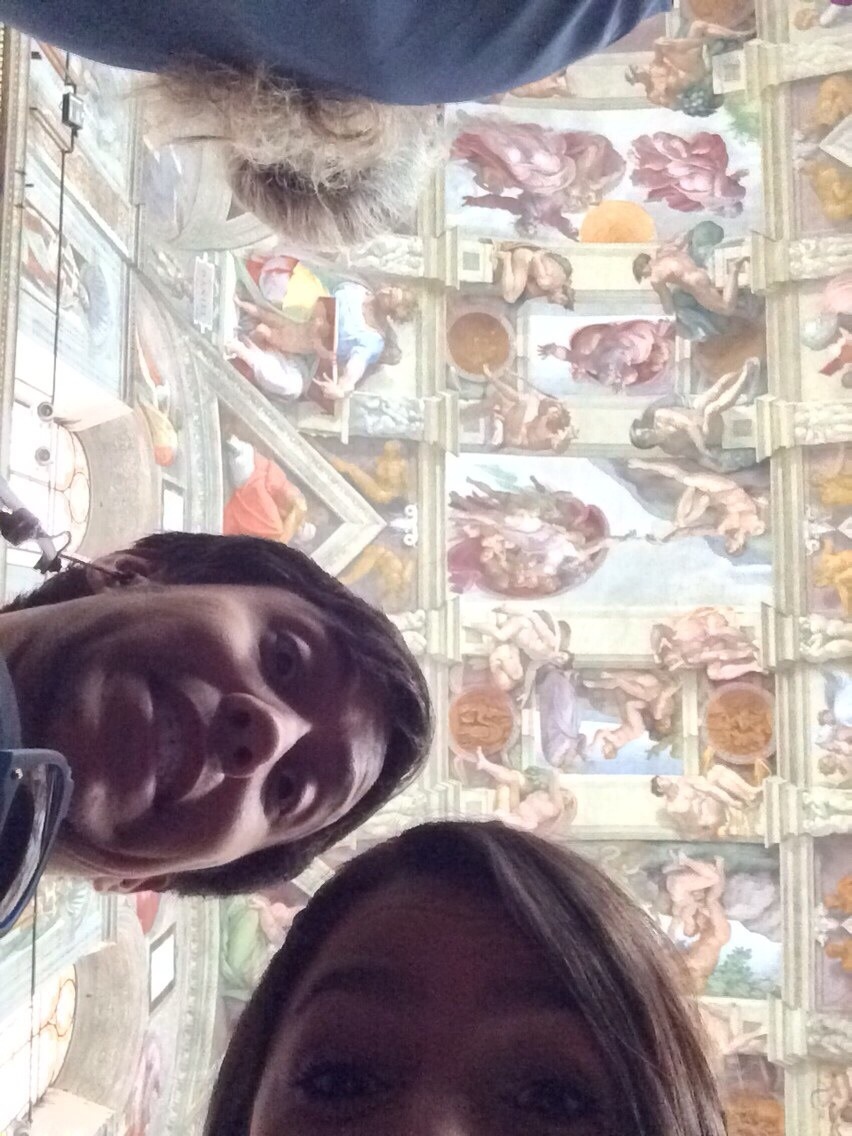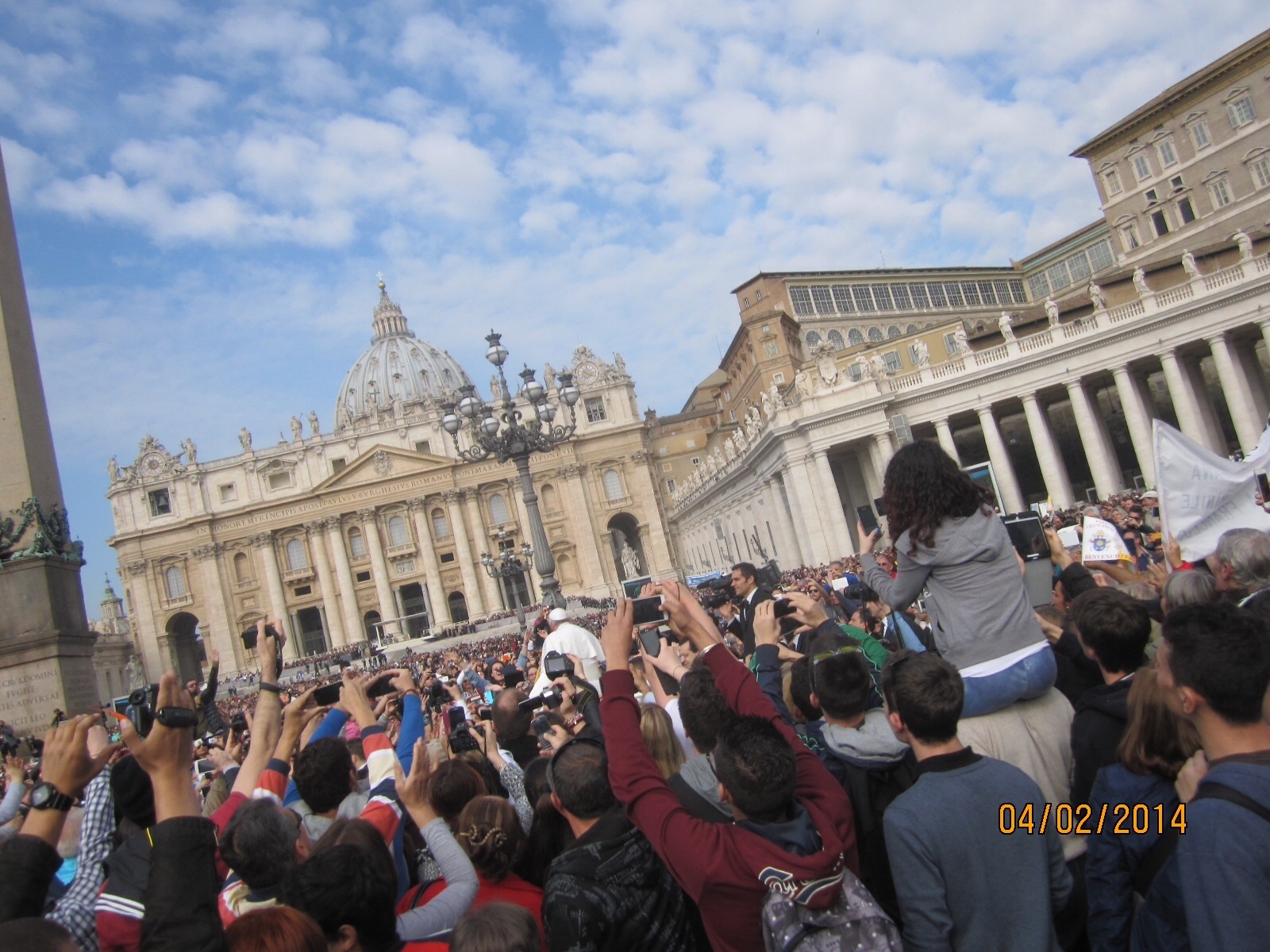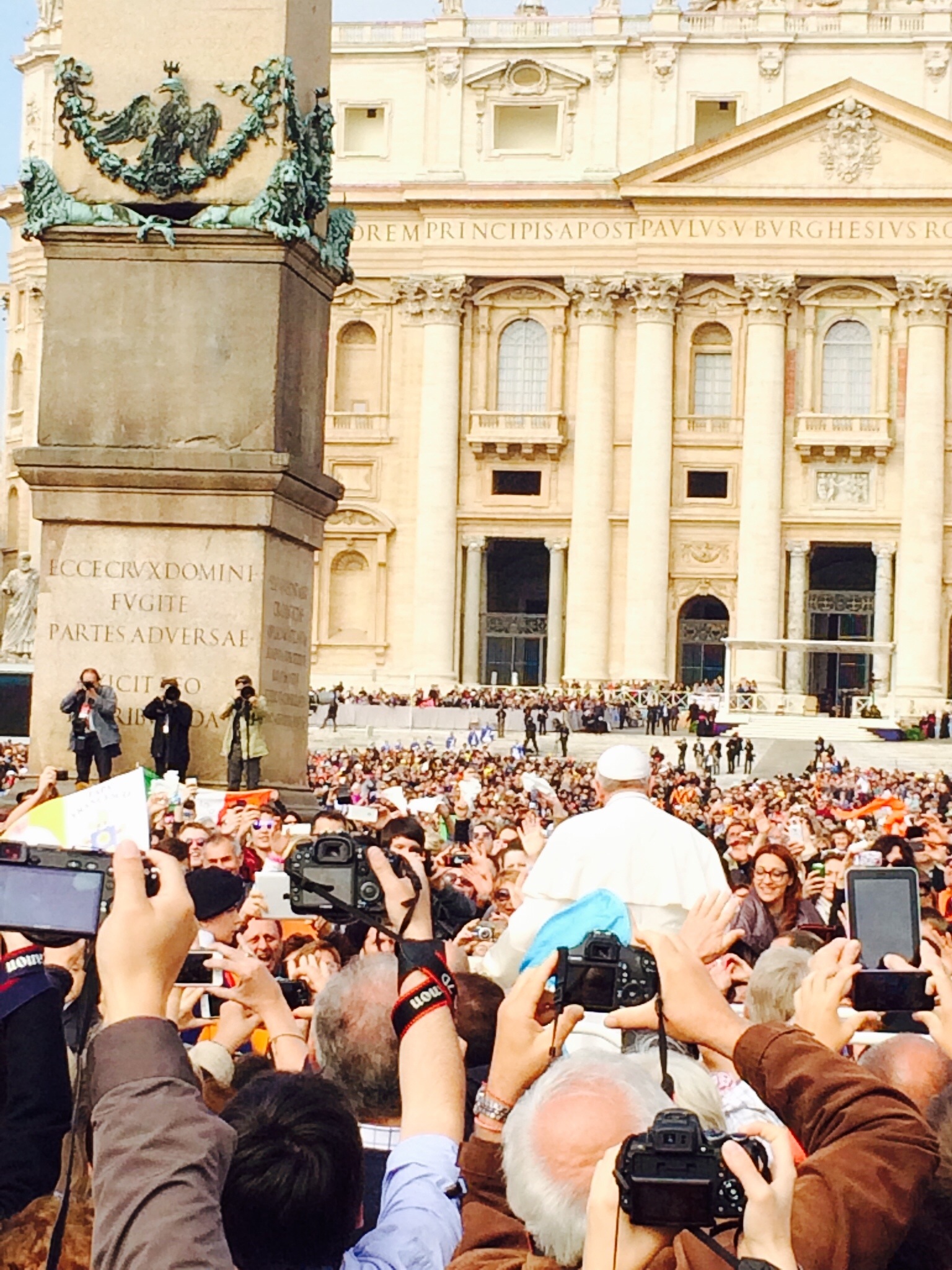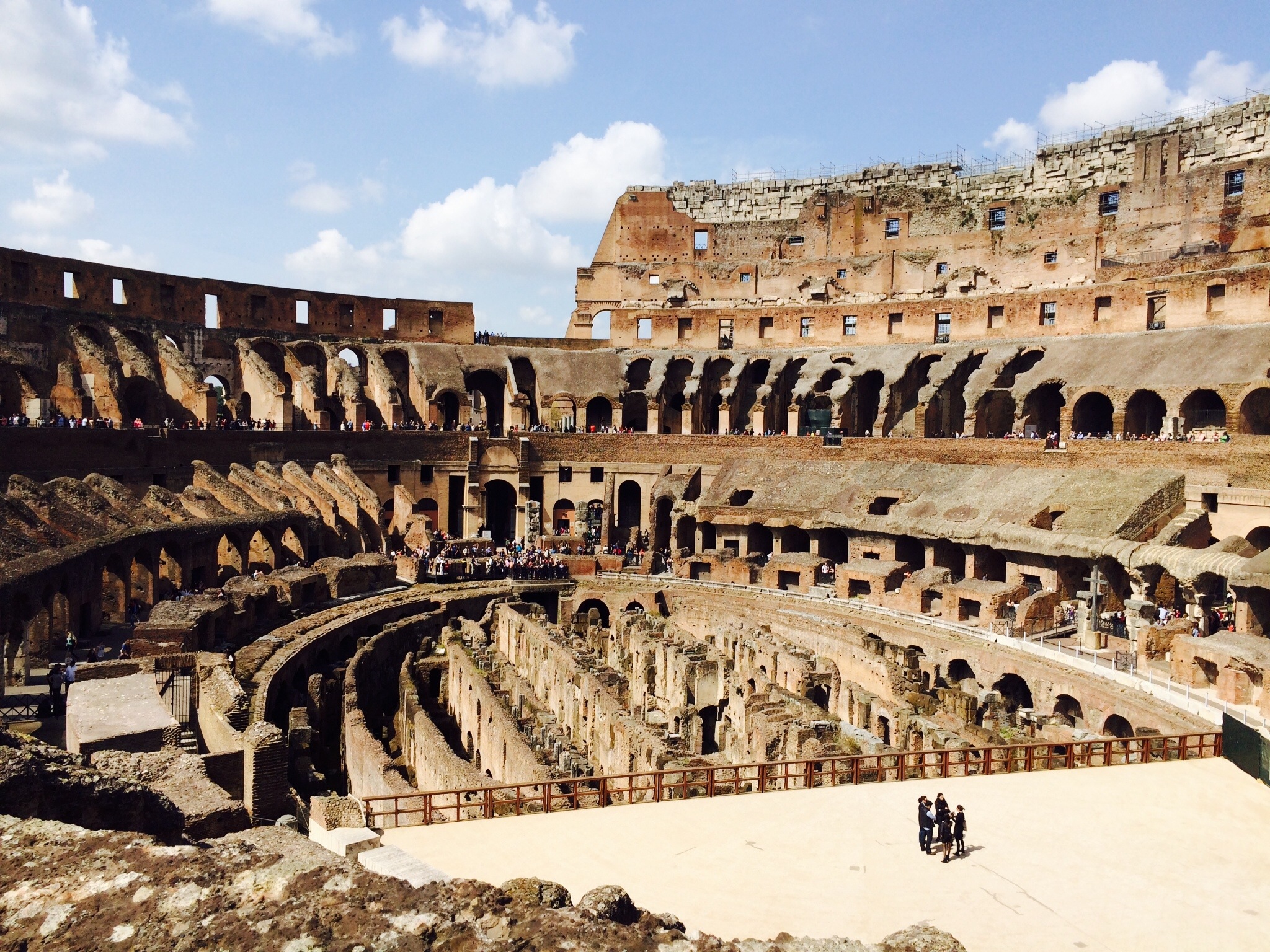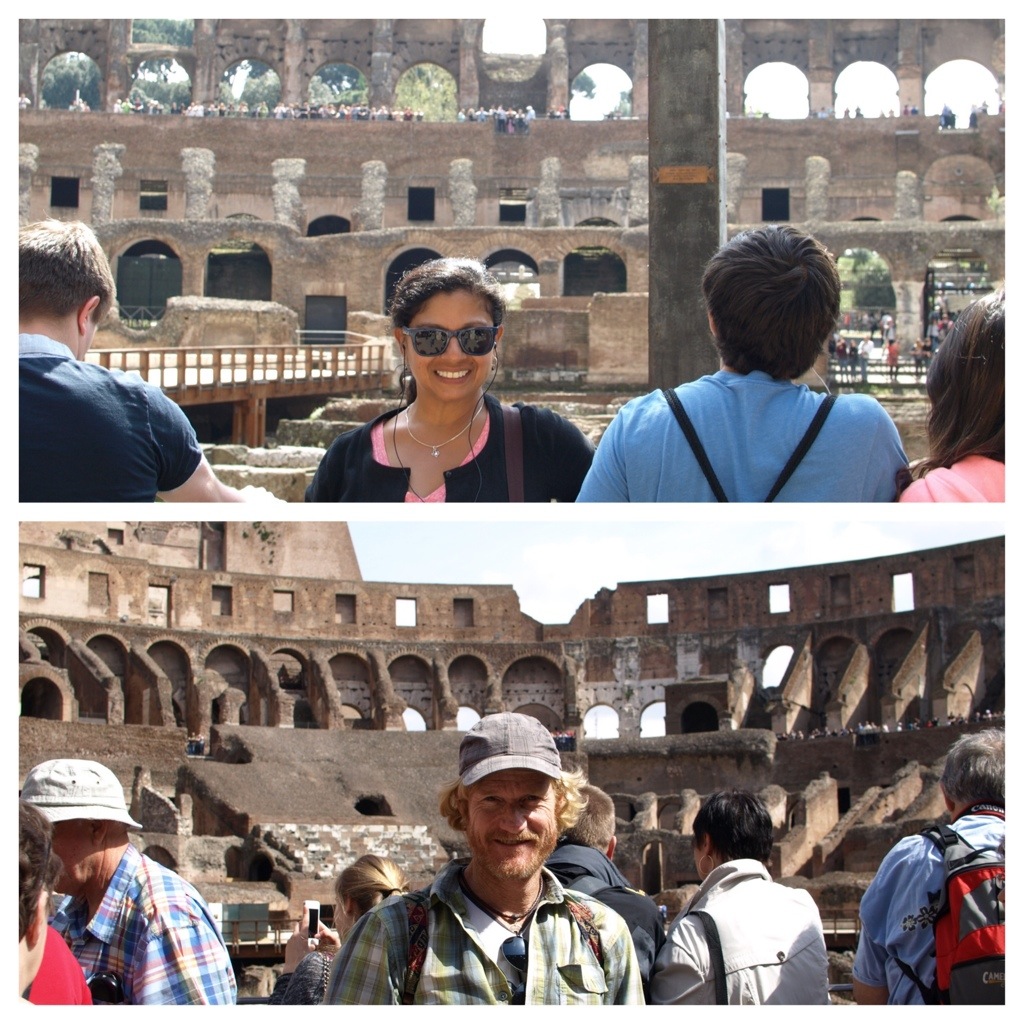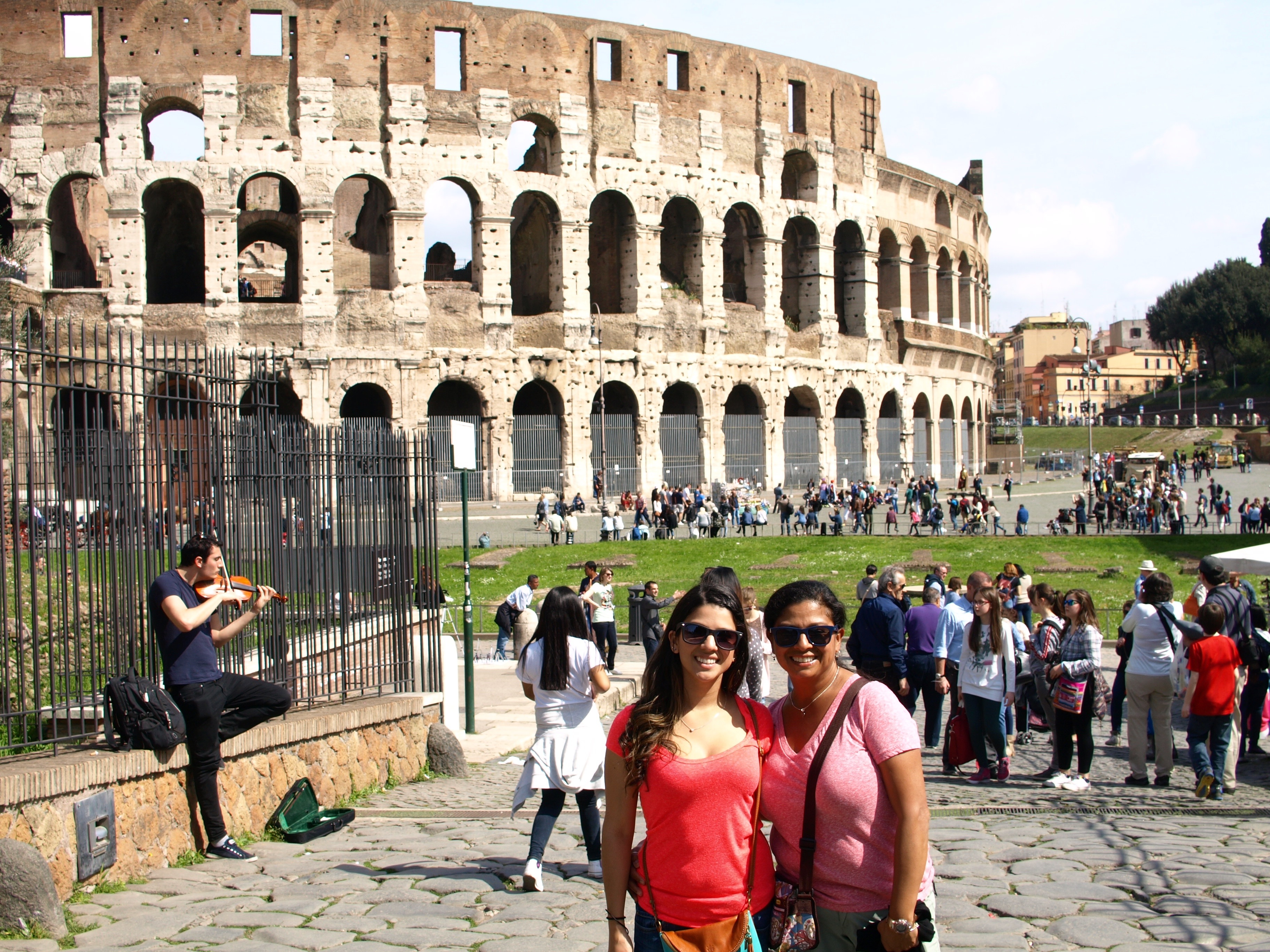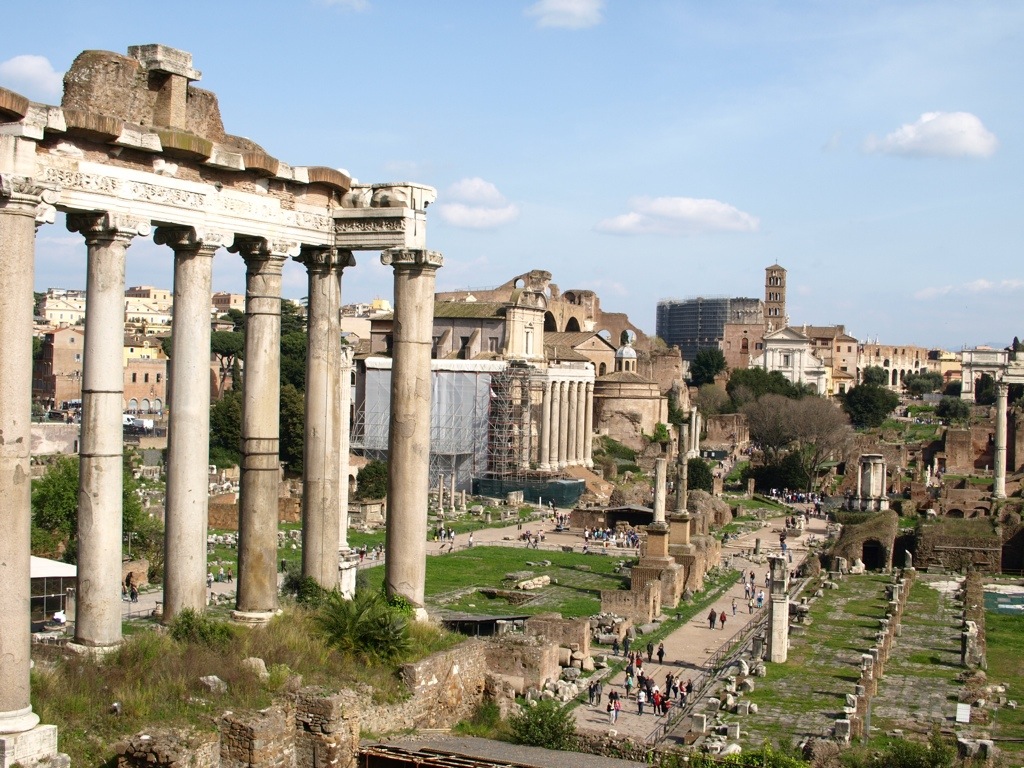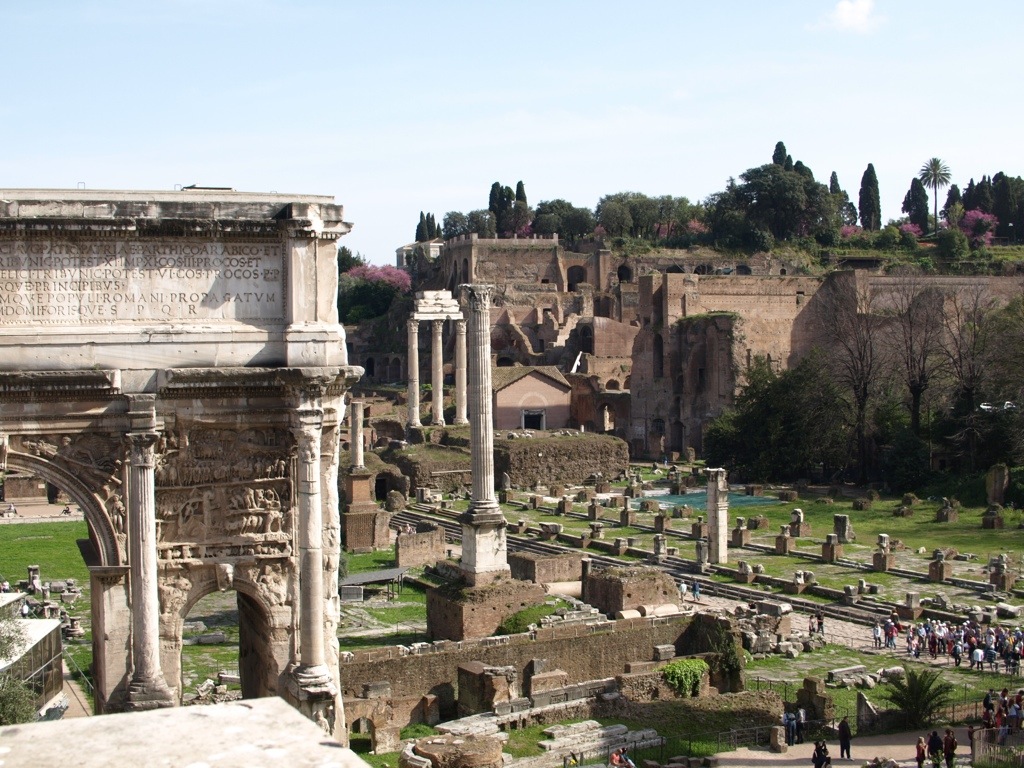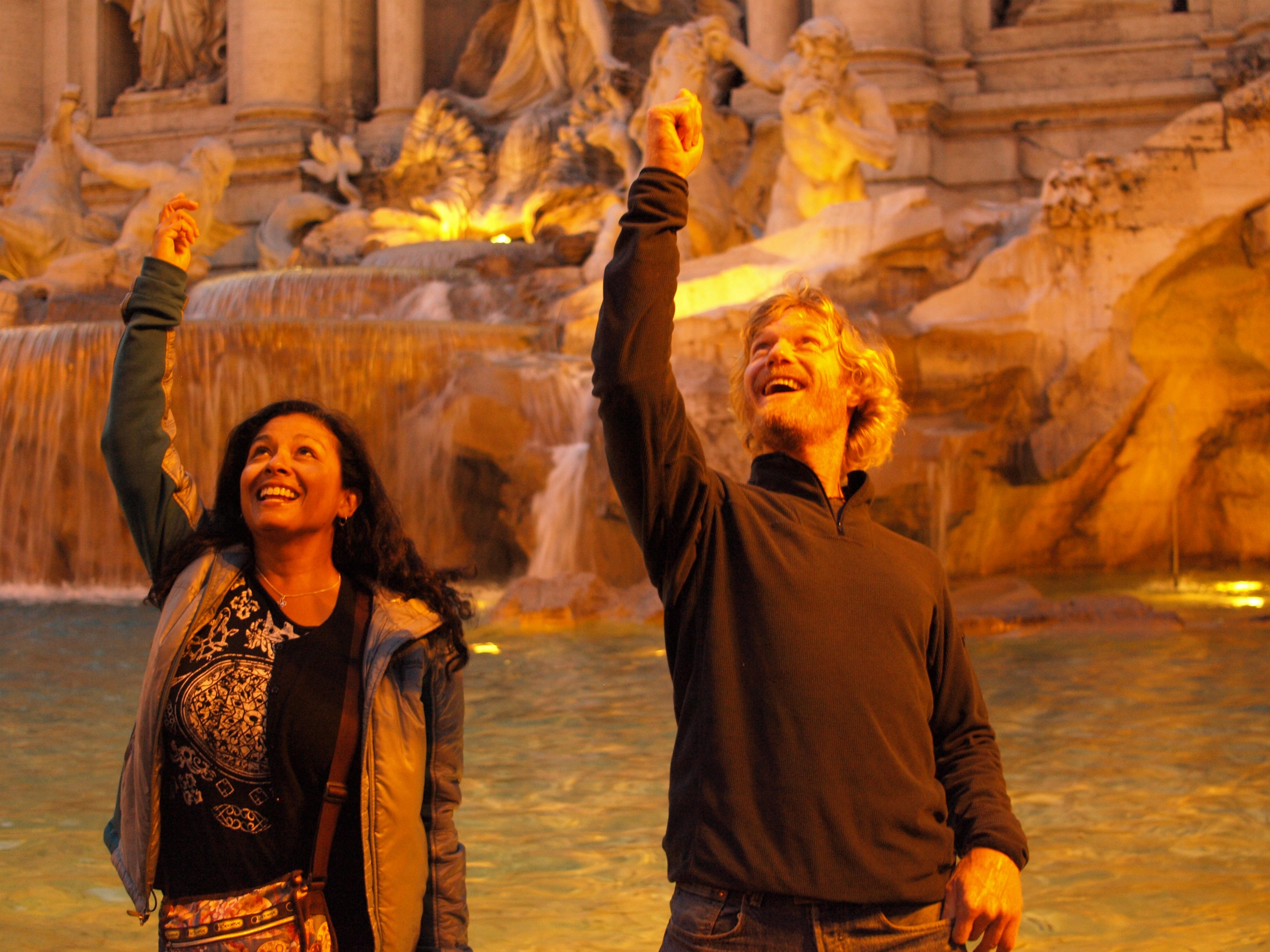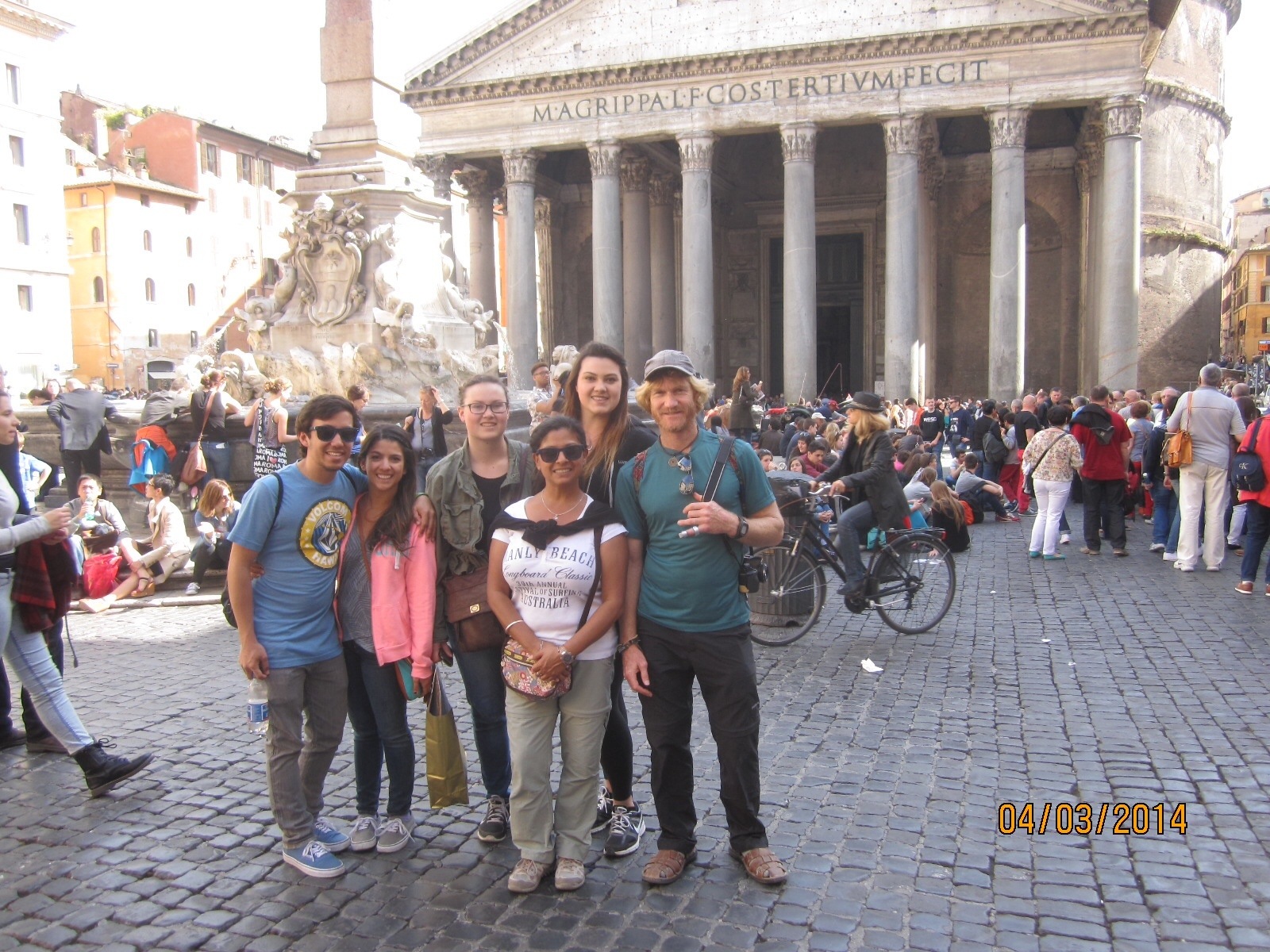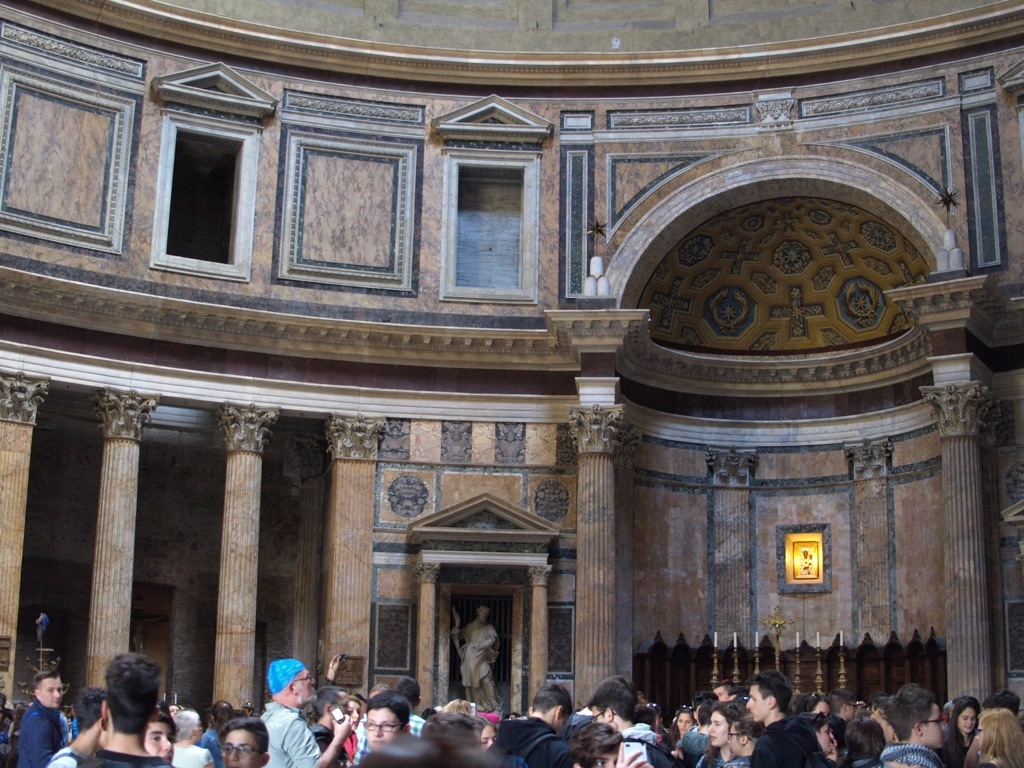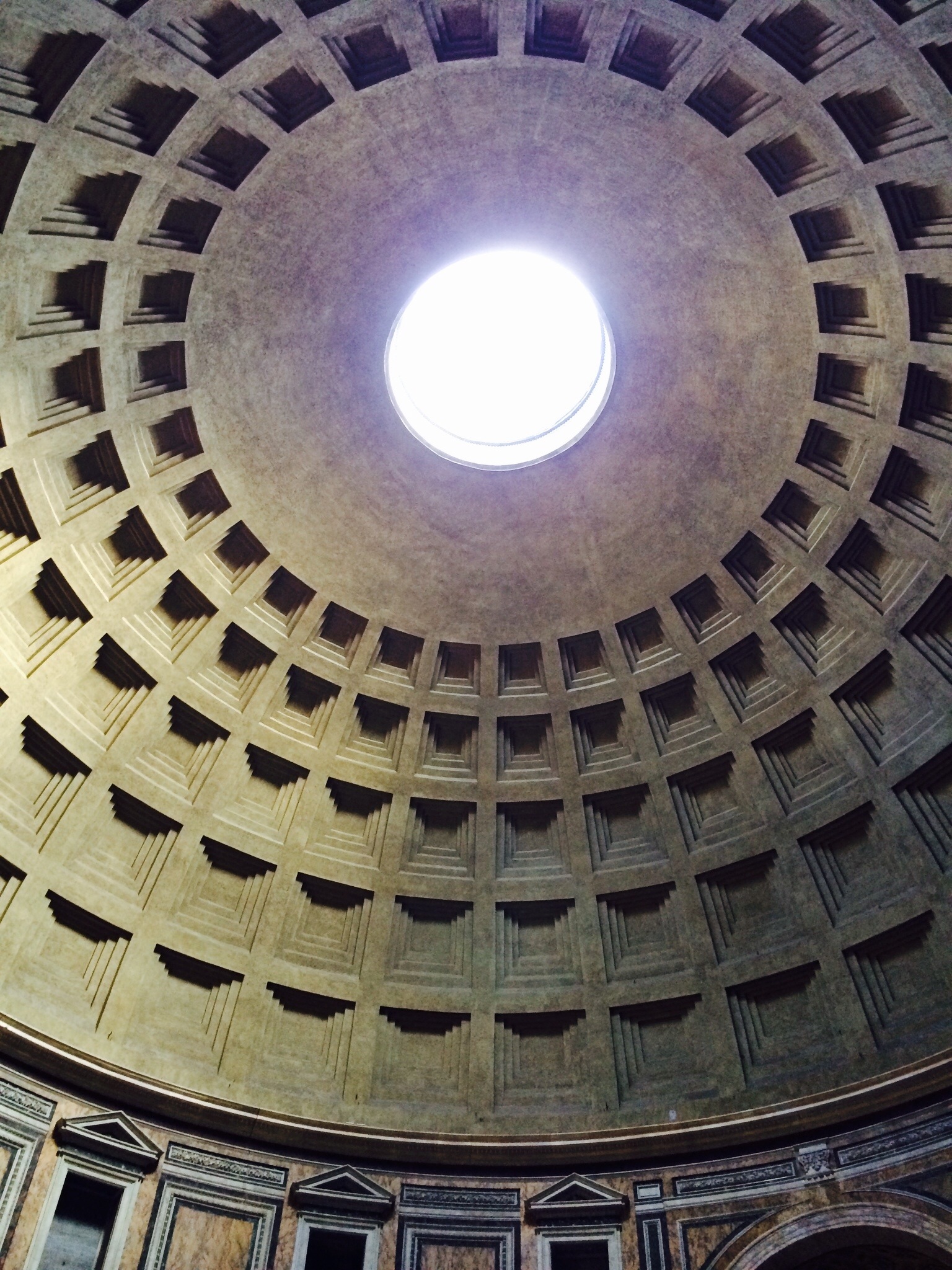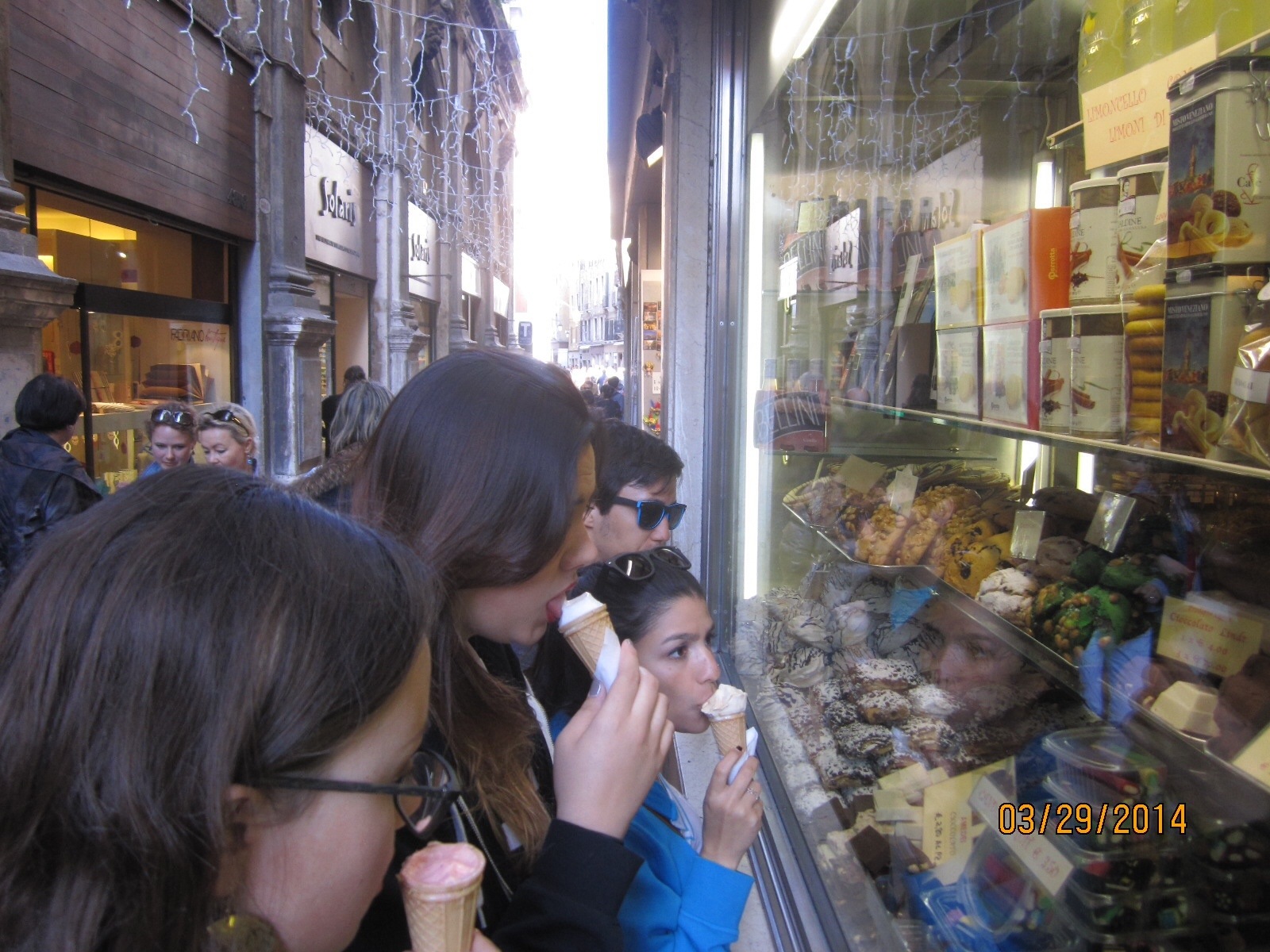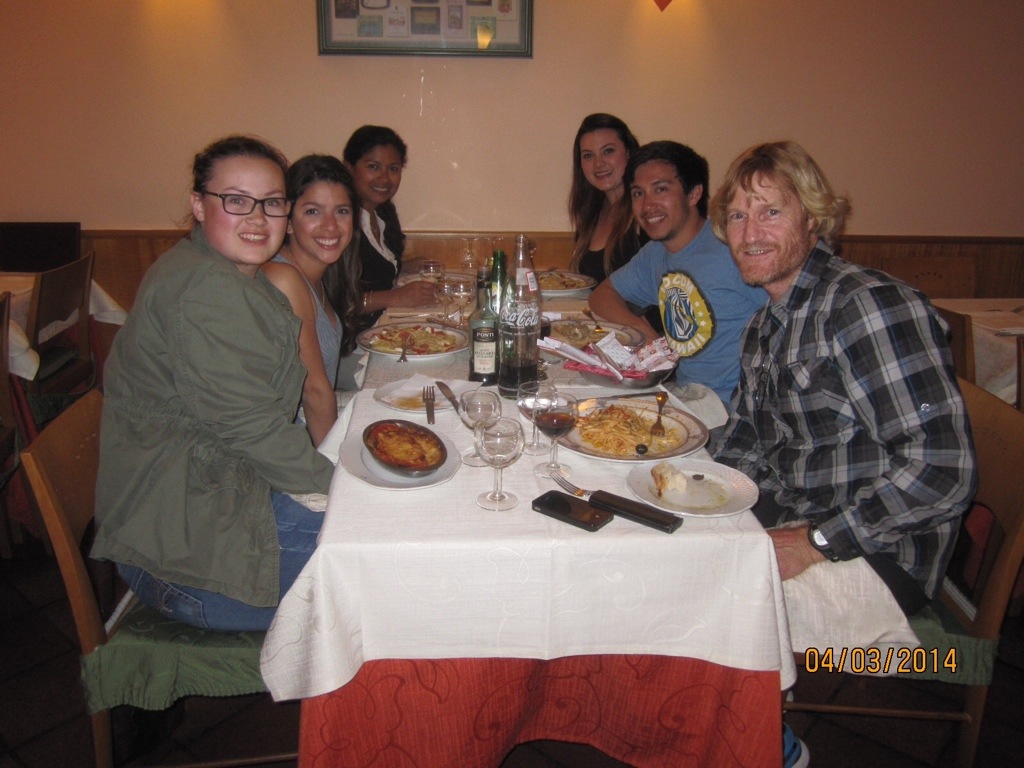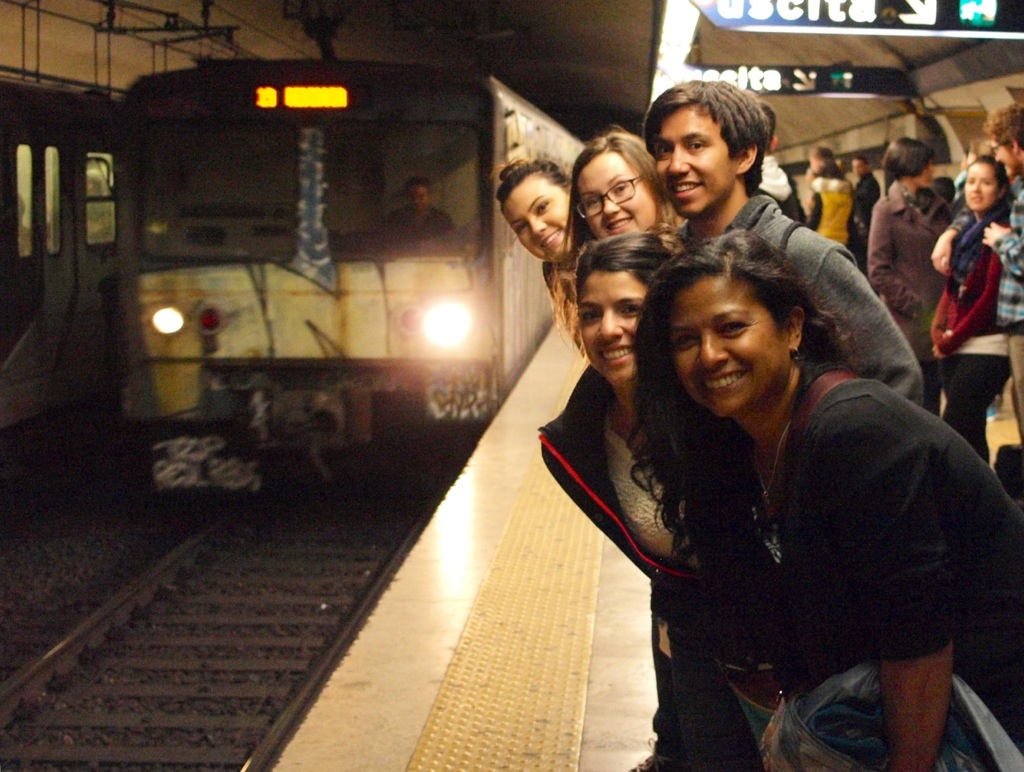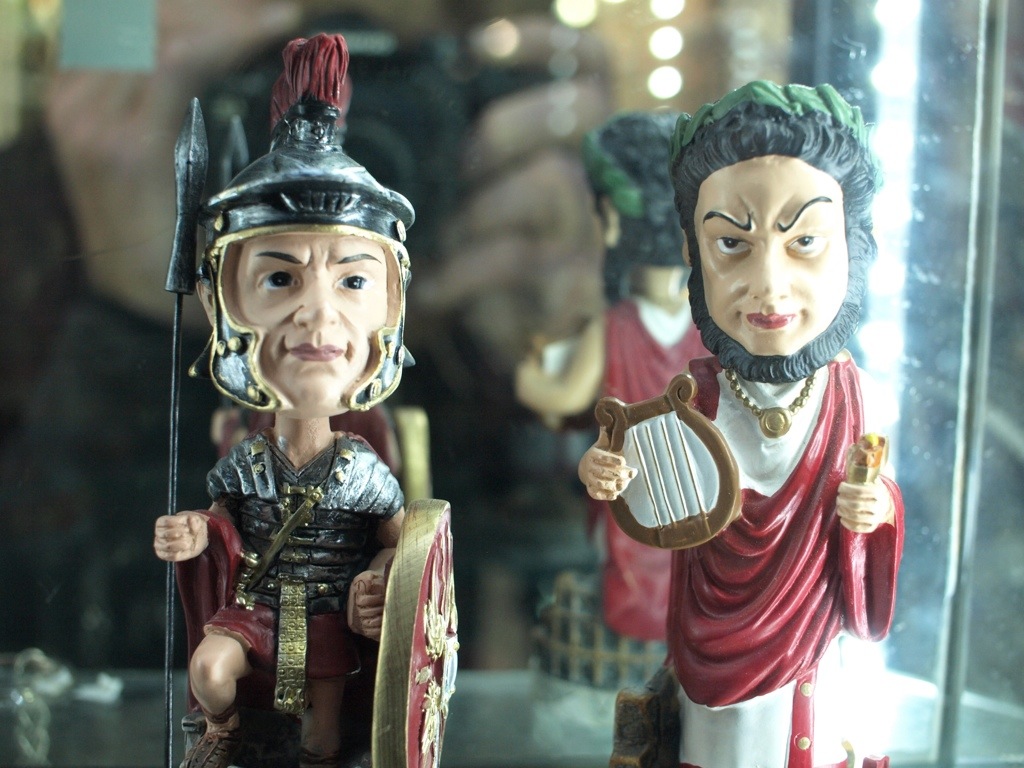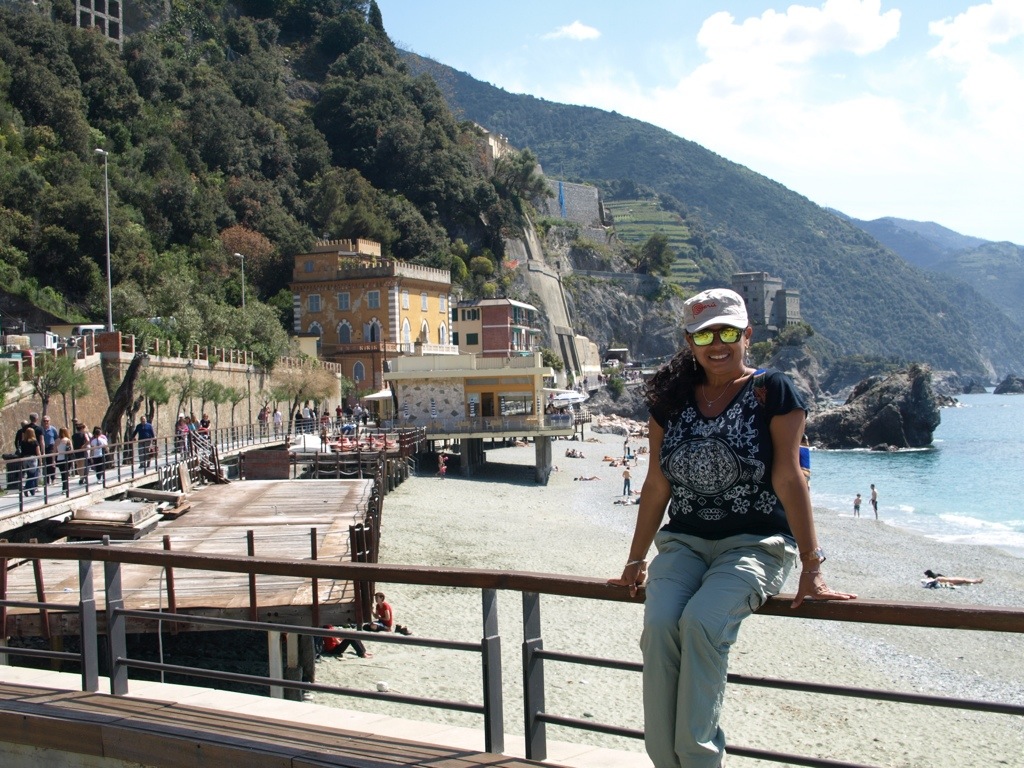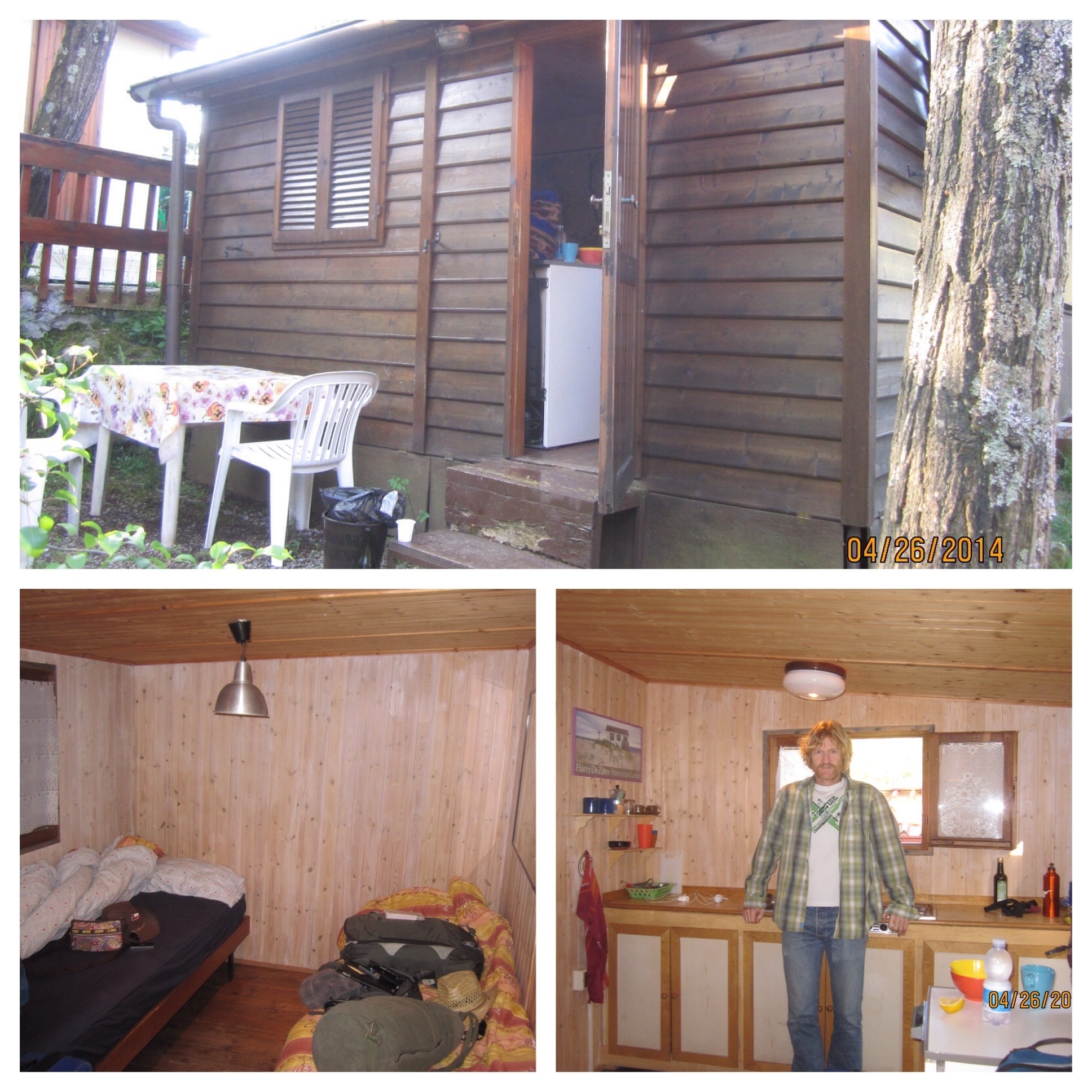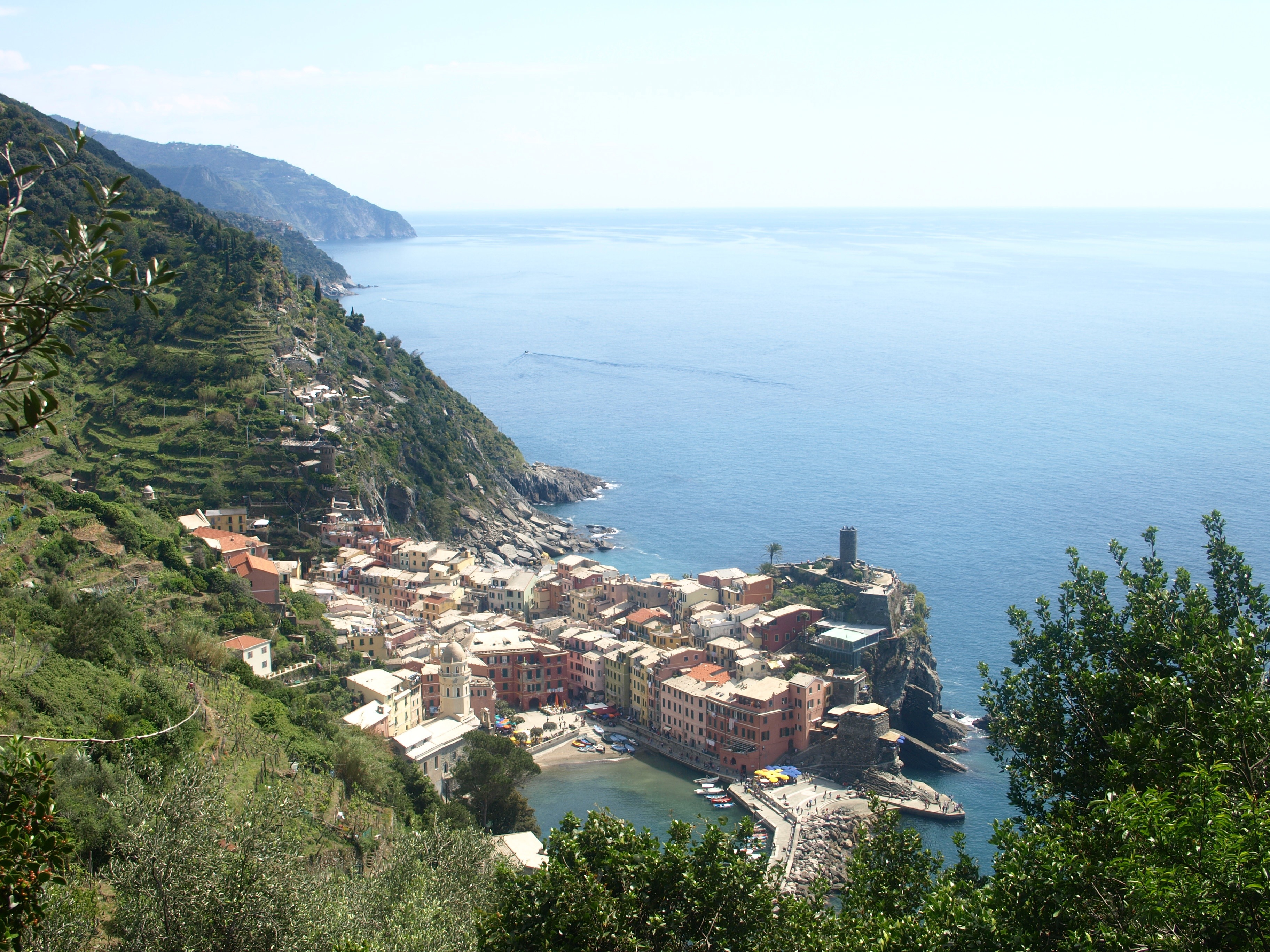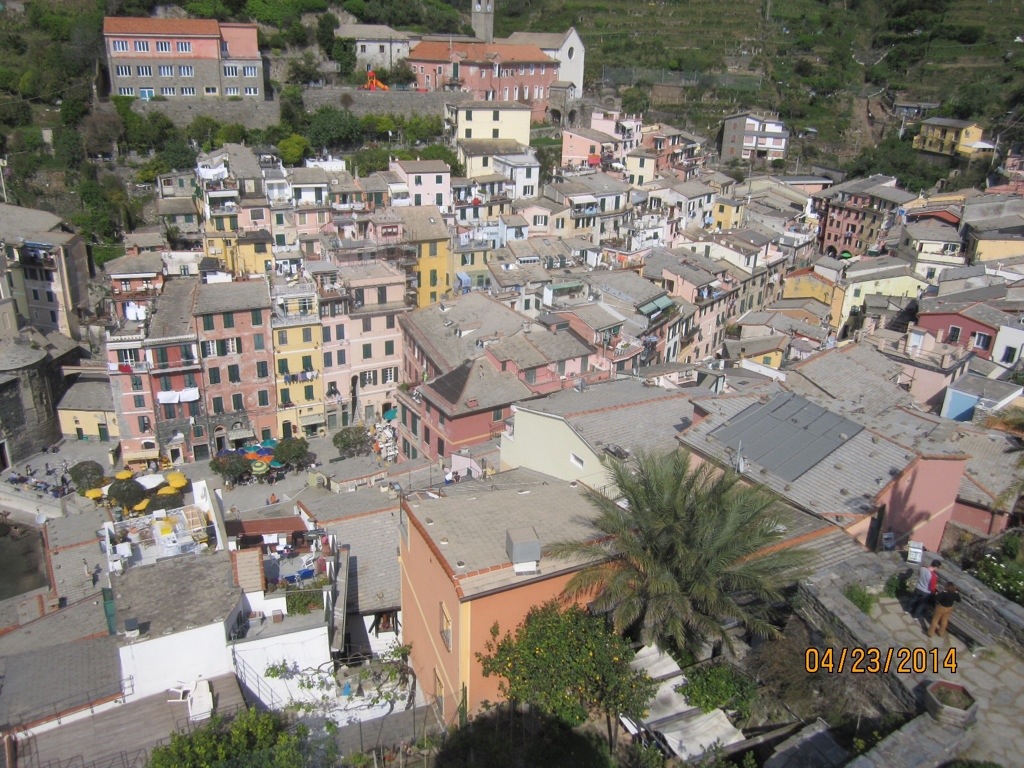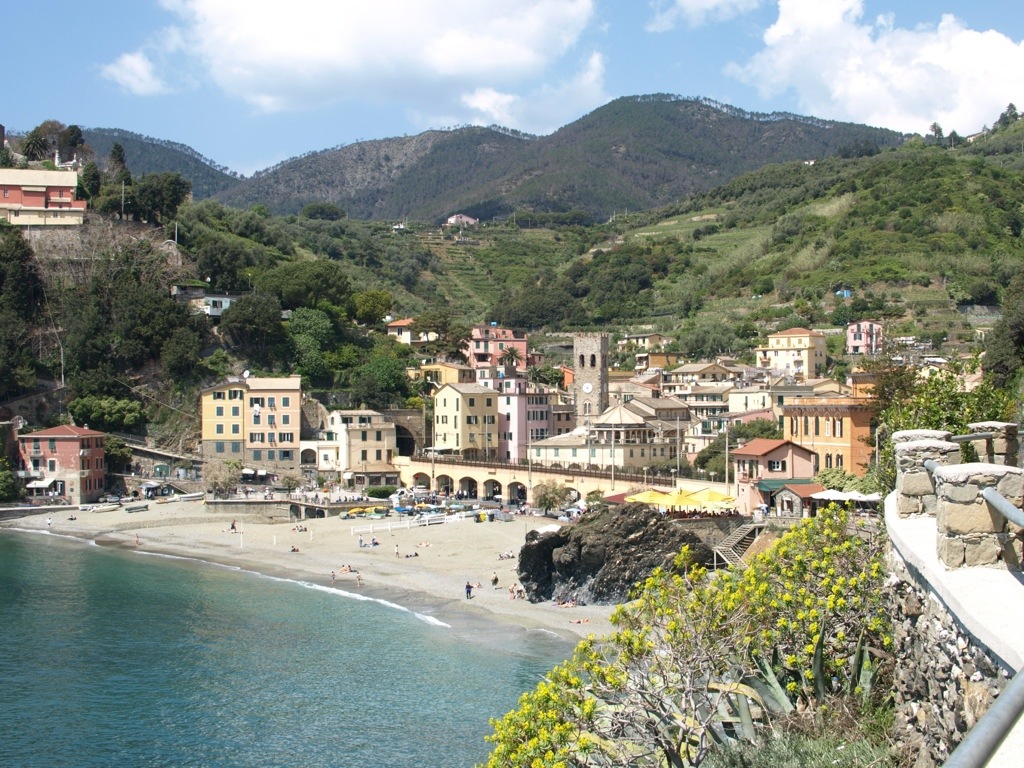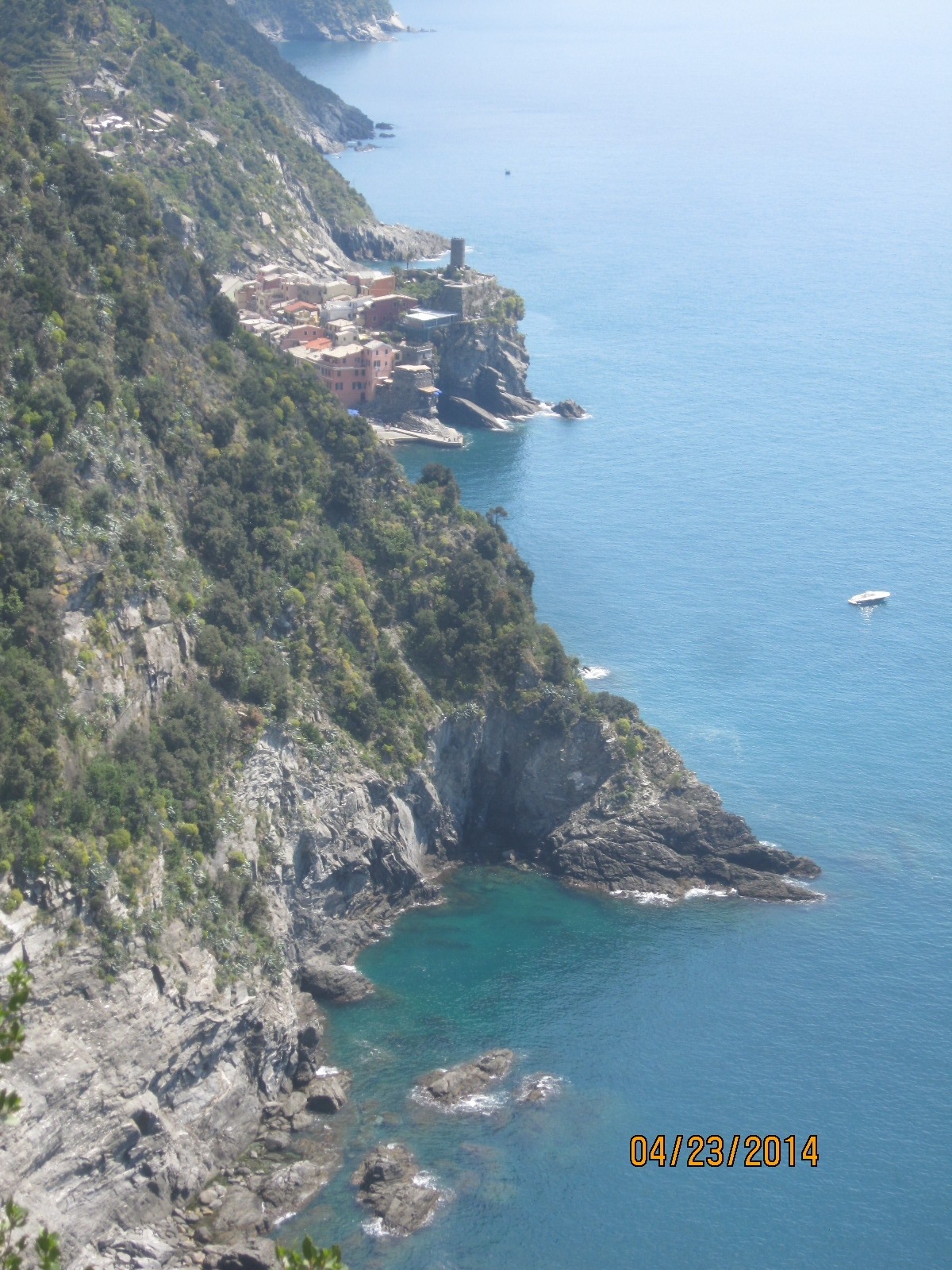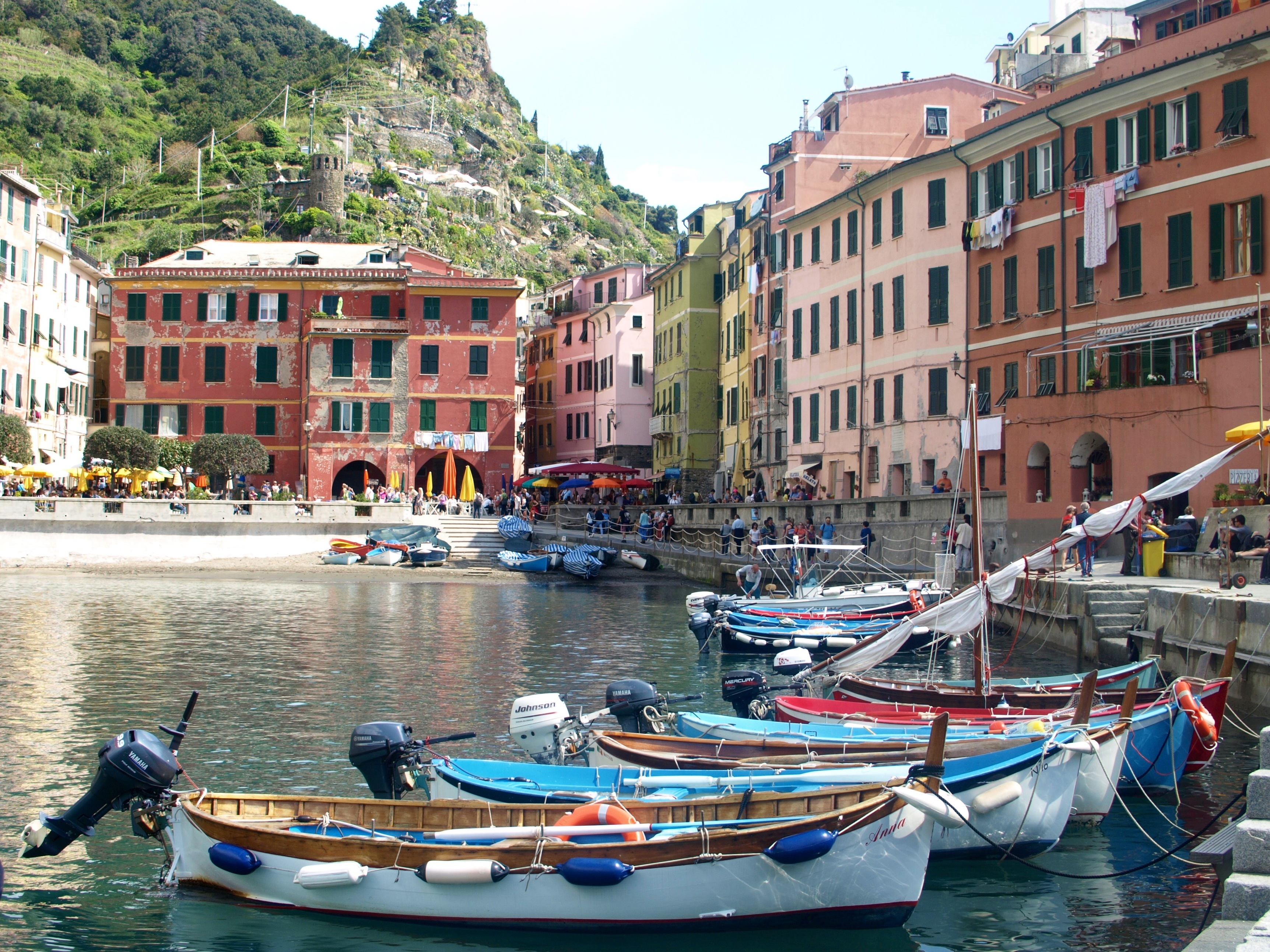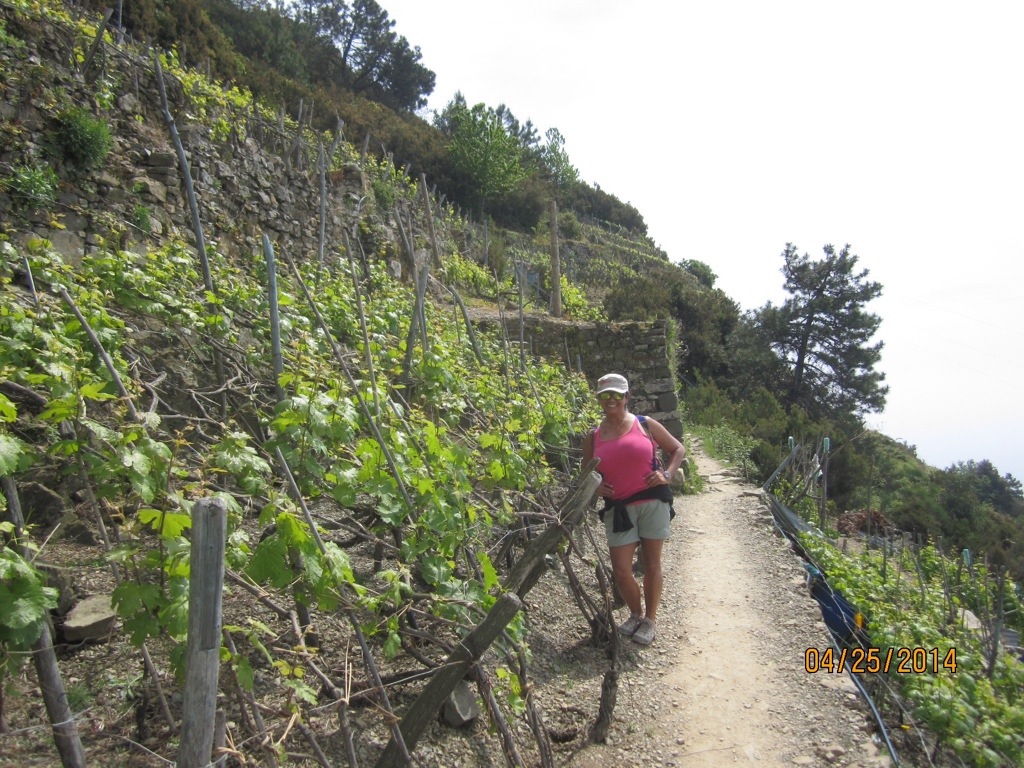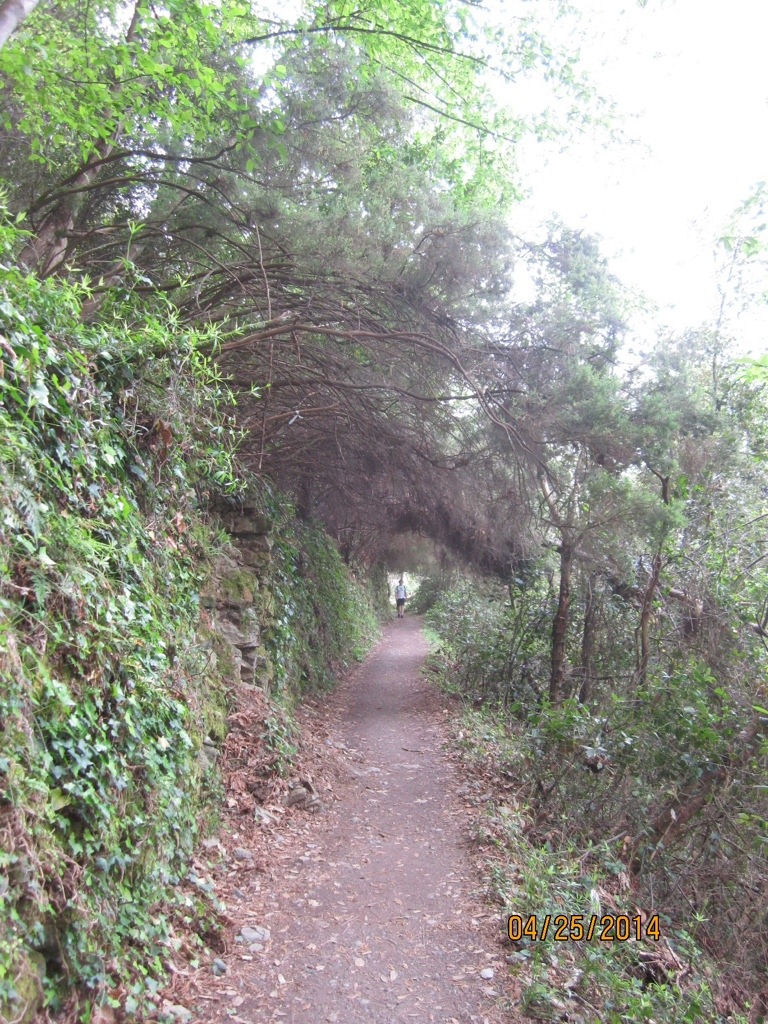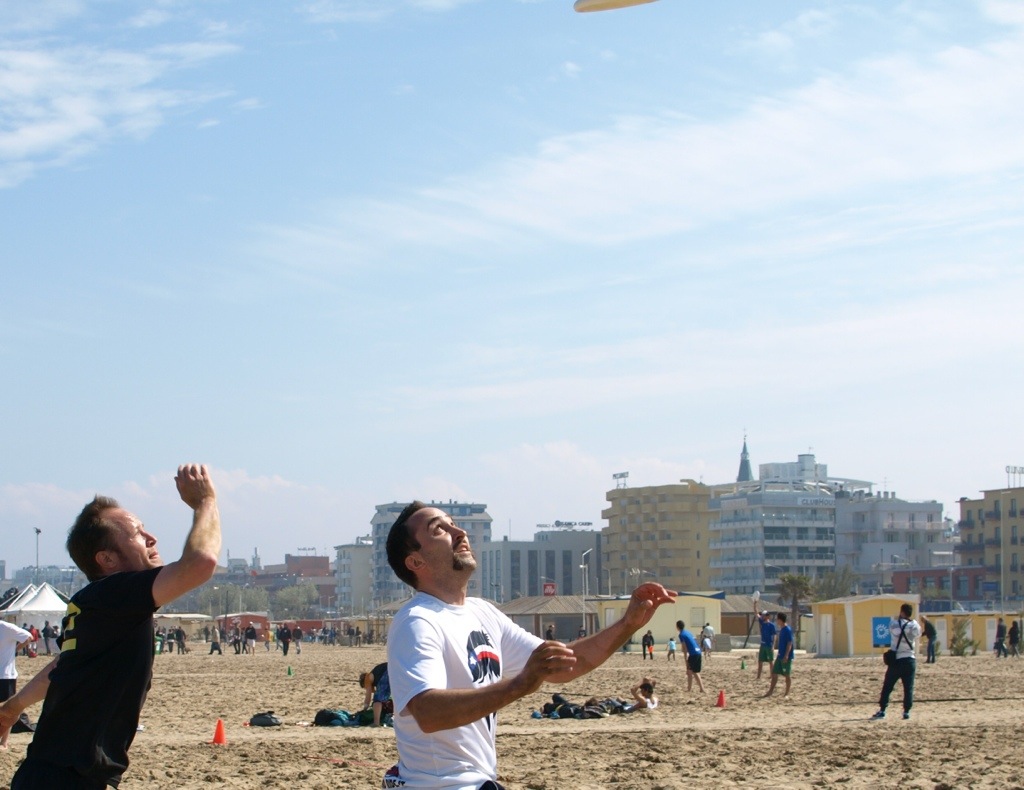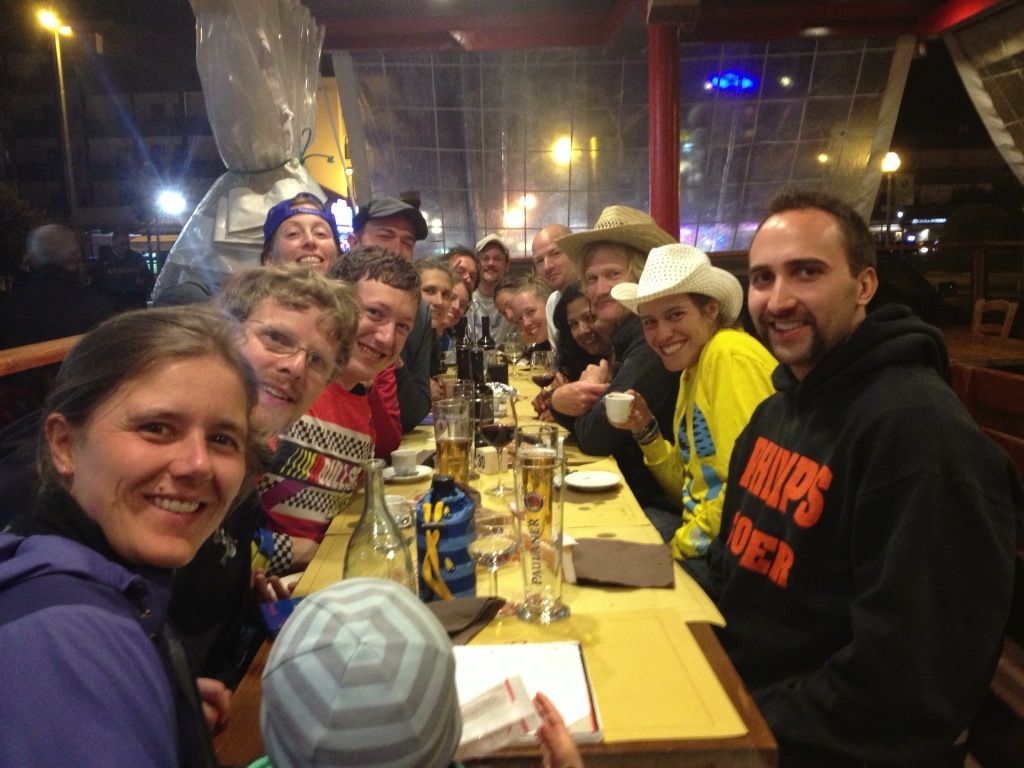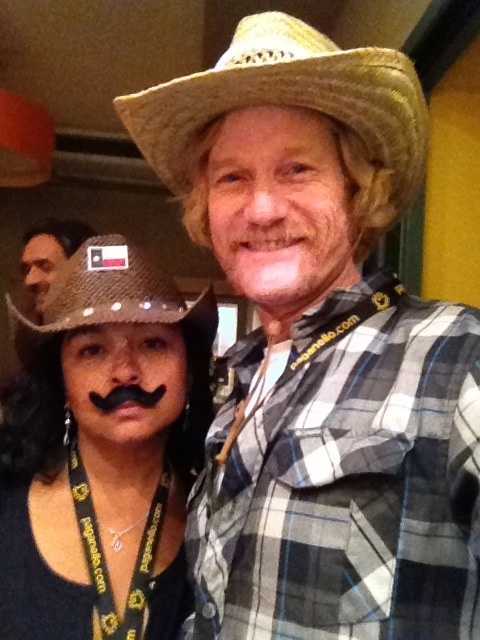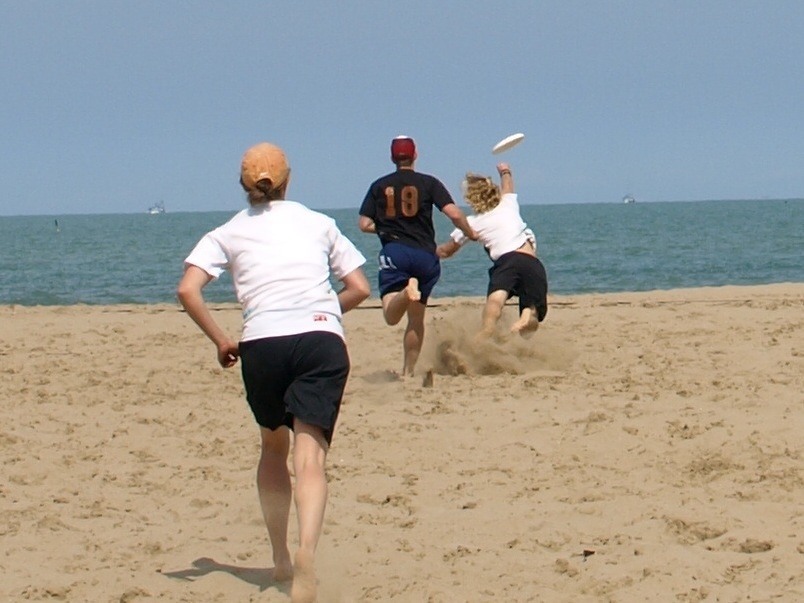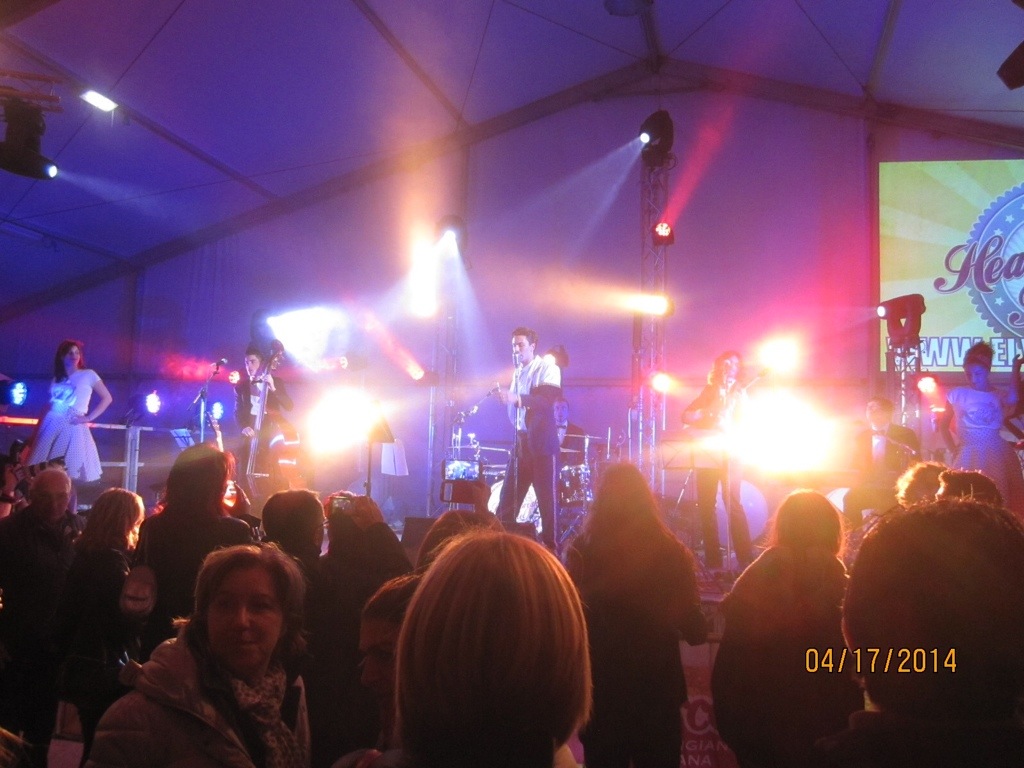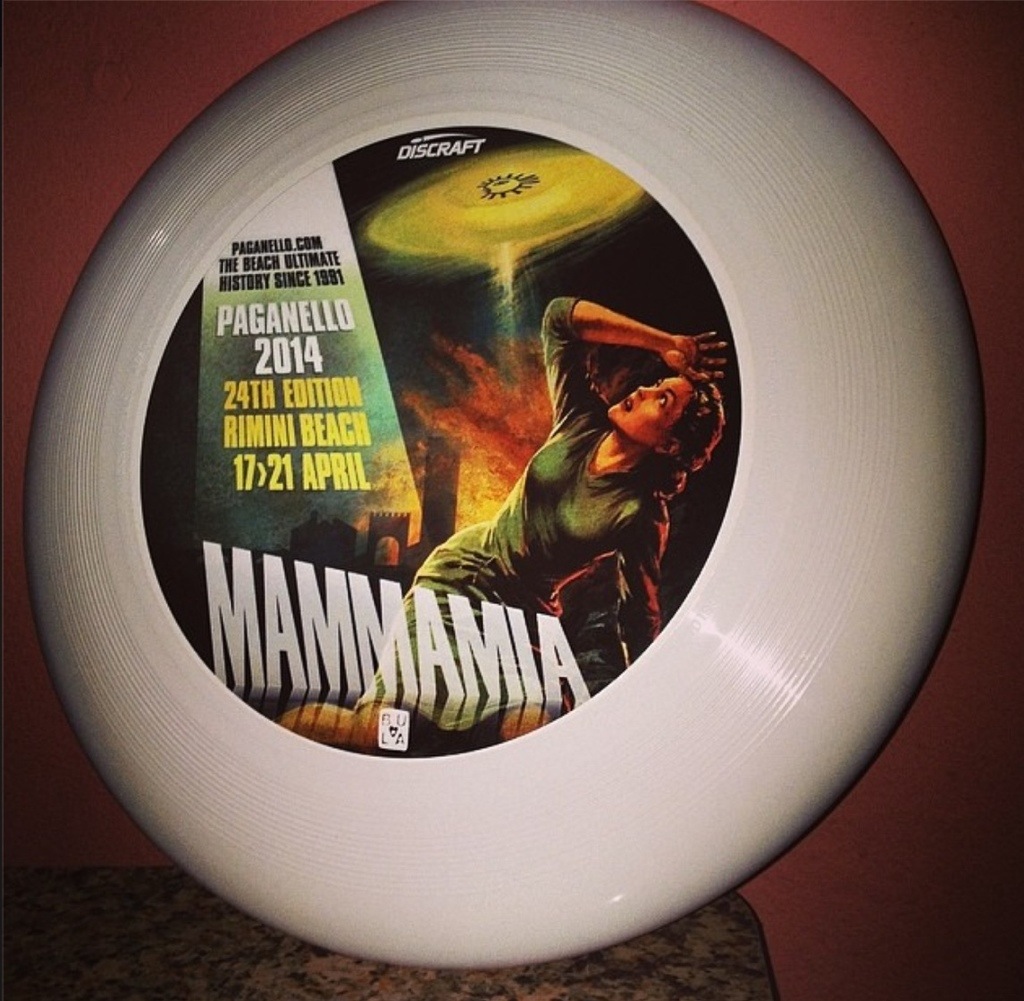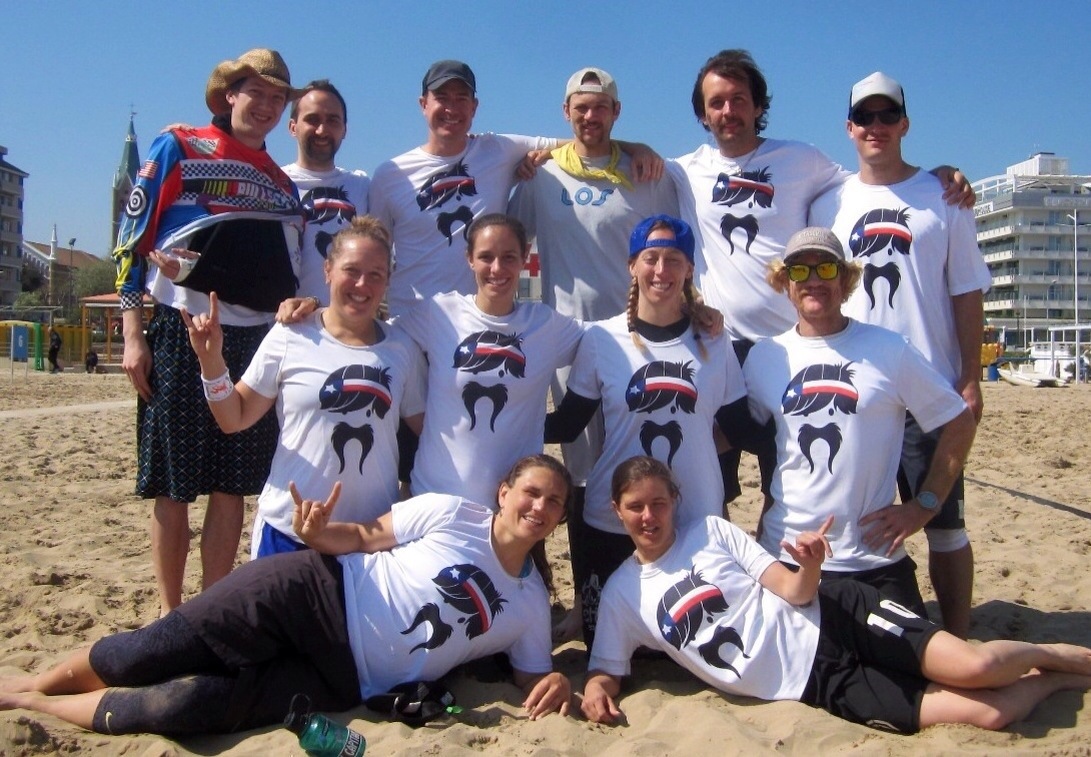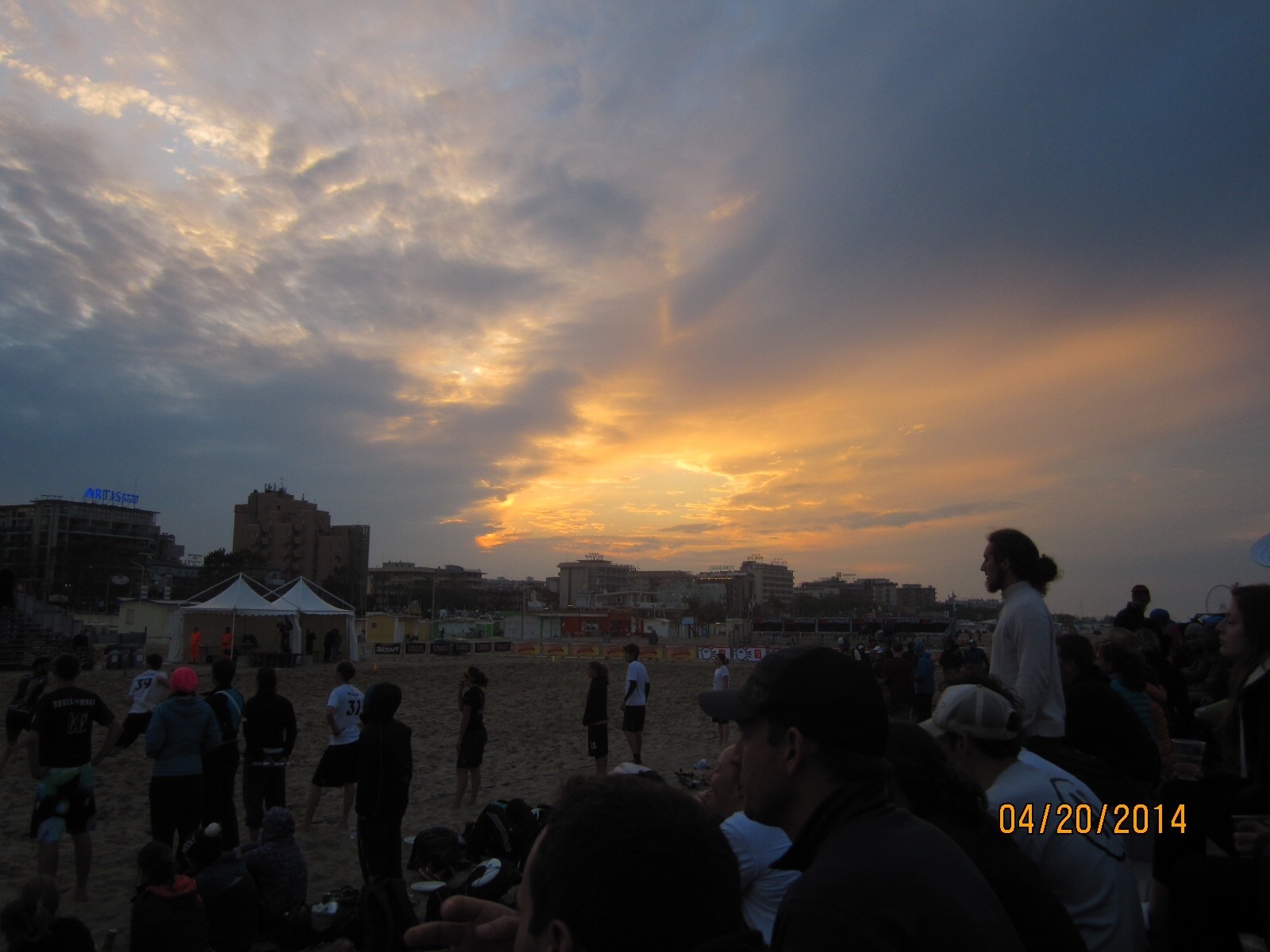(Naples – Assisi, 5-16 April 2014) Our deep dive through southern Italy was interesting. Fabulous in many respects, but challenging to the senses in others. This is likely to end up a long post, but there is much ground to be covered, and not just geographically. Southern Italy is amazing and we loved it; however, the full story includes several layers. Italy is a complex society, one of puzzling contradictions, and also one currently showing signs of significant distress. Too often, the shadows cast by monuments to a glorified past cast their shadows upon desperate beggars living on the streets. Based on what we heard (and witnessed), the Italian government has lost all trust of its people and lurches from one scandal to the next. Meanwhile, tourists (like us) still come in droves seeking an Italy that may exist best in myth and romanticized perception.
Jessica and I were a traveling duo once again after saying good-bye in Rome to Mallorie, Brandon and nieces, LeAnne and Mickaela. After their departure, we would first journey to Naples where we engineered a five night stay at a hotel using points accumulated through our credit card. After the accelerated pace of the previous two weeks, we knew a planned slowdown was in order.
Additional destinations weren’t known to us at that time, but at least we’d given ourselves five days to figure out our next moves. That is one of the awesome luxuries of traveling in the style we’ve adopted. It’s great knowing exactly where you’ll be when, but not knowing invites exploration that can lead to wonderful discoveries.
Tennis Anyone?
Using credit card points to book our hotel was free but risky. There were a limited number of hotels to choose from in our particular rewards program and none were centrally located to Naples. A commuter train was required for the 40 minute trip to the outskirts where the Tennis Hotel (seriously, that was the name of it) was located.
Too cheap (and stubborn) to pay a cabbie 20 euros ($30) for the 3 km lift to the hotel from the train station, we hoofed it. Not only did we not know at the time that practically the entire hike was uphill, we hadn’t fully appreciated just how far outside the touristy circles we had come. We were nowhere near the monuments, statues and souvenir shops. We were where the everyday people of Naples lived and worked. Although enlightening, it was not a pretty sight.
Our directions had us turning left from the main street and onto a one-way industrial road that was full of trash. Not just a few bottles and cans strewn here and there, but full-on trashed out. We said out loud how glad we were that Mallorie and the others weren’t with us now. Their image of beautiful Italy would have been tainted forever.
As we approached the hotel and saw the half-dozen tennis courts out in front. Then it clicked- we were staying at a tennis “resort.” Interesting, but that’s not the most notable part. Our hotel was situated only a few hundred feet away from the vent of an semi-dormant volcano called Sulfuerous, named so for the sulfuric gasses it exhales. The smell from these gasses wafted over our hotel like a hot fart from a sleeping giant.
The room was clean, large and appointed with standard stock hotel furniture. Not bad and all….but the foul smell was inescapable.
Naples- Grit and Pizza
Naples itself was jam-packed with places of interest. To see and learn about some of them, we boarded the hop-on, hop-off city tour bus. From our perch on the upper deck, we took the photos you’ll see below.
The best part of the tour for me was the pre-recorded audio. It not only explained what was coming up on the left and right (in the language of our choosing), it also incorporated music and commentary about Naples that was refreshing in its honesty. In advance of coming to Naples, we’d heard it described as gritty and less refined than either Rome or Florence. This was perhaps true, but if so, only by a few small degrees. (They’re all a little gritty.) The audio tour alluded to this as well, but managed to turn this theme into a reflection of the resilience and determination of the Napoli people. The music swelled to a crescendo as the narrator read passages from an inspiring poem someone had written about Naples. I was sold. Naples had won me over. (Jessica heard the same audio guide as me, and, though she liked Naples plenty, it didn’t have the same effect on her.)
This is one extra castle-y looking castle.
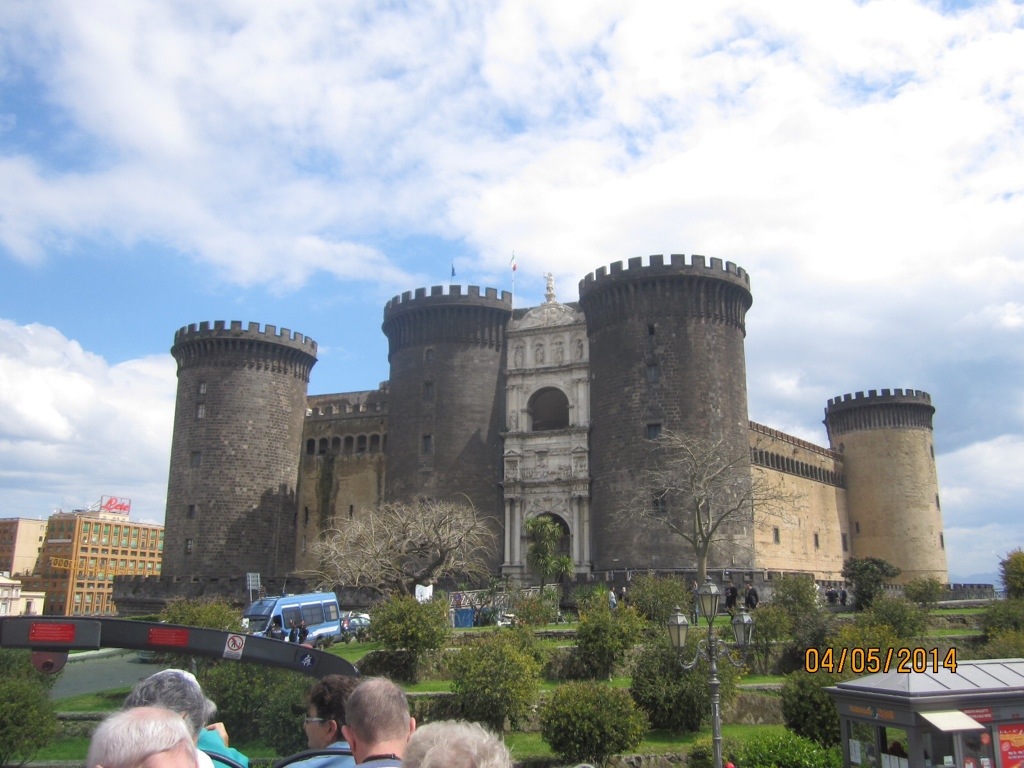
Some domes are just prettier than others.
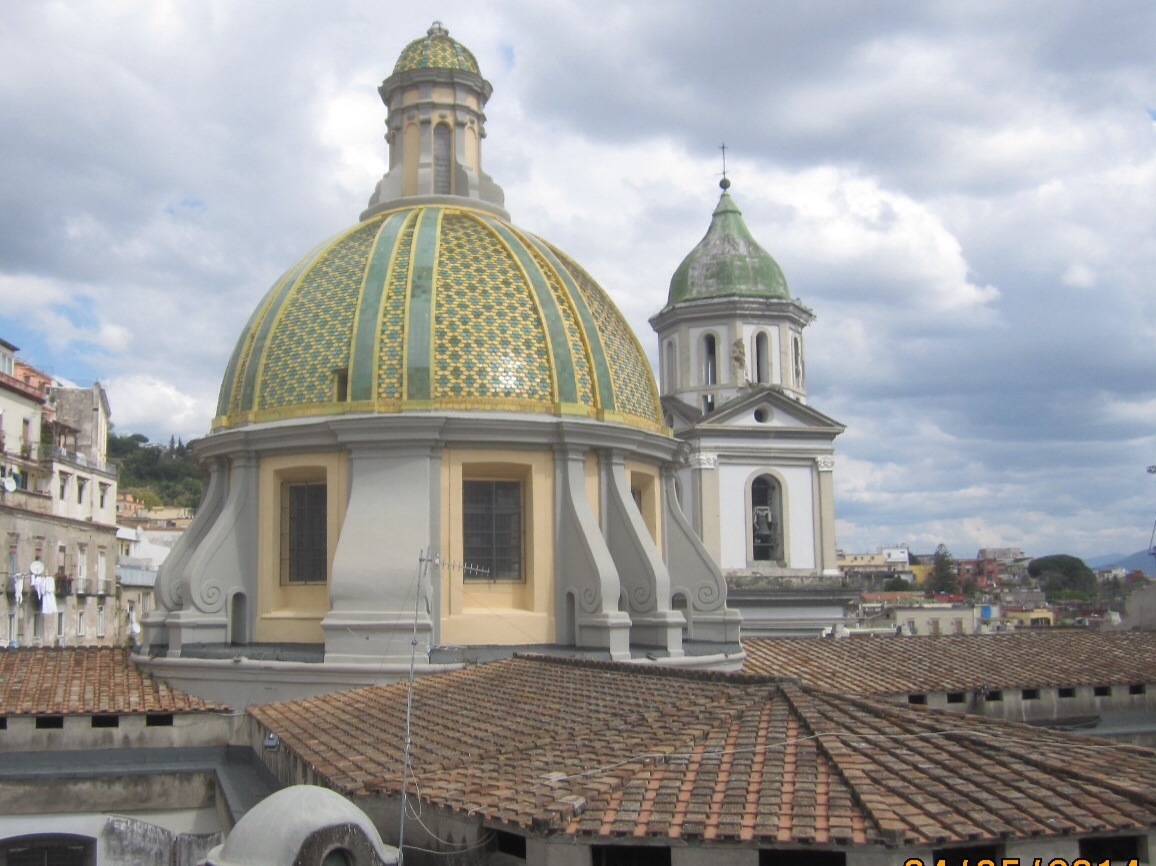
This is hanging out in Naples.
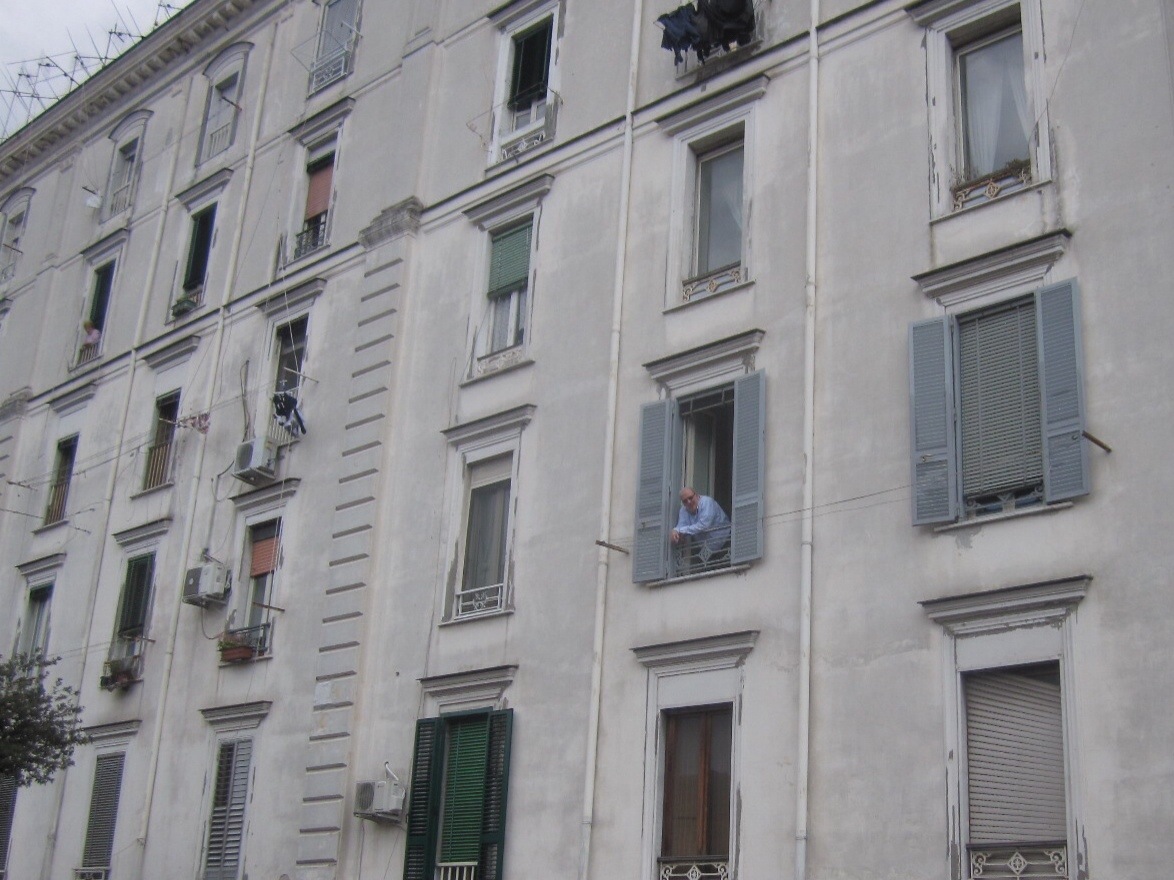
Supposedly, Naples is where the world-wide phenomena that is pizza first originated. For this reason, I wasn’t going to leave Naples without sampling a slice or two. We paused at a street cart displaying IHOP-pancake-sized pizzas behind a glass case. I pointed to show the vendor that I would like one. In a flash, he grabbed the small round pie, folded it in half once, then repeated the motion to fold it a second time, creating something that resembled a flattened drinking cone like you might find at an office water cooler. I wanted to yell, Hey, what are you doing to my pizza?! His movements flashed by so quickly, however, that no syllable had a chance of escaping.
Mama mia! My folded-up, over-priced, room temperature “pizza” was surprisingly good. The pizza sauce made it. It was fresh and tangy enough so that the scarcity of cheese and basil on what they were calling a margarita pizza didn’t seem to matter. We were in Naples, Italy and I was eating pizza. Beautiful!
[I sure would have thought we took a photo to mark this grand pizza occasion. We have so many pictures of us eating food, but sadly, not this one.]
The Unique Story of Pompeii
Not far from Naples lies the ancient archeological site that once was the thriving Roman city of Pompeii. The close proximity made it easy to visit with a day-trip by train.
By the time Jessica and I were touring Pompeii, we’d already spent many hours walking through several of the best-known, most well-preserved, Roman ruins in all the world, including the Ancient City of Jaresh (in Jordan) and Ephesus (in Turkey). Regardless, Pompeii was bound to be unique.
The story of how life ceased in the city of Pompeii may not be known to everyone. Here is a brief summary: On the morning of 24 August, 79 AD, Pompeii’s nearby companion, Mt. Vesuvius, violently erupted launching hot volcanic ash and stone into the air and down on top of the city. So much material fell in just a few hours that the entire city was buried to the point that single story houses were hidden entirely from view and only the upper part of two-story dwellings remained visible. Later, earthquakes connected to the eruption demolished what remained of the second stories. Most of the city’s residents managed to flee their homes before being killed, but far from all of them. It is estimated that 2,000 people died in the event; many of them were the rich people that chose to stay in their expensive homes for fear of losing everything….which obviously, they did anyway.
The streets doubled as drainage channels for water run-off and sewage. Hence the “crosswalks” that allowed for feces-free street crossings. (The stench must have been awful.)
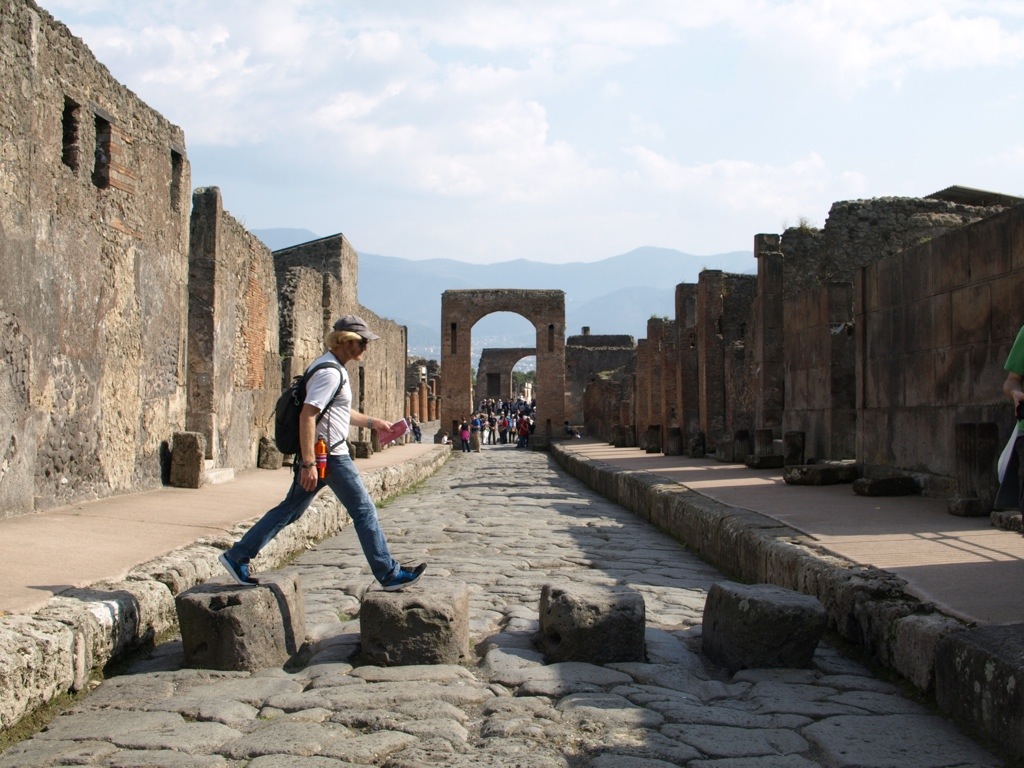
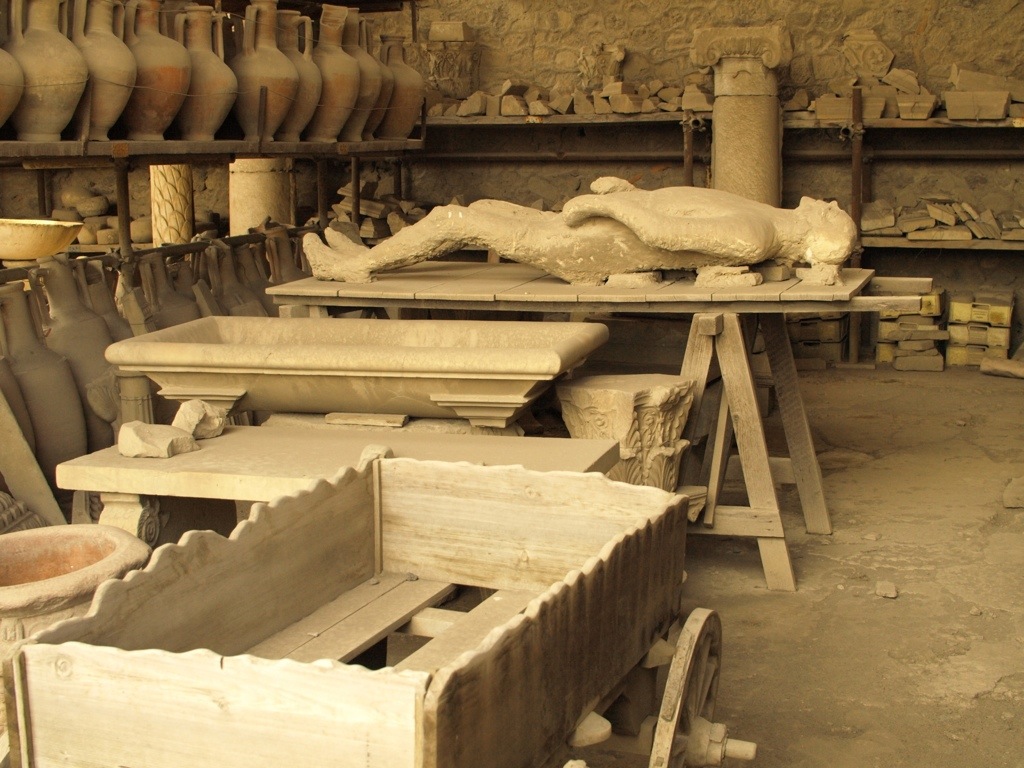
The degree of preservation of the streets and buildings of Pompeii is remarkable. We entered restaurants, stepping over the same thresholds crossed by ordinary hungry Pompeii citizens so many centuries ago. Some houses were cramped and simple, while others were large, sprawling and clearly lavish, with internal courtyards and even garages for the chariots/wagons. Paintings adorned many of the houses we saw. Though, in those days homeowners did not hang paintings on their walls. Instead, paint was infused directly into the plaster walls through the technique known as fresco.
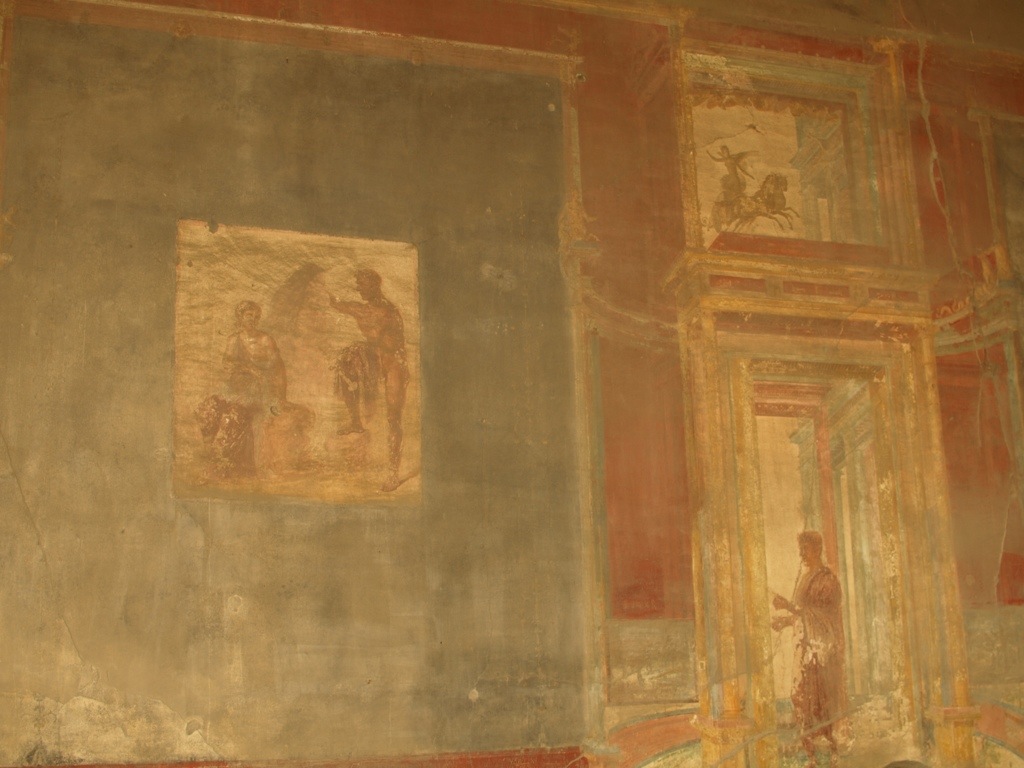
Photo taken from inside one of the bath houses. I bet this was fancy-shmancy in its heyday.
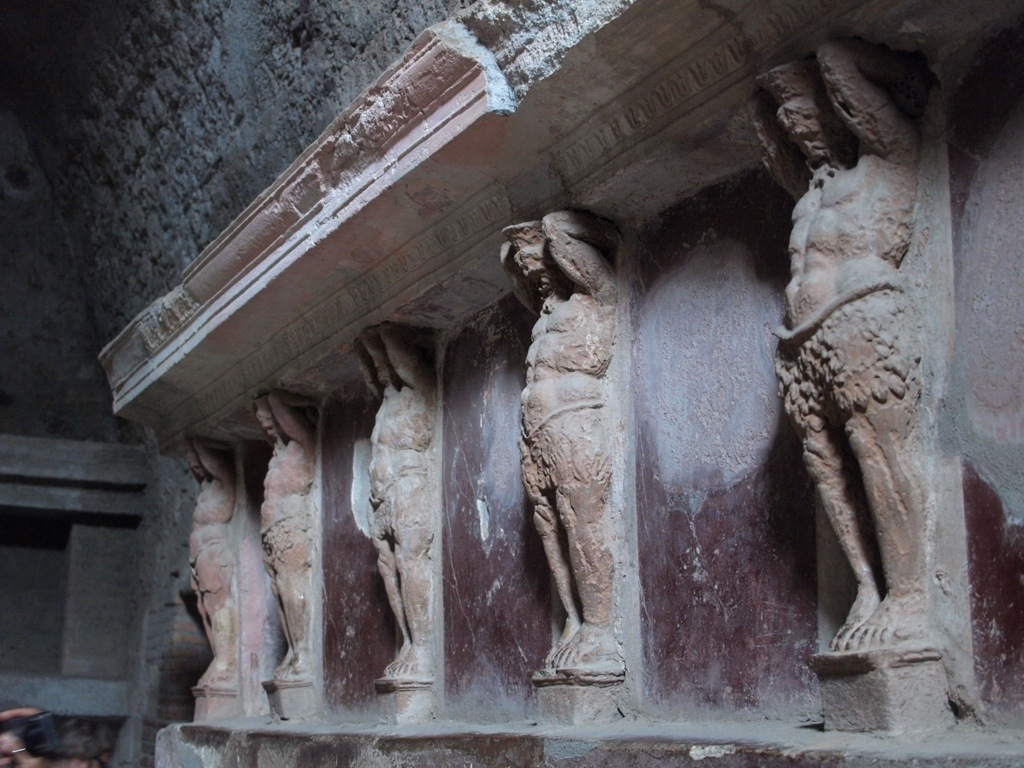
Exploring Pompeii was both fascinating and emotionally weighted, imparting the kind of melancholy one gets from visiting an old box of memories stored in the attic for decades.
Train-Ferry to Palermo, Sicily
Sicily is the island that looks like it’s getting kicked by Italy’s boot. We heard it said that Sicilians like to think of themselves as being a whole separate country from Italy, but the truth is that Sicily embodies what most people in the world think of as “Italian.” The Cosa Nostra, the Godfather, Nintendo’s Super Mario Bros….these are all exports from Sicily, Italy. In other words, when you think of the animated Italian with the burly chest, thick mustache, exaggerated gestures and sing-song accent…that is the personification of someone from Sicily.
Within Sicily we chose to visit Palermo because it appeared on several lists of must-see places in Italy. To get there from Naples, we took the train. Even across the strait between Sicily and the mainland of Italy, we took the train. How does a train cross a strait when there is no bridge connecting the two? On a ferry, of course. As strange as it sounds, that’s exactly what happened. They split our train into two pieces and rolled it onto a boat. We never imagined such a thing existed, but there we were:
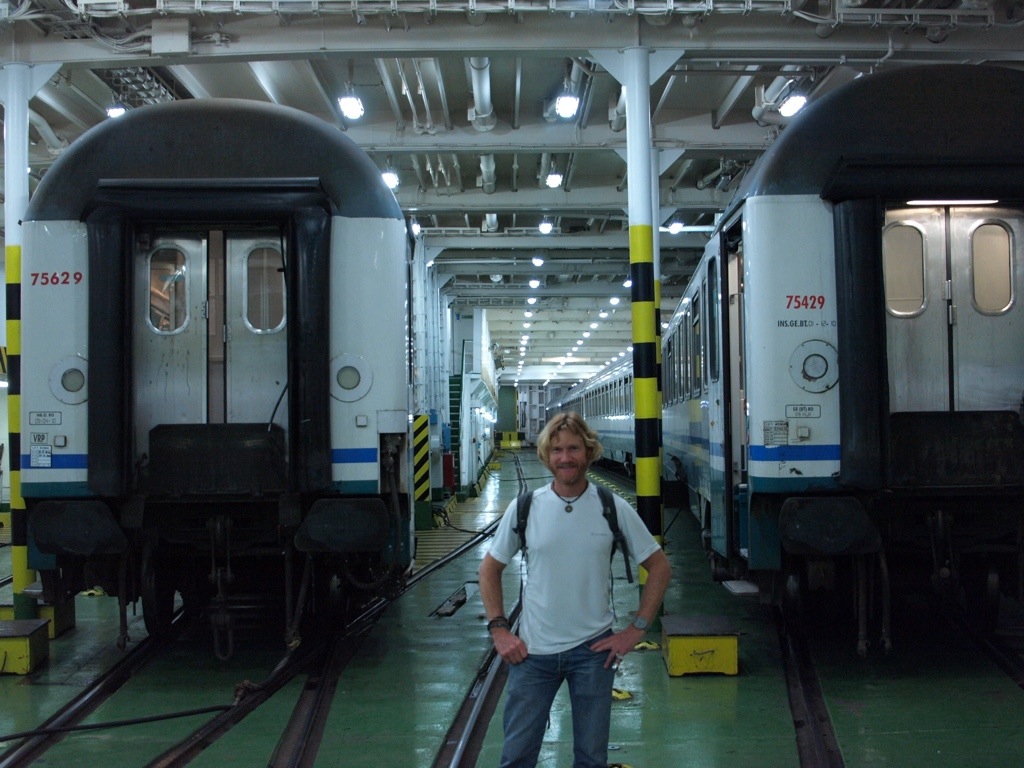
Palermo was a cool choice. More credit card points were used to make our hotel stay free. However, this time we were smarter and read a few hotel reviews before booking, leading to much better results. With the exception of the beach, which required a ride on a city bus, all of the coolest sights of Palermo were within walking distance.
Oh Great…Another Church
It would have been interesting to count the number of churches we have entered since our trip began. 30? 40? 50? Who knows? Should we count the many churches we have approached and looked at, but for one reason or another did not enter? We’d surely bust through 100!
Churches (and mosques) stand out. They are wonders of artistry and architecture. Whether looked upon positively or to the opposite, they are amazing achievements for ALL they represent. Nevertheless, it is possible to reach a saturation point. Speakly solely for myself, Ladies and gentleman, the thrill has left the building.
With that as a backdrop, we visited a chapel in Palermo that brought back the wow in an instant. What made this church pop were the gold-laiden mosaics that adorned every corner of the church… both inside and out. The mixture of cultural styles were unique– patterns and designs of Sufi Islam blended easily with standard Christian themes. We’ve seen a lot of churches, but never one like this.
It is rare to find such an intricate blend of classic Christian symbols interspersed with Arabic stylings. Every bit of the church’s interior is mosaic.
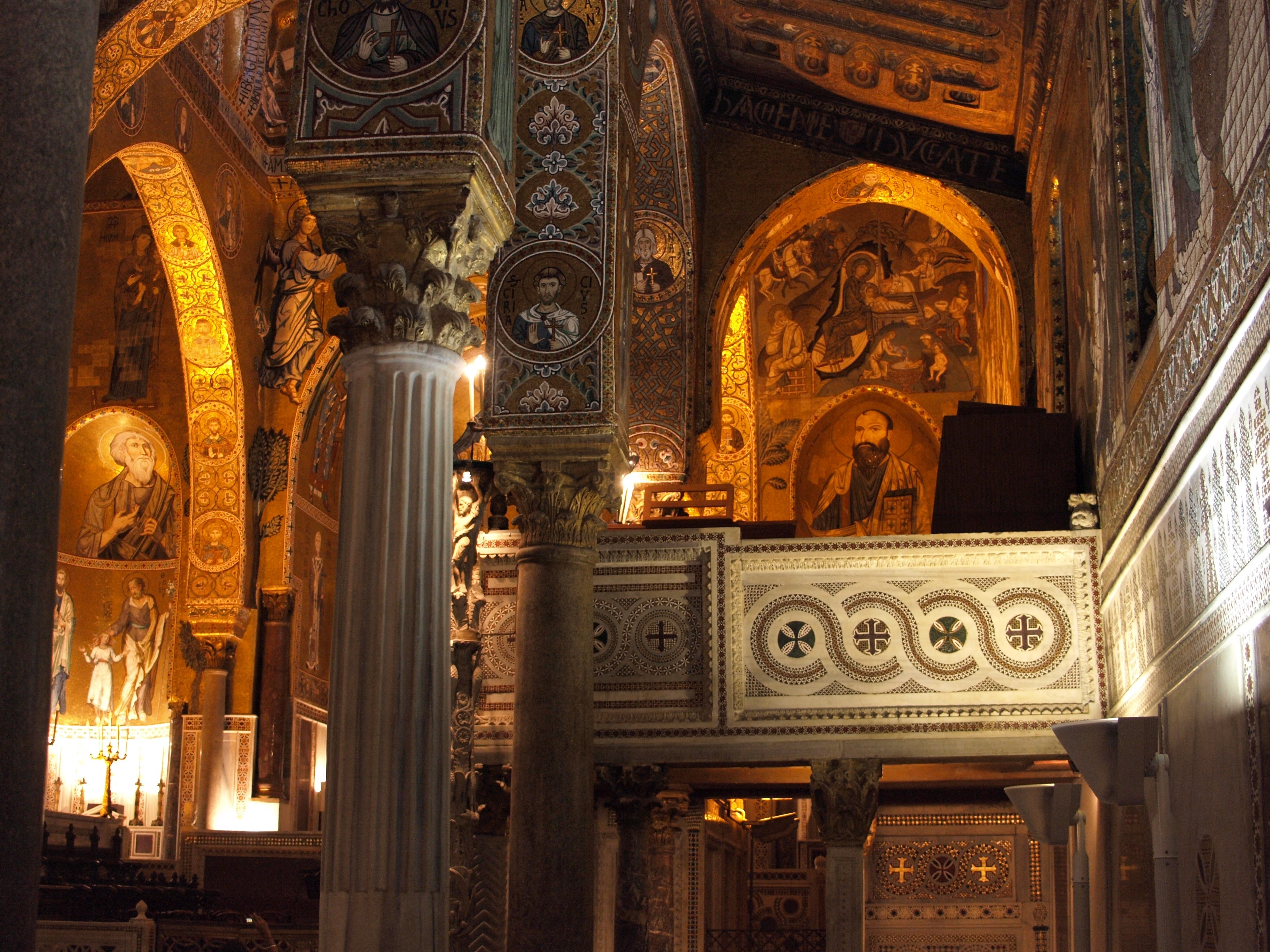
I would love to make a floor like this.
Biblical scenes leap from the walls in gold mosaic.
The chapel’s exterior face was also created tile by tile.
She’s Got A Ticket to Ride…Or Does She?
We kept hearing about Palermo’s fantastic beaches, about a 30 minute public bus ride away from where we were staying. It sounds simple enough, but Italy’s public transportation infrastructure is a bit of a mess, especially when compared to so many other places we’ve traveled. We waited close to 45 minutes for our bus to the beach.
Perhaps they would have more money to improve the bus service if they had a better system for charging people. The way it works now is that riders buy a ticket from a machine sitting next to the bus stop. The machine prints out a little receipt that shows you have paid. Great, but here’s the odd part, you don’t have to present the ticket to the driver. Instead, you simply board the bus. To enforce compliance with the ticket requirement, a transportation official will occasionally get on the bus and ask everyone on board to show their tickets. Not having a ticket means you could be fined…..or you could simply get kicked off the bus.
To the surprise of exactly no one, it appeared to us that many people frequently ride the buses without paying.
Unexpected Beach Wear
After finally making it to the beach, we found it fabulous. The water was too harshly cold for comfortable swimming, but wading into mild surf was totally doable. It remained surprisingly shallow as I marched away from the beach and deeper into the Mediterranean. Jessica was frustrated to no end, because some how she’d come to the beach unprepared. She had no bathing suit or towel. Exactly how this happened we are not sure. Our last couple of beach visits didn’t involve entering the water….still too cold.
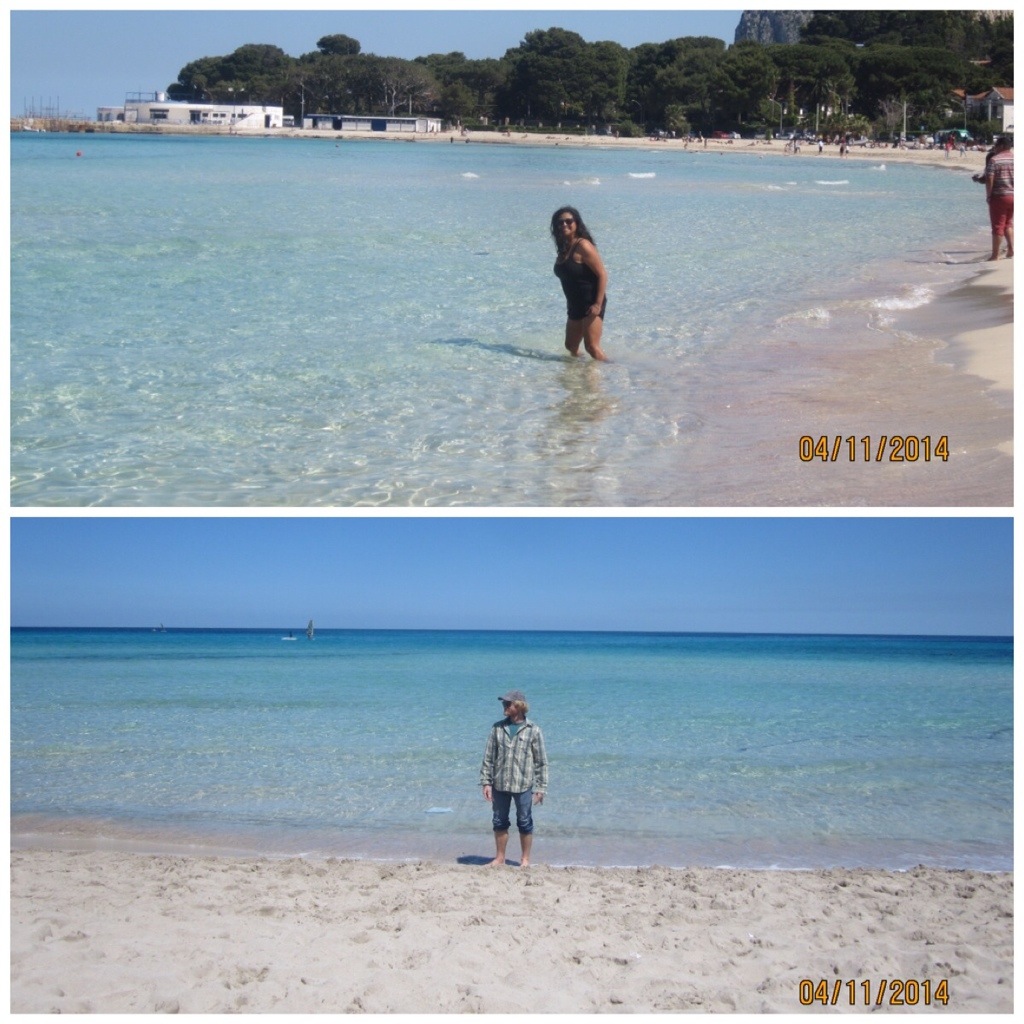
At least I was prepared with my frisbee so Jessica and I threw it back ‘n forth a bit. Bodies were strewn about the sand, but we found a little pocket big enough for us to throw. At one point, a woman I’d guess to be in her early 30’s walked cluelessly close to our parlay. A throw I made to Jessica flew a little wide, striking the woman in the right thigh. She went off!
I immediately began apologizing as did Jessica, but this woman was having none of it. She ranted loudly saying who knows what (because it was all in Italian) until any sympathies Jessica and I had for her turned into a mockery of her behavior. Her reaction was comically disproportionate to the event. Did she think she’d been hit by a truck? C’mon, lady, you’re going to be okay. Even after she’d walked past us she was still complaining to everyone who would listen about how she’d become a victim of those crazy Frisbee-throwing Americans.
Jessica Finds the BLAM!
Walk down any shopping district in Italy and high fashion will meet you on the sidewalk. Large retail windows burst with mannequins dressed in the latest. On the sidewalk, image-conscious locals dress to impress regardless. The northern Italian city of Milan is known the world over for its contribution to the fashion industry, but truly…it’s everywhere in Italy.
One particular corner clothing shop near our hotel caught Jessica’s eye and she dove in for a look-see. I had wandered away in search of a grocery store at that moment and vowed to catch up with her a few minutes later. This was her moment to shop!
Clothes-shopping is always a challenge for Jessica. Finding the right print, style, design, color, fabric, cut, etc. If only she had a fashion consultant to help her out.
Enter Iriana, one of the sales staff at the store. All smiles and energy, Iriana approached Jessica and offered to help. Jessica played it off with a casual wave, but Iriana was undeterred and sprung into action, first sizing her up and then seizing a few items from the racks for Jessica to try on. Jessica’s first thought is that she doesn’t know me and how hard it is for me to find the right clothes…but I’ll humor her.
Iriana wasn’t offering Jessica a mere skirt or top, she was loading her up with complete ensembles. AND IT WAS TOTALLY WORKING! Jessica stepped from the dressing room, looking fabulous. Iriana kept nailing it over and over again. By the time I arrived to the store from the supermarket, Jessica was beaming in front of the full-length mirror. Check her out!

Poor Iriana didn’t have a clue about why Jessica wouldn’t be buying all of the fine clothes she was clearly loving. Our circumstances weren’t going to allow it and no amount of desire would change that. In the very end, Jessica bought a good-looking pair of jeans from the store, but left the trench coat, dresses, shoes, shirts, scarves, sunglasses, belts, purses and other bling behind.
What Jessica learned from her experience with Iriana is that the possibilities are far greater than she had imagined with regard to what outfit potentials there are in the world.
Italy’s Split Personality
Italy was the 14th country visited on our trip. In none of the other 13 countries that we’d been did we observe so many joggers/runners. It wasn’t that we never saw any joggers in other countries, only that in Italy they seemed to be everywhere. Staying fit and healthy was clearly a priority for a lot of Italians.
In stark contrast to the above observation, Italians sure smoke a lot. We’d just come from Greece and Turkey, so we were used to seeing nearly a cigarette per person. Nevertheless, the smoking culture was still especially striking in southern Italy. A walk down the busy sidewalks of Palermo, Sicily was a fight for pockets of fresh air.
Further contradictions were in evidence on the streets where the distance between rich and poor begged for mercy. Extreme fashion and fancy cars cruised past regular people that were clearly in a state of struggle. In our travels, we’ve been directly asked for money on many occasions; however, nowhere were we approached more often than in Italy. We started the year with $205 set aside to give away- $100 was from our own pockets and another $105 I collected from friends and coworkers prior to leaving. Point being, we are inclined and ready to give away money when the moment feels right. Handing over money to someone just because they asked almost never feels right.
Making a buck is hard and people do what they need to do to survive, we get that. People who had no say in where they were born and under what circumstances sometimes just need some good news. On arriving to Italy, we had about $80 left in the give-away fund. Before leaving Palermo, I gave (the equivalent of) $30 to an Bangladeshi guy working the intersection as a windshield washer. I observed him for a moment and saw that he was always respectful and never pushy in his approach to people as he asked if they’d like their windshield cleaned.
I walked up to him and asked him if he spoke English. He said, yes. But I think his response would have been yes to anything I uttered. He spoke no English. There was no way for me to explain why I was handing him 20 euros, but when I did, his emotions swelled up in an instant. He gave me a moist-eyed hug and may even have kissed me on the cheek. The moment came and went in a blur, but there was nothing about it that didn’t feel right.
Former Colonial Subjects Coming Home to Sell Handbags
The Bangladeshi man was just one of many immigrants we spotted in Italy. A large number of them were immigrants from northern and eastern African countries; specifically, those countries that were once Italian colonies. At nearly every tourist site we visited throughout Italy, a cluster of African men were hawking knock-off watches and handbags. I really wanted to hear their stories, but found it difficult to engage myself in conversation with them. Guess I should have feigned interest in a Rolex.
Since witnessing the phenomenon of African immigrants in Italy first hand, I’ve seen several stories in the news about how the Italian coast guard has rescued thousands of Africans from drowning as they try to cross the Mediterranean in dilapidated ships. The Italian government claims the rescue missions cost millions of dollars it doesn’t have, and wants the other European Union countries to pitch in money to help the humanitarian effort. It’s a bit of a mess.
I cannot fathom the level of desperation that must exist for someone to board a rusty old boat and embark on a weeks-long journey across the Mediterranean to a foreign land.
The Amalfi Coast
Have you ever heard of the Amalfi Coast? It is where Italy’s rich and famous go when they need to take a break from it all. Many celebrities, rich politicians and corporate elites have vacation homes along the Amalfi Coast. It is a little bit out of the way and probably reached most conveniently by yacht. Yet, we aimed to go.
We left Palermo via the same route we had arrived– train-ferry-train –and proceeded to the town of Salerno where we stayed for four nights. Salerno is near, but not on, the Amalfi Coast. Our choice to stay there was determined solely by price. Staying in one of the picturesque villages that dot the Amalfi Coast was painfully far out of our price range.
Salerno is a coastal working town most famous historically for having the first medical school in the world with origins dating back to the 9th century.
For us, Salerno served as our gateway to the Amalfi Coast, offering both a ferry and bus to get there. We chose to experience both. In the morning we boarded a small ship that cruised up the rocky coast until docking at the tiny town of Amalfi, the original town that gave the entire coastline its name. In the afternoon we returned by bus on the swervy road that links Amalfi to its neighboring villages and eventually back to Salerno where we started. The ferry was way better, by the way. The bus kept having to stop and let oncoming cars squeeze past it whenever the cliff-hugging road narrowed to one lane.
The Amalfi Coast is home to a dozen picture-perfect towns like Amalfi. Common to all are classic Italian architecture, outdoor art, sidewalk cafes, clothing and souvenir shops, and, of course, lots of gelato stands. At the center of Amalfi was the grand Amalfi Cathedral with its dramatic stepped entrance.
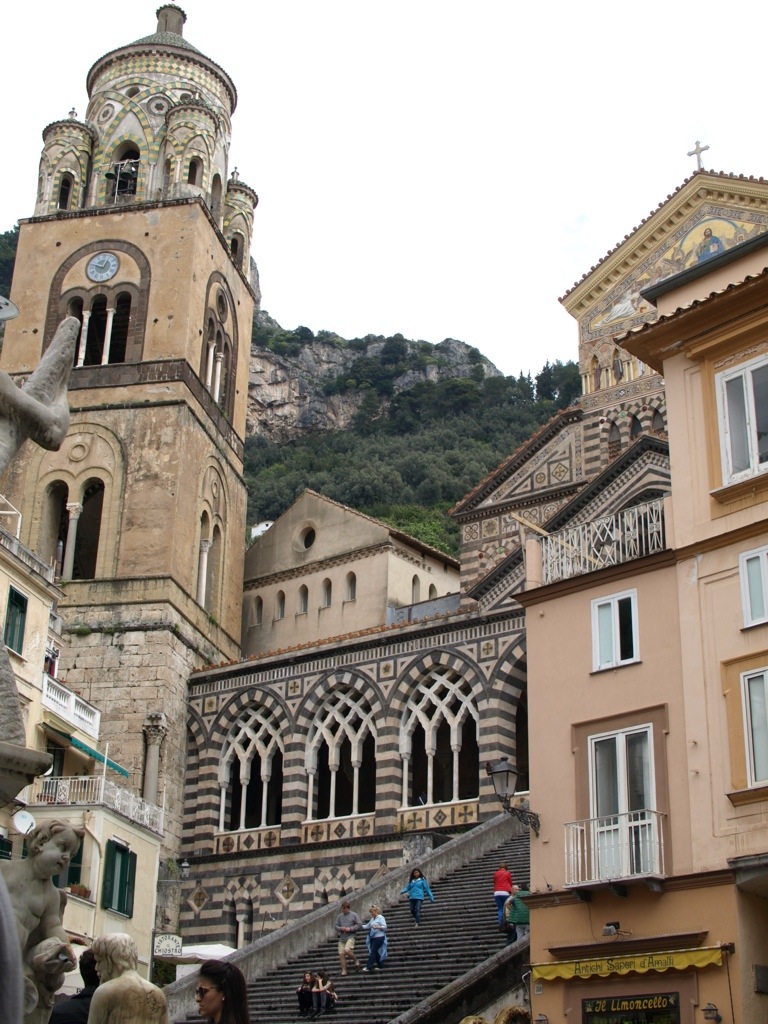
As we wandered through the streets of Amalfi, we kept hearing rushing water. We saw no rivers or streams running through this tiny village, so where was the sound coming from. Eventually we walked over a grate in the street and figured it out. There was water flowing underneath the streets! Fresh water from the mountains for everyone! Our stroll to the far edge of town finally brought us to the puzzle-picture-worthy source.

There are quieter, less touristy sections of Amalfi.
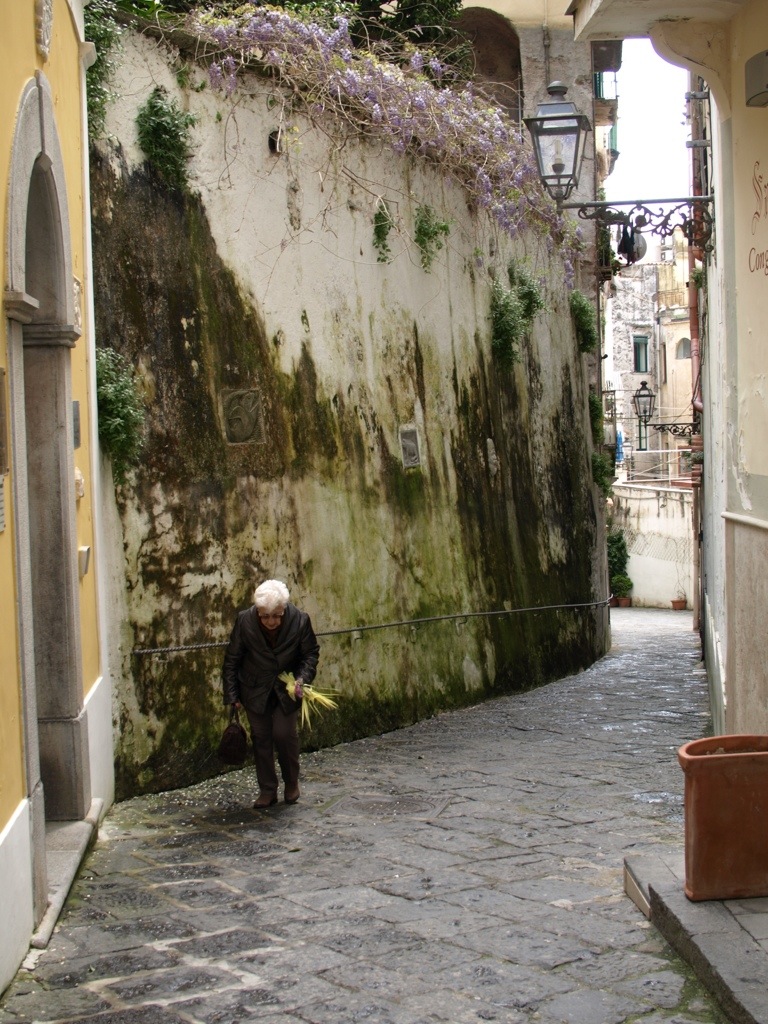
Each of these coastal towns has its own protected boat dock and a small beach-fronts.
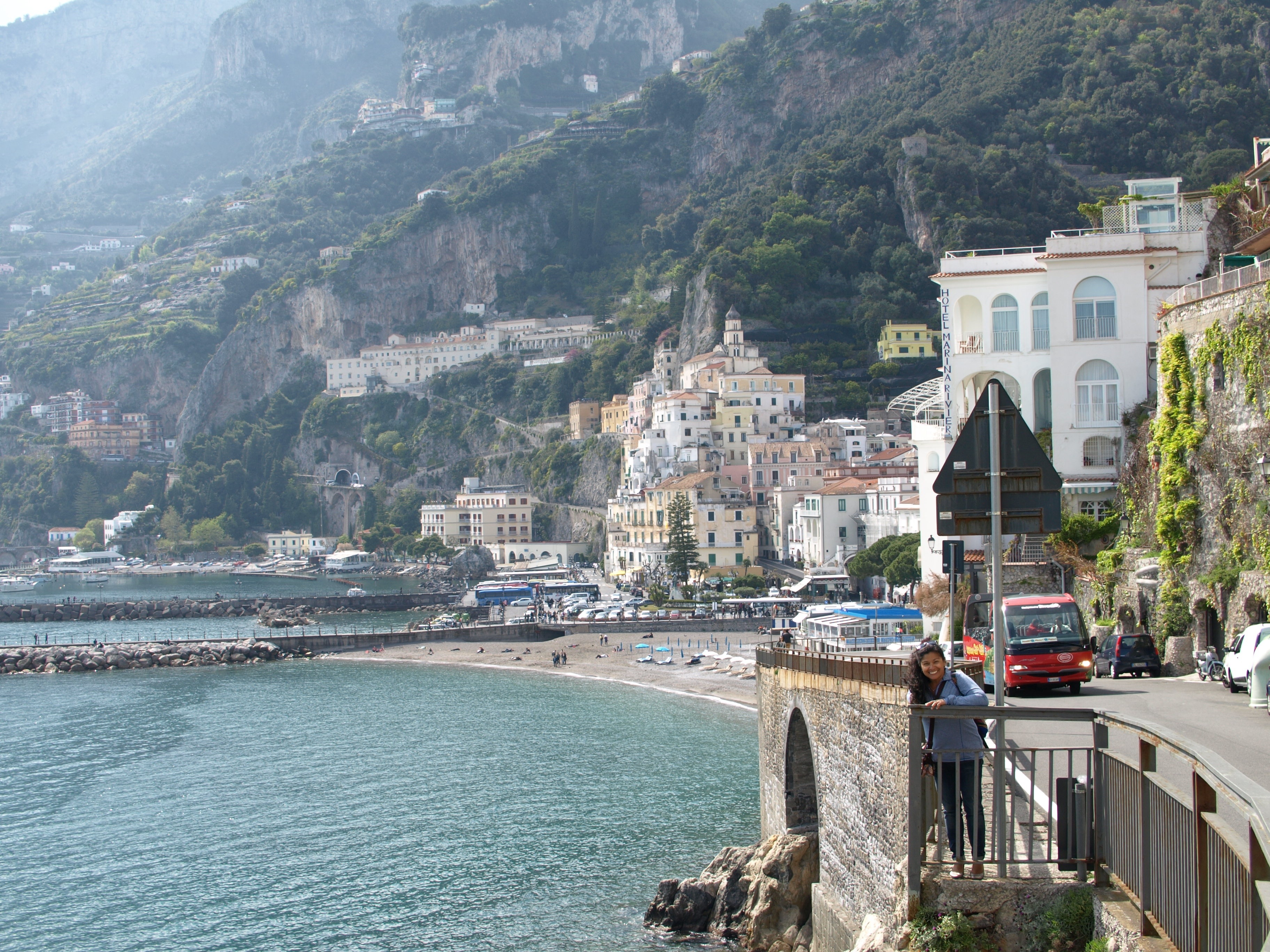
Of Assisi
Even though at this point we’d been ricocheting around Italy for several weeks, our next stop would prove to be a true gem in the gold mine that Italy is- the small town of Assisi -best known as the birthplace of St. Francis. Assisi wasn’t even on our radar until good ol’ Boris made the recommendation. So glad he did.
 Unlike Venice, Rome, Naples, Pompeii, Palermo and the Amalfi Coast, Assisi is practically silent by comparison. It’s located in the broad middle of everywhere, but not along any of the main highways or rail lines that connect the larger cities. Small farms and villages dominate the generally flat landscape though small hills bubble-up here and there. Assisi was built on one such raised part of the Earth giving it plentiful views of the Italian countryside from every angle.
Unlike Venice, Rome, Naples, Pompeii, Palermo and the Amalfi Coast, Assisi is practically silent by comparison. It’s located in the broad middle of everywhere, but not along any of the main highways or rail lines that connect the larger cities. Small farms and villages dominate the generally flat landscape though small hills bubble-up here and there. Assisi was built on one such raised part of the Earth giving it plentiful views of the Italian countryside from every angle.
At the mound’s highest point, a castle was built in The 12th century. Stone walls, turrets, ramparts, courtyards…it was the classic medieval castle.
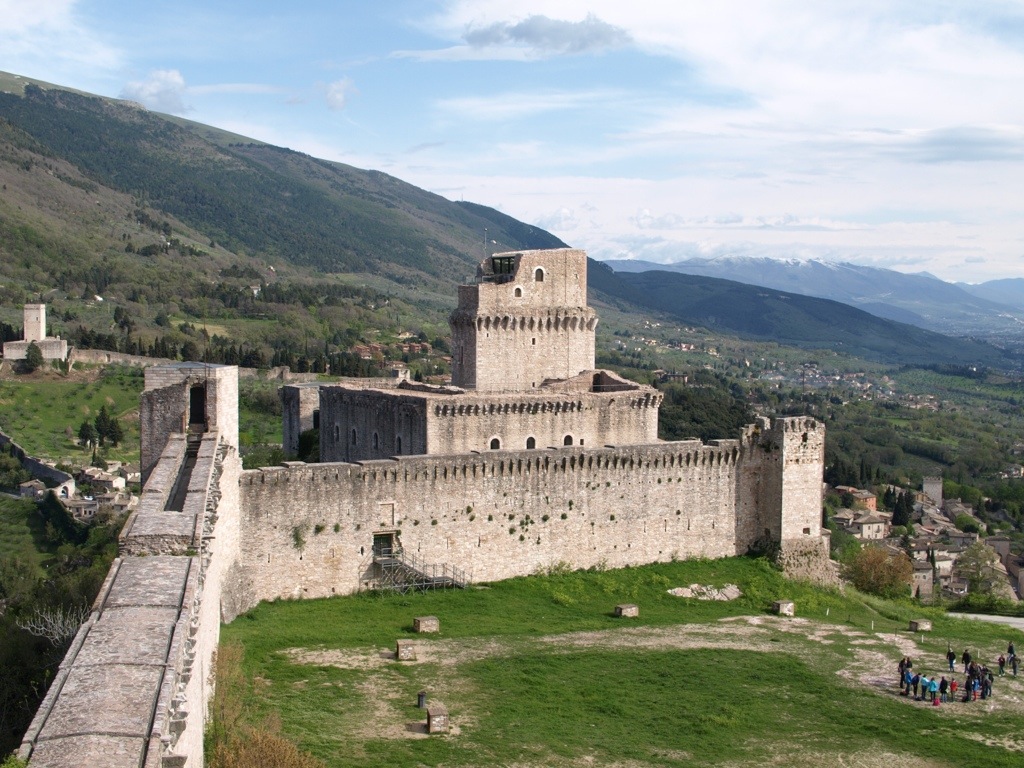
Mannequins wearing medieval dress provided the entertainment.
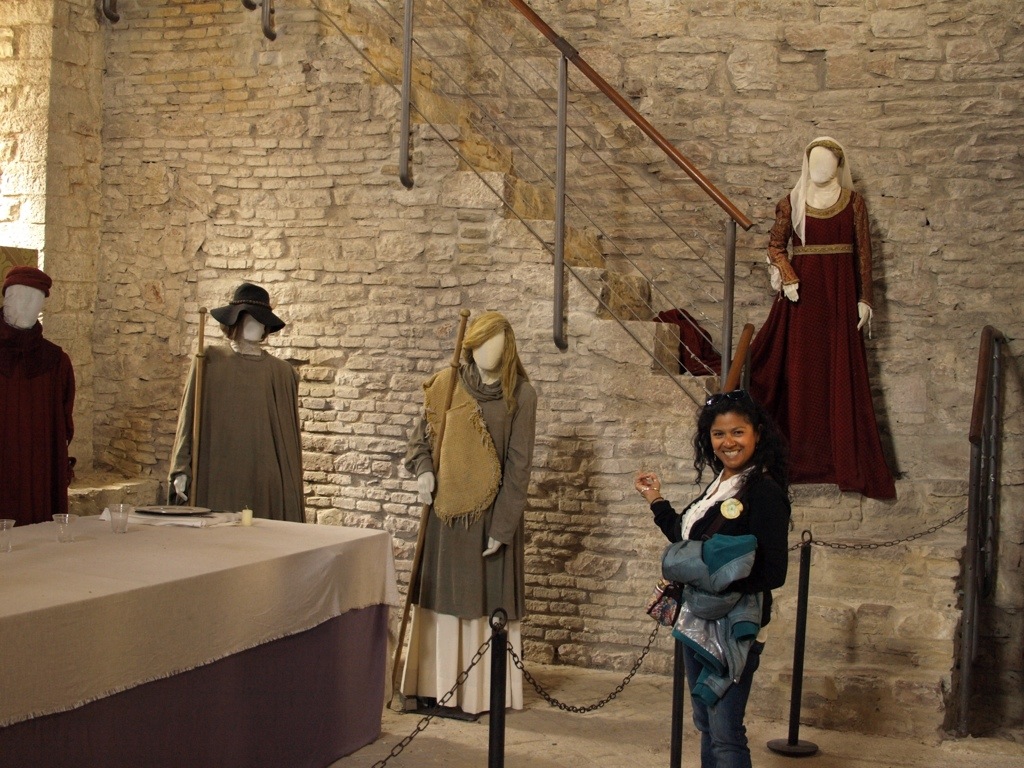
We walked through the castle walls to the southernmost turret.
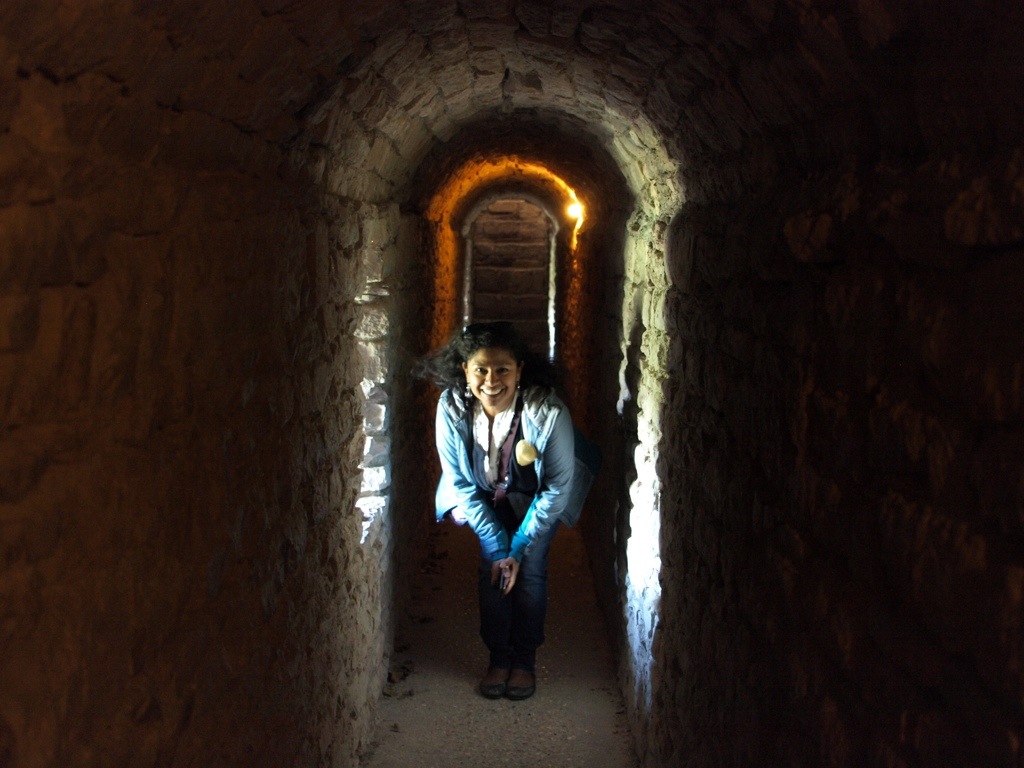
The castle offered great window seat views of Assisi and the grand countryside below.
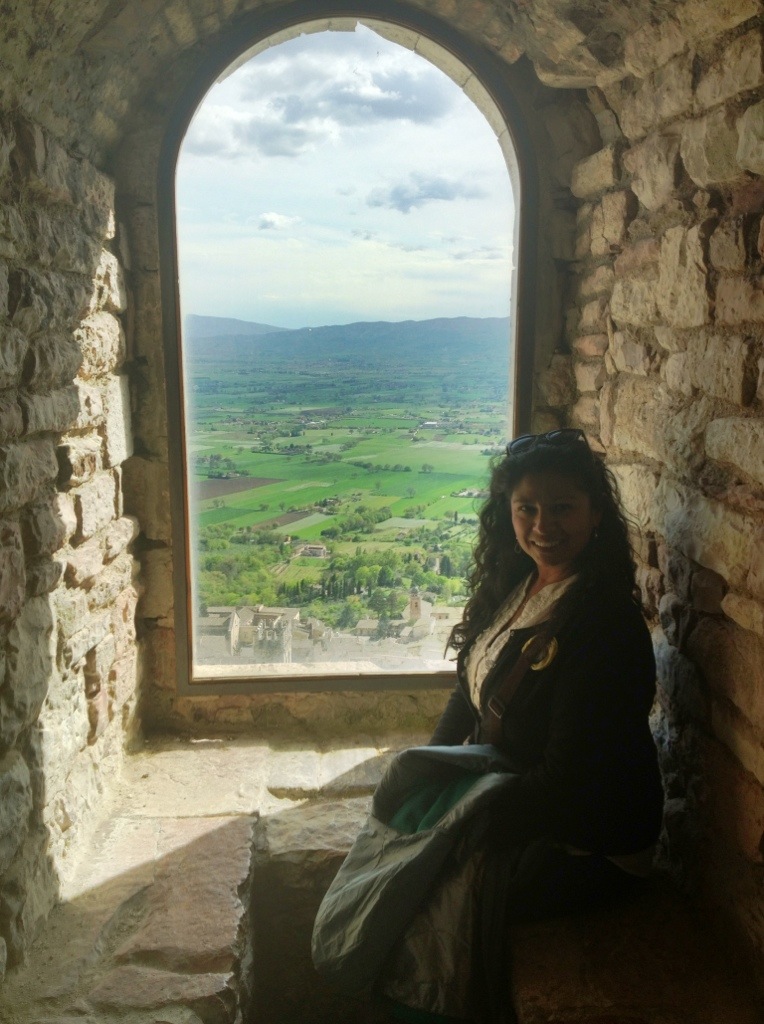
Headline: UNESCO Stifles Growth
By all appearances, Assisi was frozen in time. How easy it was to imagine feudal lords and fiefdoms, knights and wizards, princes and peasants. (Kings and queens rule from afar.) One reason for Assisi’s lack of “progress” is its designation as a UNESCO World Heritage Site. Once a site gets annointed with that label, all new building stops. Renovations are allowed, but only if they conform to the historical record. [The running joke between Jessica and me is that they give out this designation far too easily. We once pointed to an old park bench and wondered if it too is a UNESCO World Heritage Site. In our travels alone, we have visited probably 40 such sites…so far.]
Assisi is clean and pretty throughout, almost (dare I say) Disney-esque. Cafes and shops straddle the narrow streets that seem only to exist for connecting one church to another. For being such a small town, Assisi sure has a lot of major churches. To be expected, most of Assisi’s churches have some connection to St Francis of Assisi. Either he went there, had a vision there, or it was built to honor him after his death.
Though there aren’t many, the cars that drive over Assisi’s streets make a strong hum as tires roll over the cobblestones embedded in every winding and narrow street. There are stone-cobbled sidewalks for walking, too, but these were too often not wide enough to hold the throngs of tourists (and large groups of school-kids) that visit Assisi each day.
Having a Moment
It has already happened many times on our trip. We find ourselves suddenly flooded with emotion when the grandness of our unique circumstance hits us. Standing before a particularly beautiful or personally meaningful scene can trigger this feeling. We continue to question it as if it isn’t really happening. “Can you believe we’re doing this?” “Did you ever in your life think you’d be in fill-in-the-blank. “Can you believe we are here?” We’ve been at this for eight months and the magic has hardly diminished.
Often times it is just one of us that gets flooded with the emotion that causes water to pool at the bottom of the eyes. One of us might say to the other, “I’m having a moment.” On occasion, it hits us both simultaneously.
Jessica and I shared an unexpected moment in Assisi while simply strolling through the town on one of its quieter streets. It was later in the day and there were only a few other tourists around. Within earshot of us was a man walking with his wife, their two young children close by. Sounding thoroughly American, we heard him say, “I would really like to go to Petra some day.”
His sentiment affected us immediately.
We’ve been to Petra. We’ve wandered past those magnificent ancient ruins and felt the awe and wonder they inspire. It wasn’t that long ago, in fact….it happened, not during some distant vacation, but during this one, simply unbelievable, year. We will not have any unfulfilled desires to ‘go to Petra some day,’ because now we’ve been there.
I cannot bring myself to say we are “blessed,” though undeniably that is sometimes how it feels. We are fortunate. So extremely fortunate that our lives will forever include this amazing year.
[Oh great. As I write these words and then read them aloud for Jessica….we relive that “moment.” yet again.]
The sunsets in Assisi were pretty spectack!
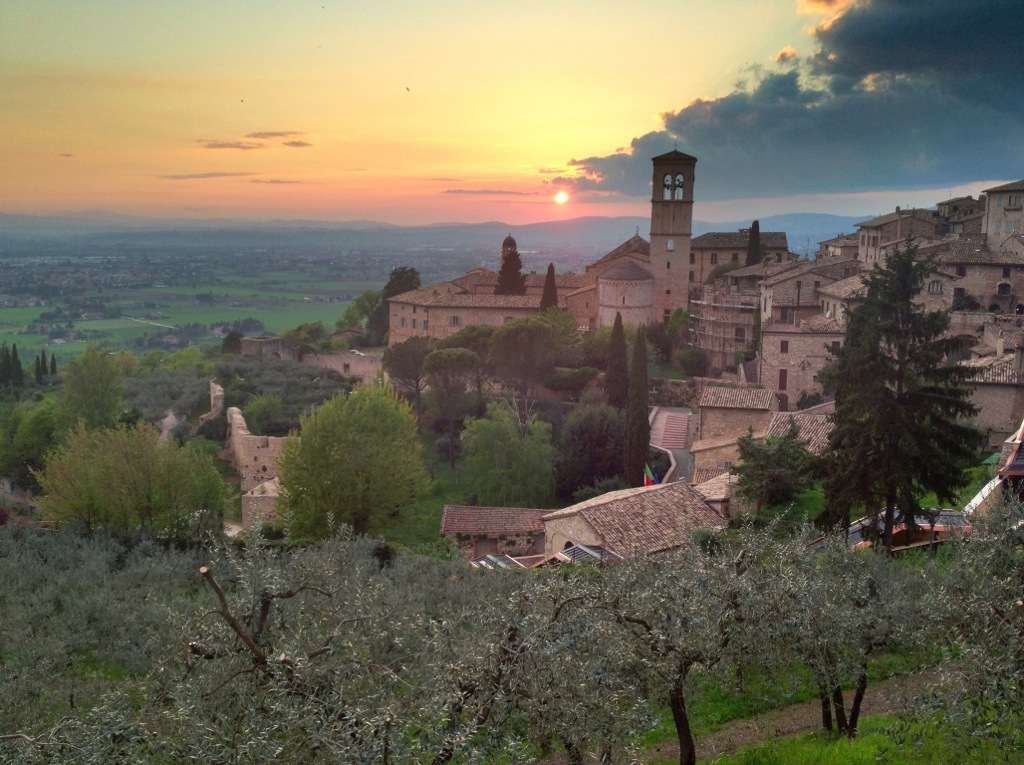
Good Ol’ Italian Cooking?
Assisi is expensive, especially the food. It’s the classic tourist trap in every sense. Jessica and I survived mostly on granola for breakfast and peanut butter sandwiches for everything else. One of the few times we “ate out,” we chose a small corner cafe and shared a delicious-looking (from the menu’s picture) tortellini dish. After waiting at our table about 10 minutes, the “cook”/waiter brought our meal. He struggled at first to remove the plastic seal that covered our (formerly frozen) entree’s container. He finally succeeded with a flourish before handing us each a plastic fork and wishing us, Bon apetito.
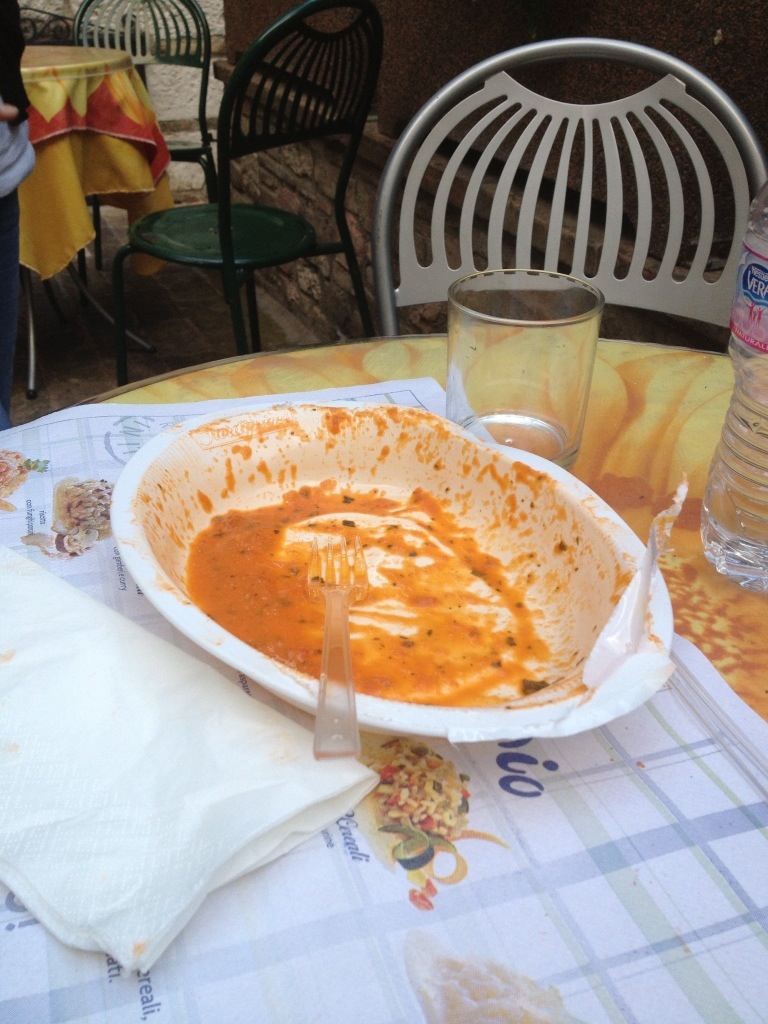
Okay, it WAS delicious, but still not what we would have expected from an Italian restaurant in Italy. How easily he could have fooled us just by transferring the “TV dinner” to a plate prior to serving it.
My theory is that businesses in Assisi are so tightly regulated that getting a license for a restaurant kitchen is almost impossible, and that microwave ovens occupy a loophole in the laws.
Despite the above incident, we both agreed that of all the places in Italy we have visited so far, Assisi emerges as a favorite. It’s just so dang pleasant, peaceful and pretty. Thank you, Boris, for suggesting it to us.
North vs. South
After Assisi, we went to Rimini, Italy where I played in the Paganello Beach Ultimate Tournament (separate blog post). Next came our visit to Cinque Terre (also a separate post). From there we traveled east to the Northern Italian city of Padova (closer to Venice).
This post is labeled Southern Italy, so no, our time in Padova technically does not belong here. It does, however, give me an opening to define what is meant by Southern Italy and it’s probably not what you think. All but the most learned and sophisticated of outsiders is unaware of the stark historical and cultural differences between Northern and Southern Italy. As a matter of geography, it’s not difficult to define Northern Italy- it’s the swath of land across the top of the boot; the part bordering the Swiss Alps. What should come as a surprise to most is that everything else is considered (by those in the north, at least) to be Southern Italy. Even Florence (and the whole Tuscany region), as far north as it looks on the map, is considered by norther Italians to be part of “the South.” These distinctions are less about geography and more about character. (Think about how the Yankees and Southerners in the US feel about each other.)
In the eyes of northern Italians, those from the south are an embarrassing source of all classic Italian stereotypes- from hands that do the talking, to the emotion-filled and affected “Italian accent,” to the thick black matching eyebrow and mustache set…that’s Southern Italy and northern Italians would be better off without them.
Ever Heard of Enchiladas?
Padova was our last stop before leaving Italy and we were there primarily to pause a few days at the family home of everybody’s good friend, Boris. On the day we arrived, only Boris’ sister, Micol, was at home. Boris has been living in Perth, Australia for more than two years now and his parents just happened to be at the tail-end of a vacation to see him at the time we arrived to their house.
I had been to Boris’ home once before (in 2006). It’s a large, but modest two-story house built on a couple of acres of land. Enough land for raising chickens and planting a variety of vegetables. With the parents away on vacation, Micol was left doing all the chores, including shucking a big tub of freshly picked peas. Grateful for the free accommodations, Jessica and I (mostly Jessica) contributed to the pea-shucking effort, too.
We also got to know Micol’s boyfriend, Marco, during our stay and liked him a lot. He visits often and helps Micol out as needed. Together, they prepared dinner for us and treated us far too well. As a return gesture, I volunteered to make enchiladas for them. At the grocery store, Jessica and I found that they sold tortillas, but they were crazy expensive. For example, a package of three tortillas was the equivalent of about $4.00. Jessica kidded that I should just make ’em.
I’d never in my life made tortillas, but with that little comment, I was off to the races. Somehow I did it and they turned out okay.
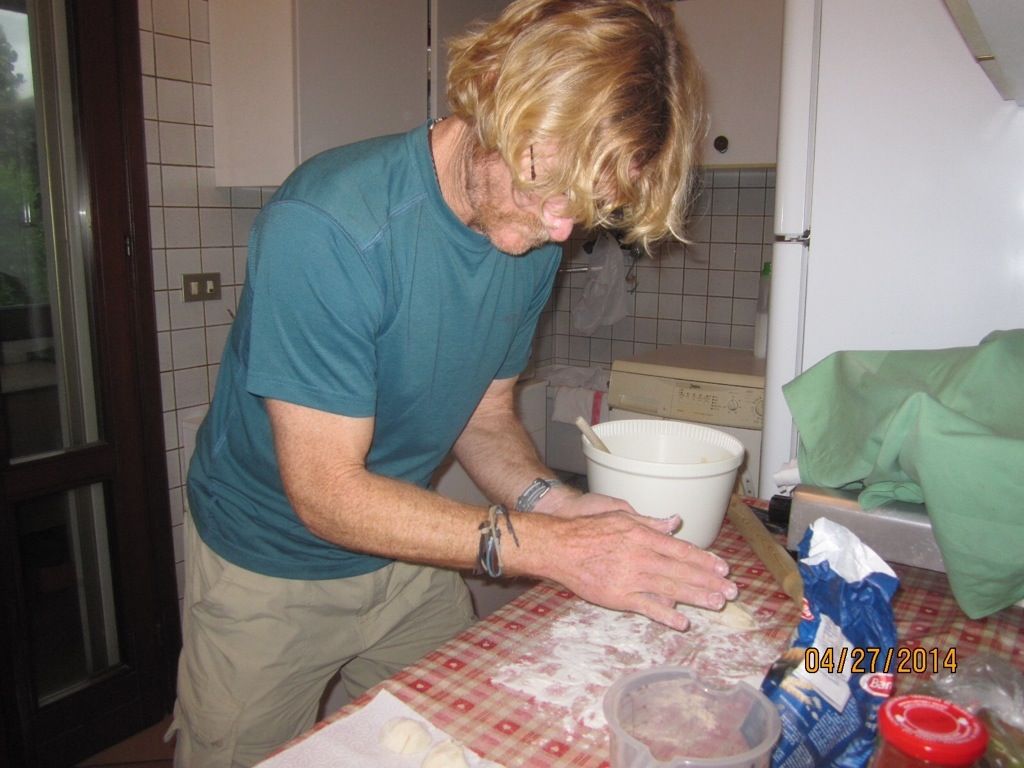
The chicken, the cheese, the sauce…it all came together and the enchiladas were a hit. At the dinner table, I asked Marco if he’d ever eaten enchiladas before. His reply was, No. Then, to my shock, he also said he’d never even heard of them before! Whoa!!!
A Happy Rosie
For Boris’ parents, their trip to Australia would mark the first extended vacation they have been on in literally decades. One side-effect of this vacation-less life was that Rosie, the family dog, had almost NEVER been left alone. Now, she faced days home alone with the parents gone and Micol working her day job at a bank.
What a joyful reunion it was when Boris’ parents returned. Here is Boris’ father greeting Rosie after being away for two weeks.
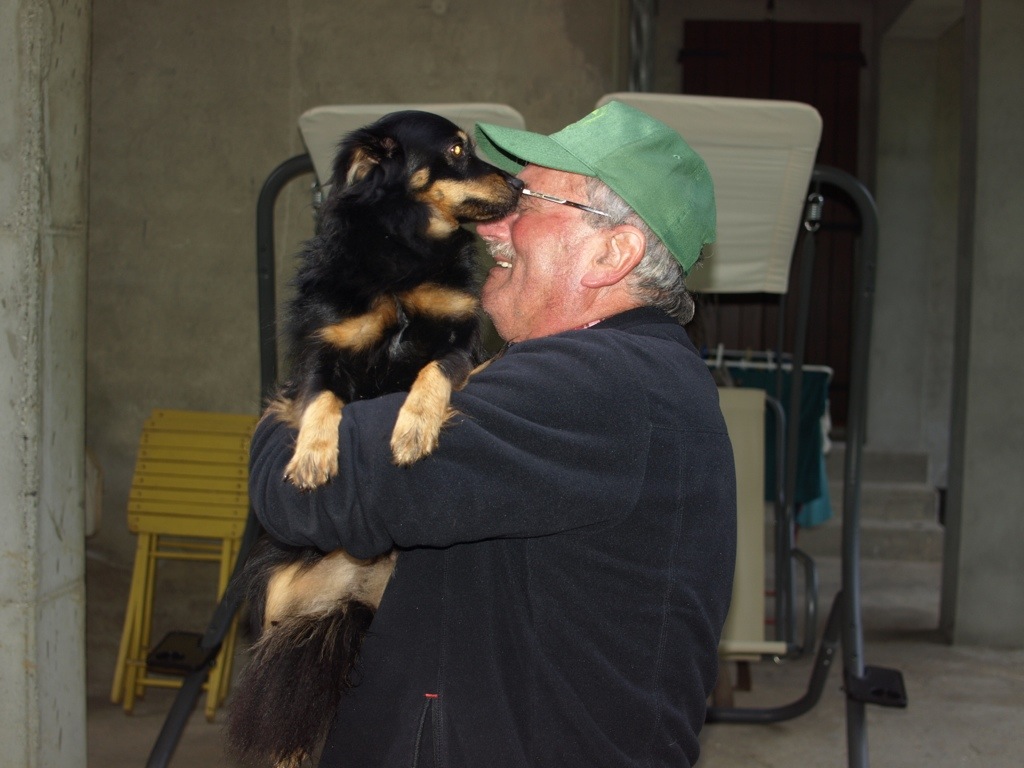
Here we are with Boris’ mom, sister and Rosie.
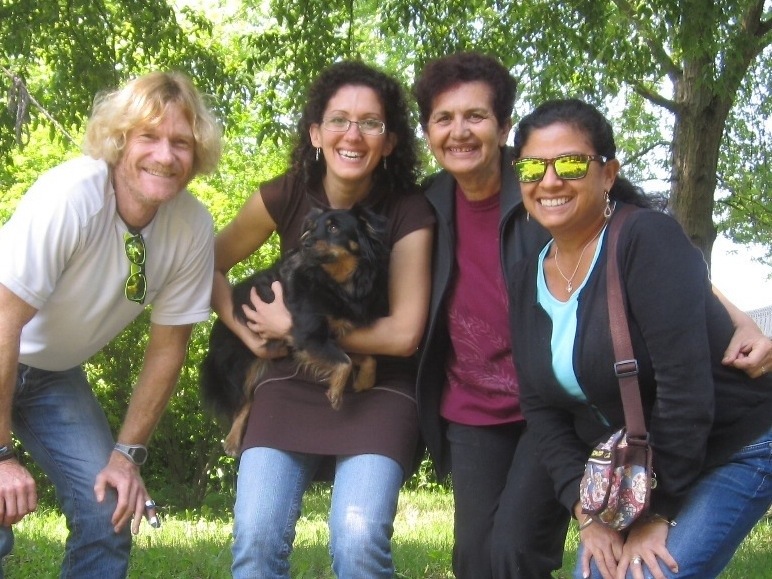
Both a marathon and International food fair were held in Padova’s main square on the days we were there. This square is notable for being the second largest in all of Europe. (Only Red Square in Moscow is larger.)
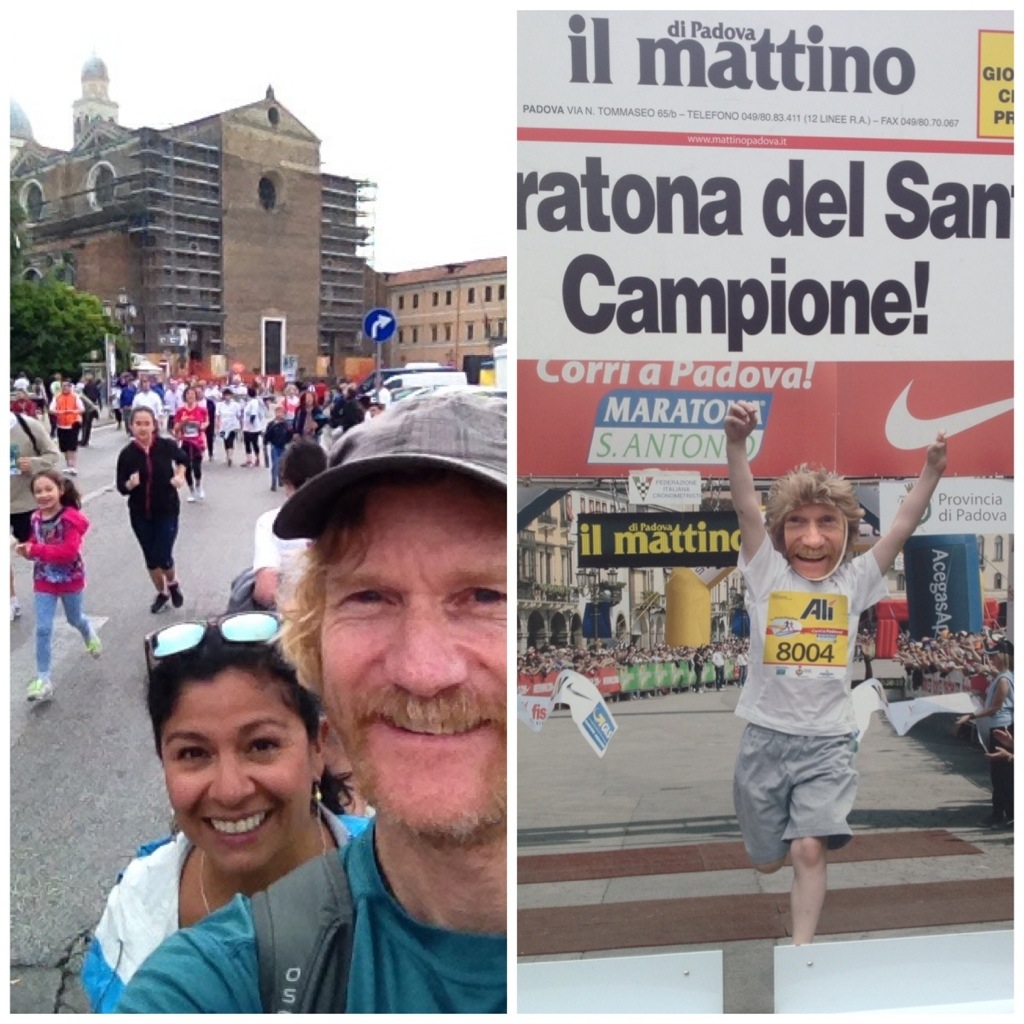
The largest paella skillet the world has ever seen!
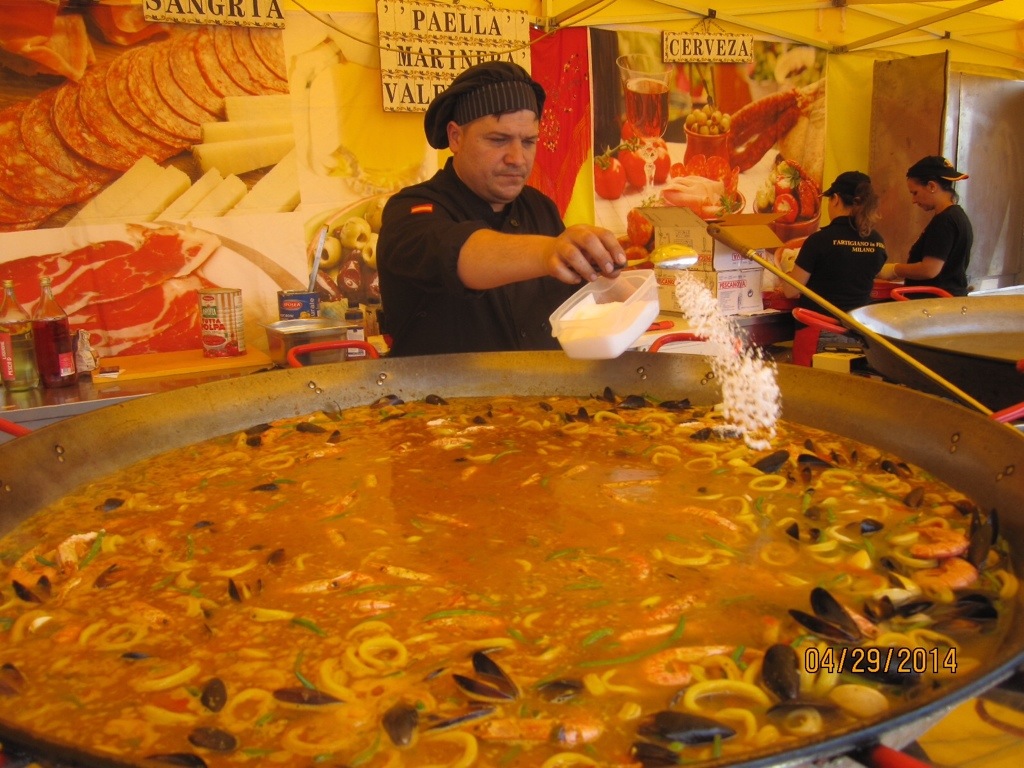
This is my last post on Italy. (Or is it?) We criss-crossed the country for almost six weeks and absorbed hundreds of new and fantastic experiences. And still we realize there is so much more to see and do. Of course, that can be said about all of the places we have traveled. Sometimes the hard truth feels like a curse- you can’t see EVERYTHING. We remain thankful and humbled by what we are doing. So few in this world will have the opportunity to spend two weeks in Italy, much less six.
From Italy, we travel to Slovenia. (That post went up previously.) Hope you are still with us.

